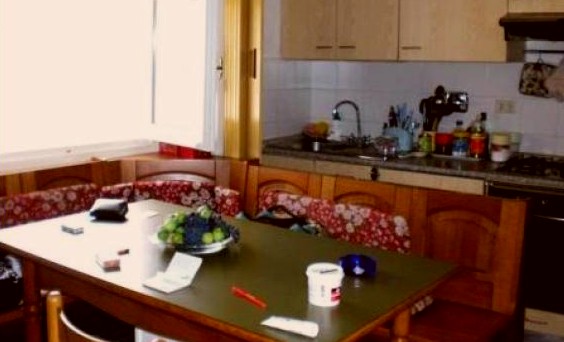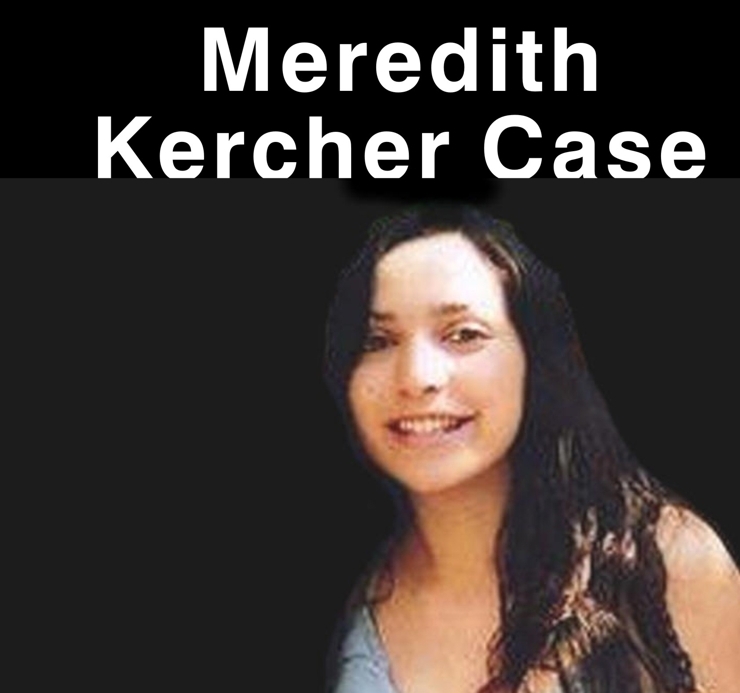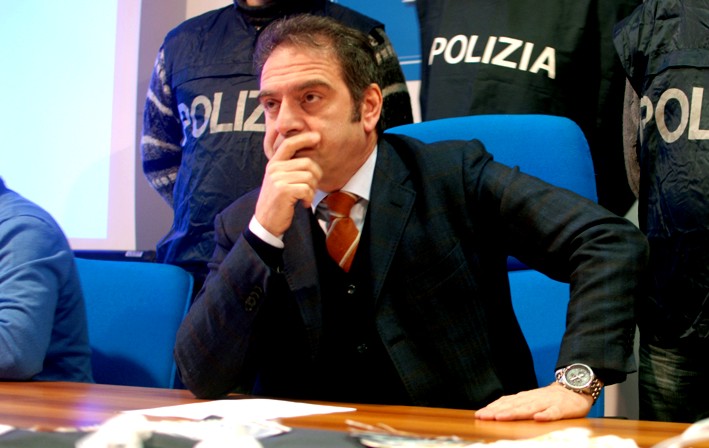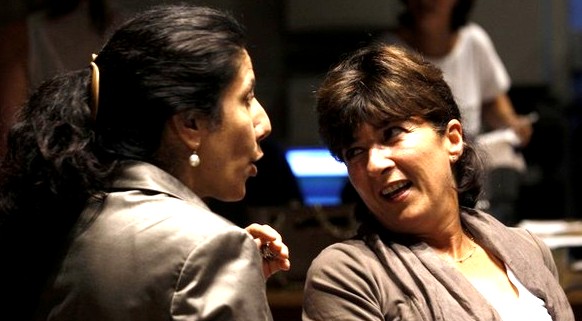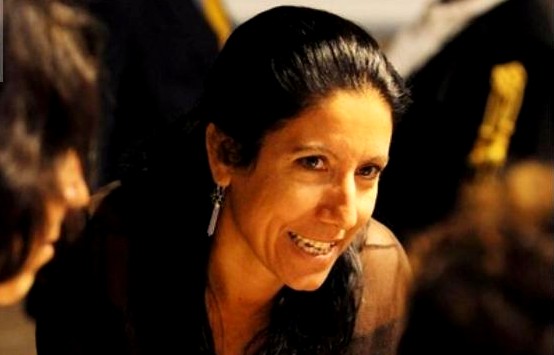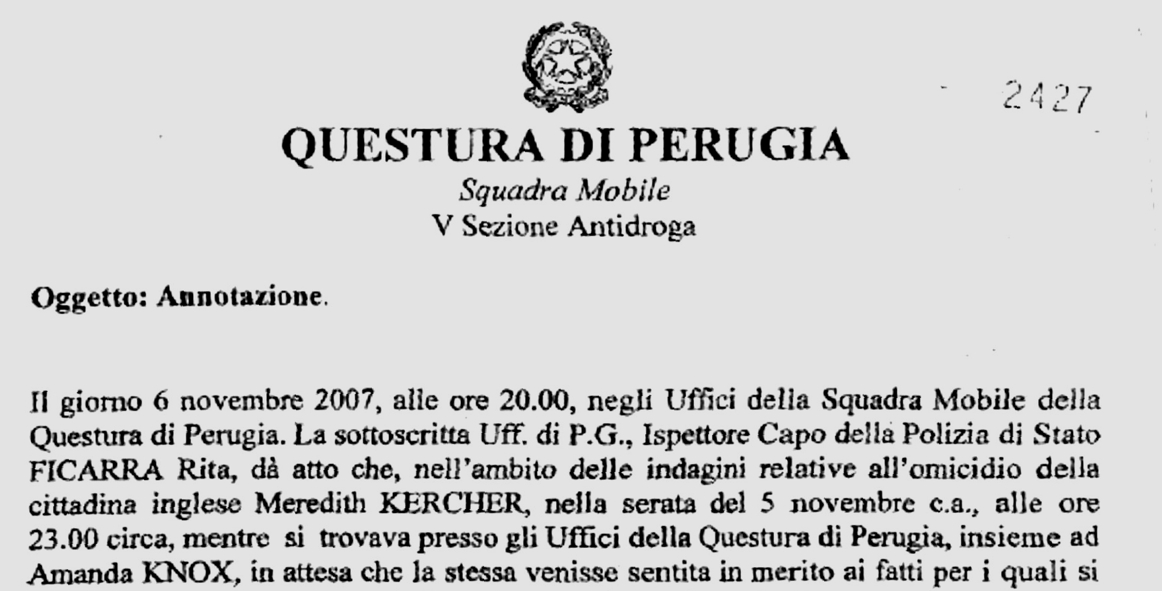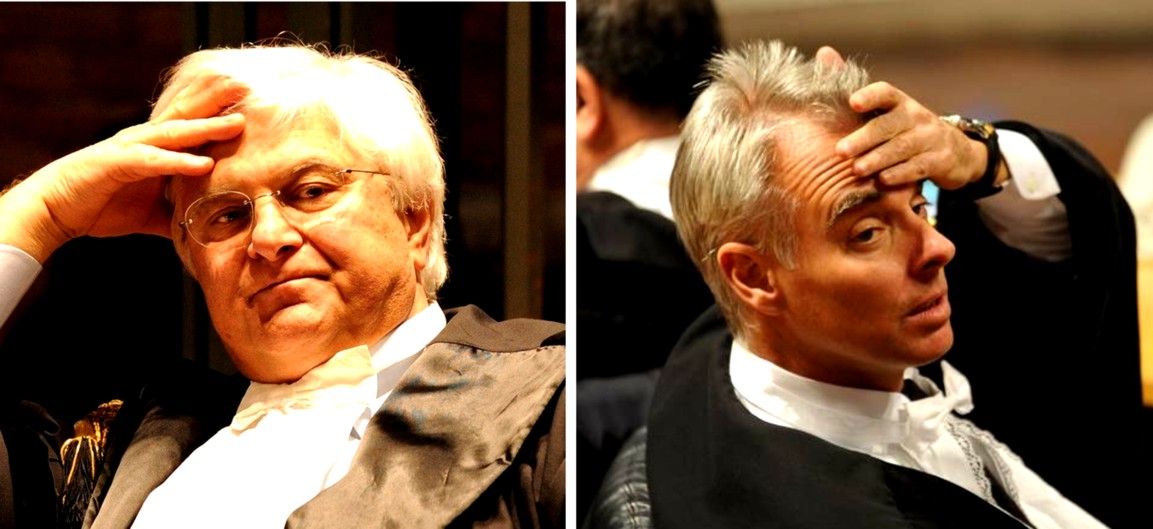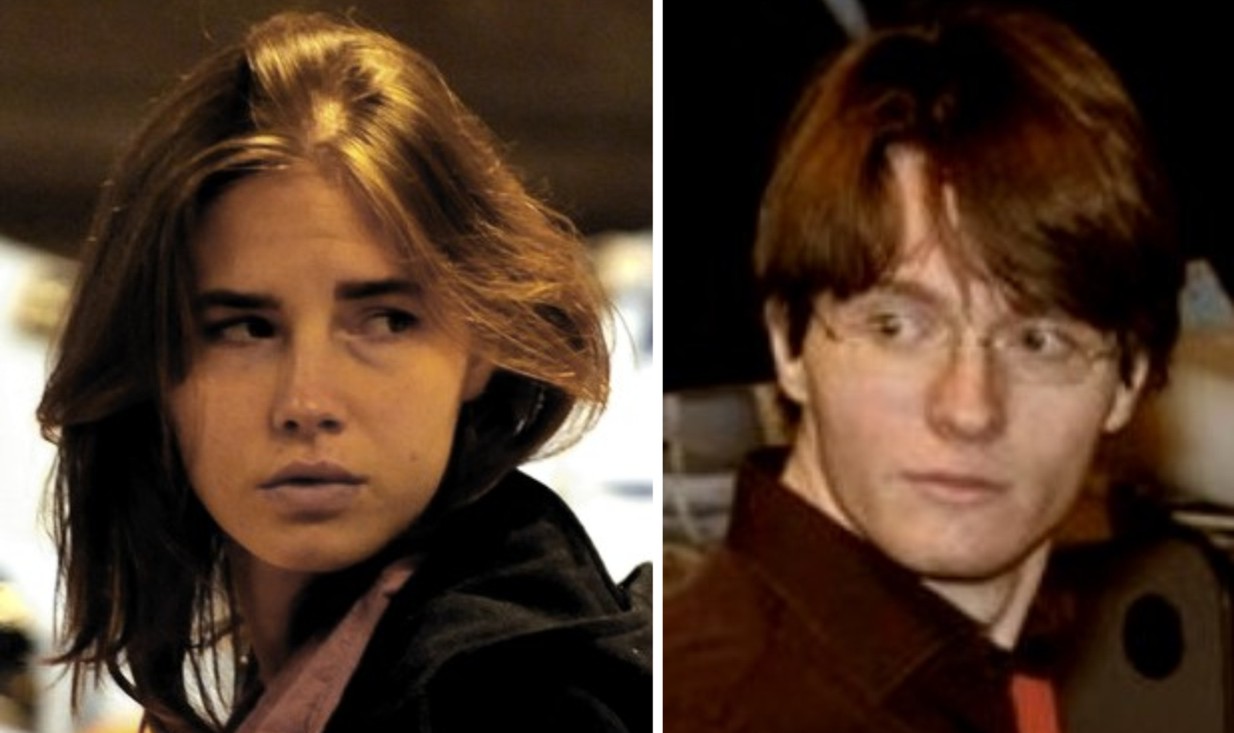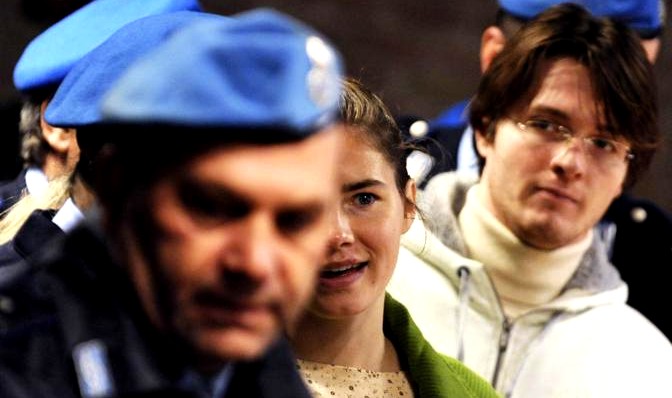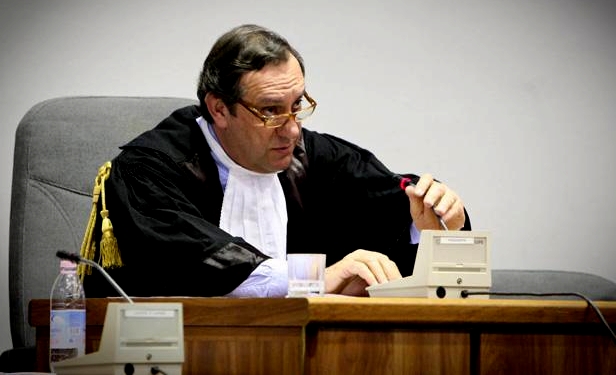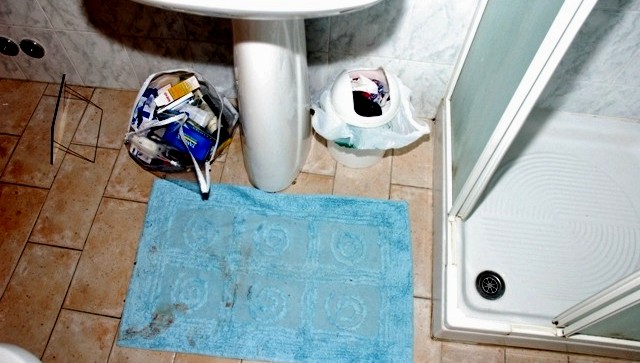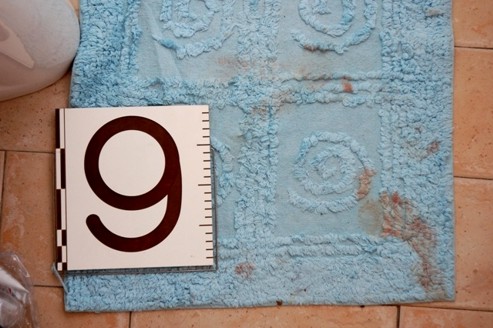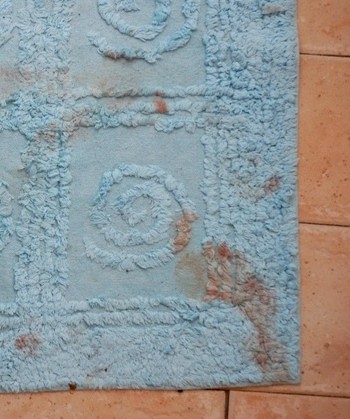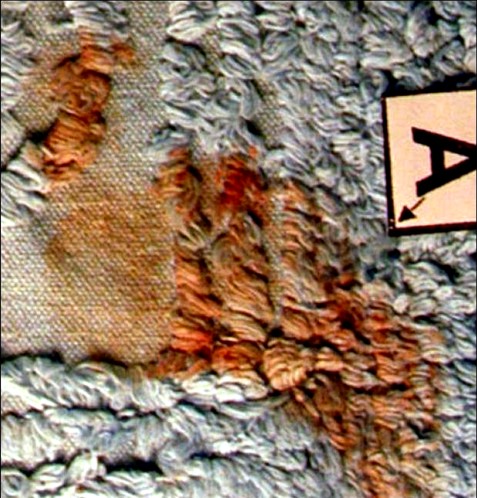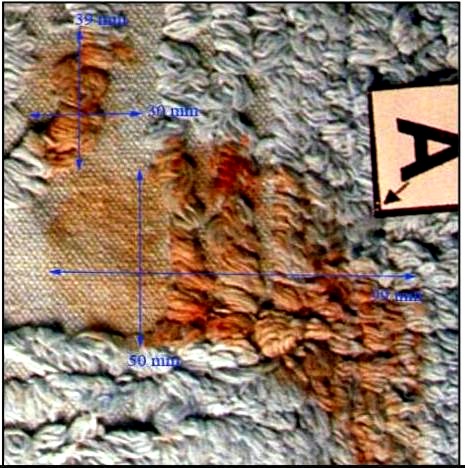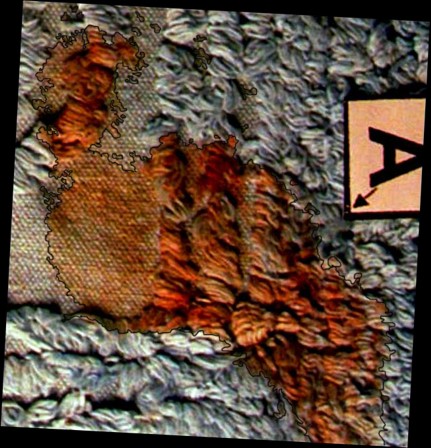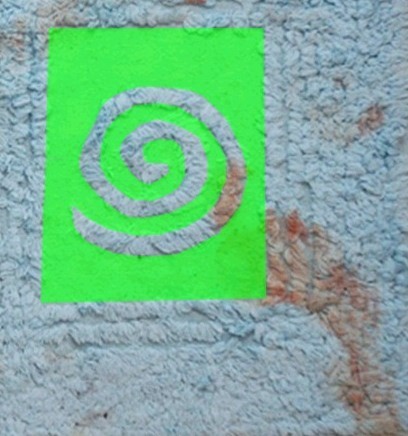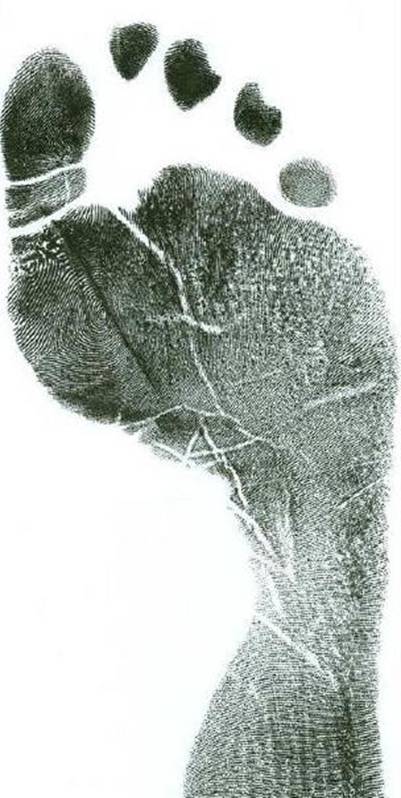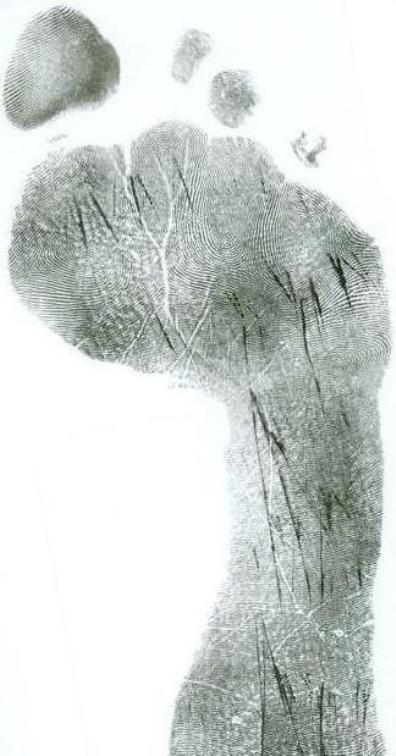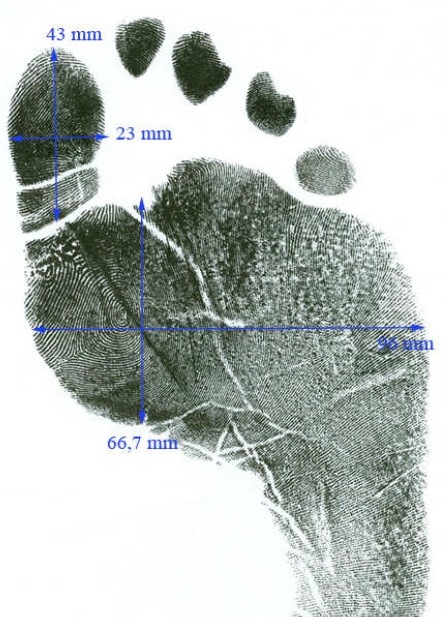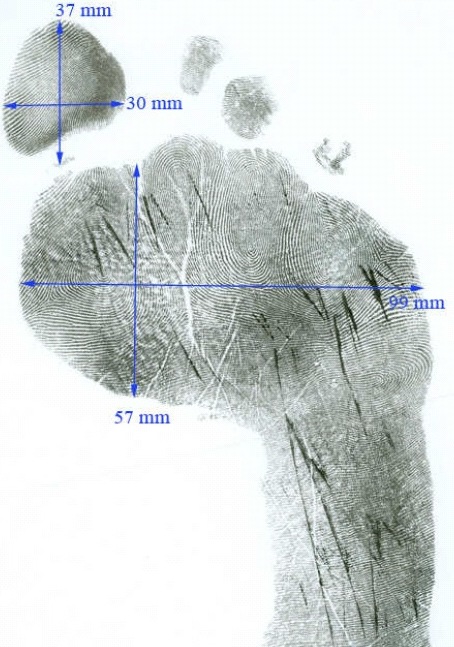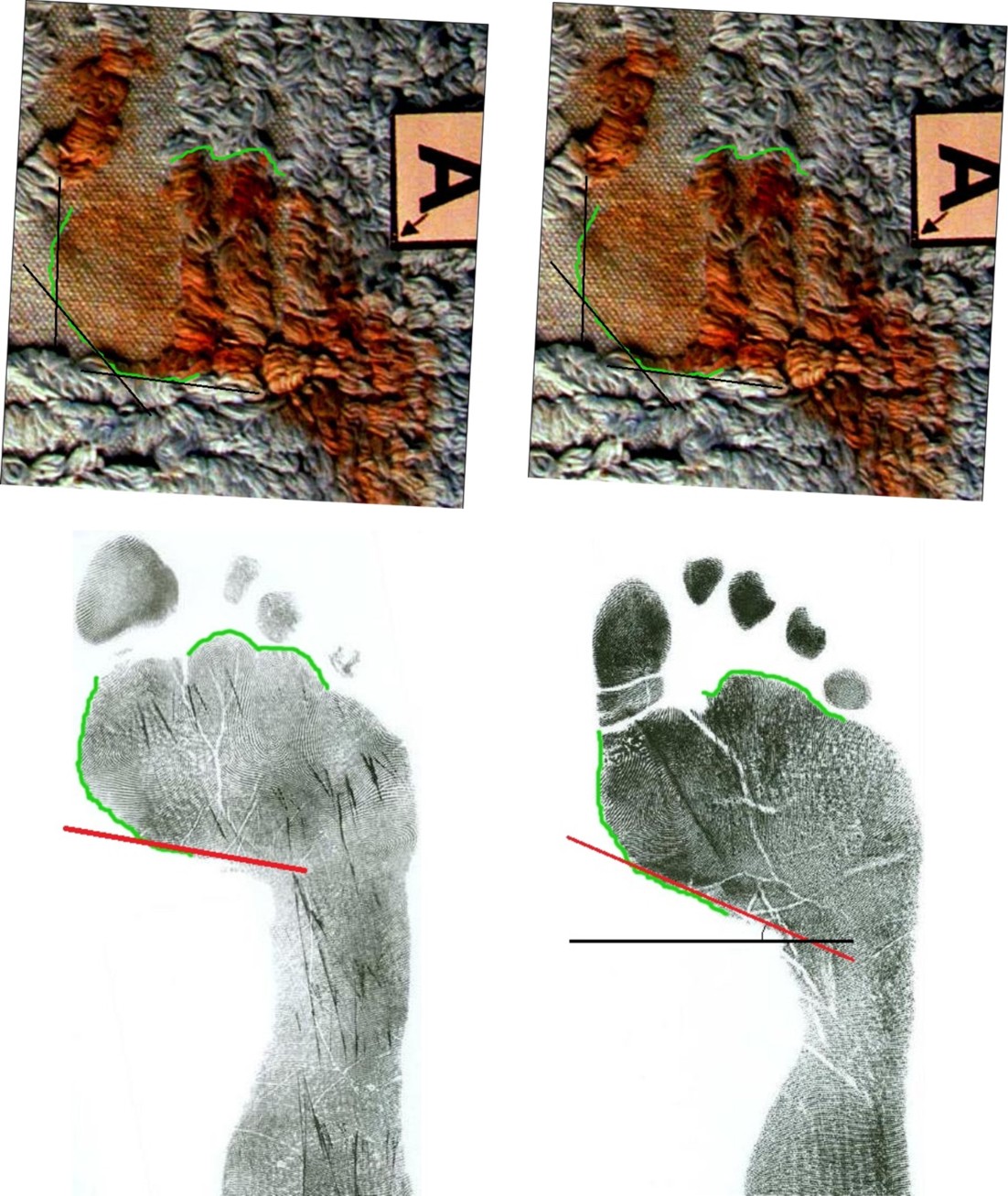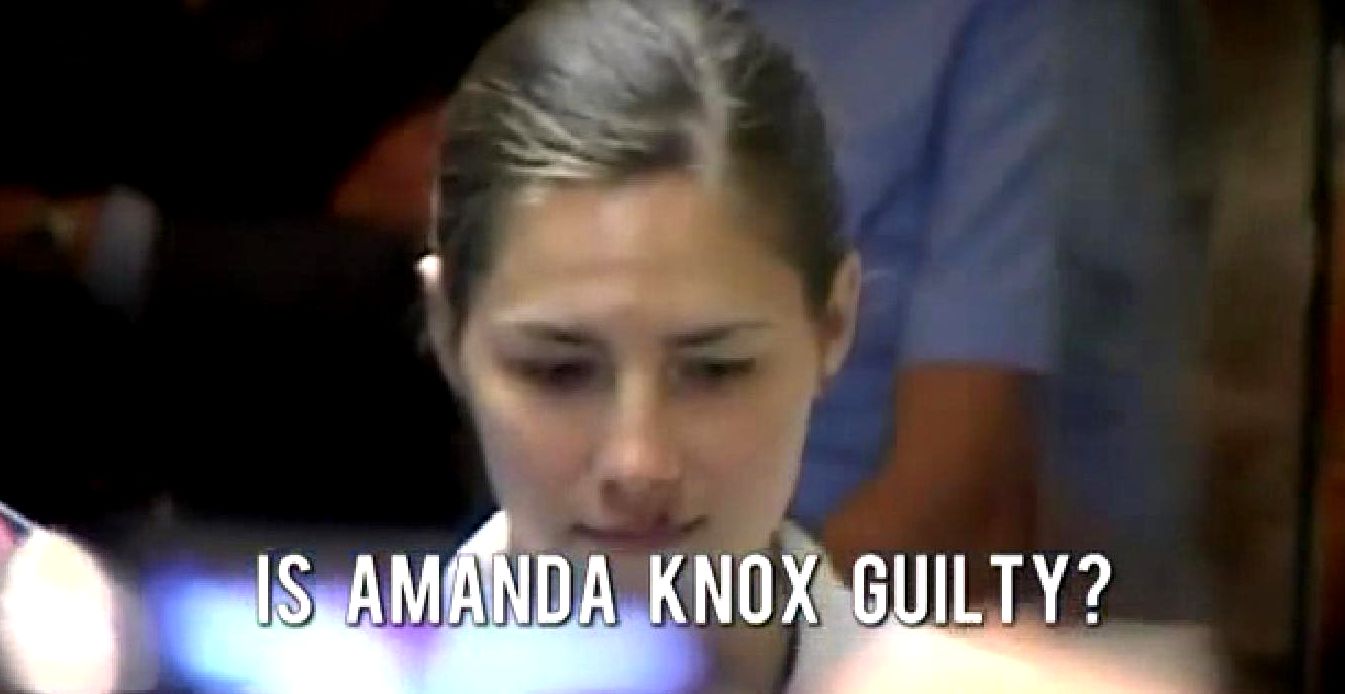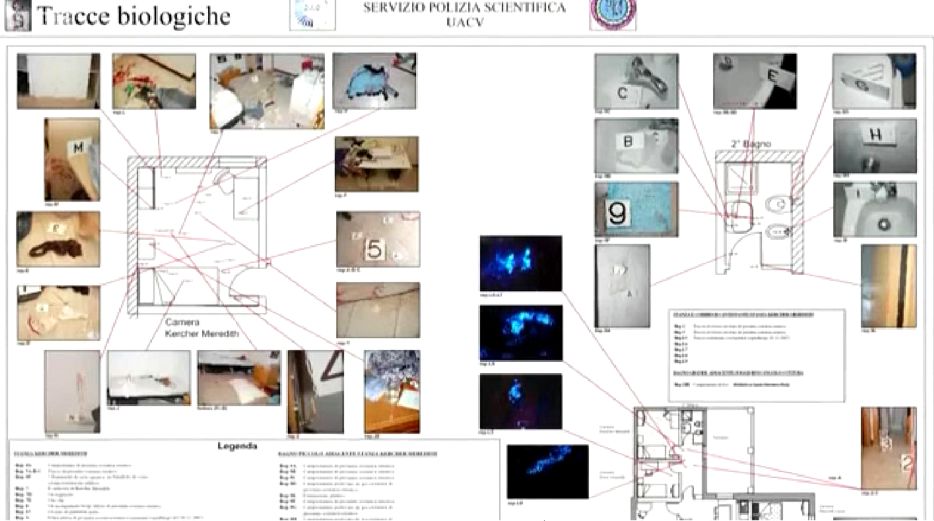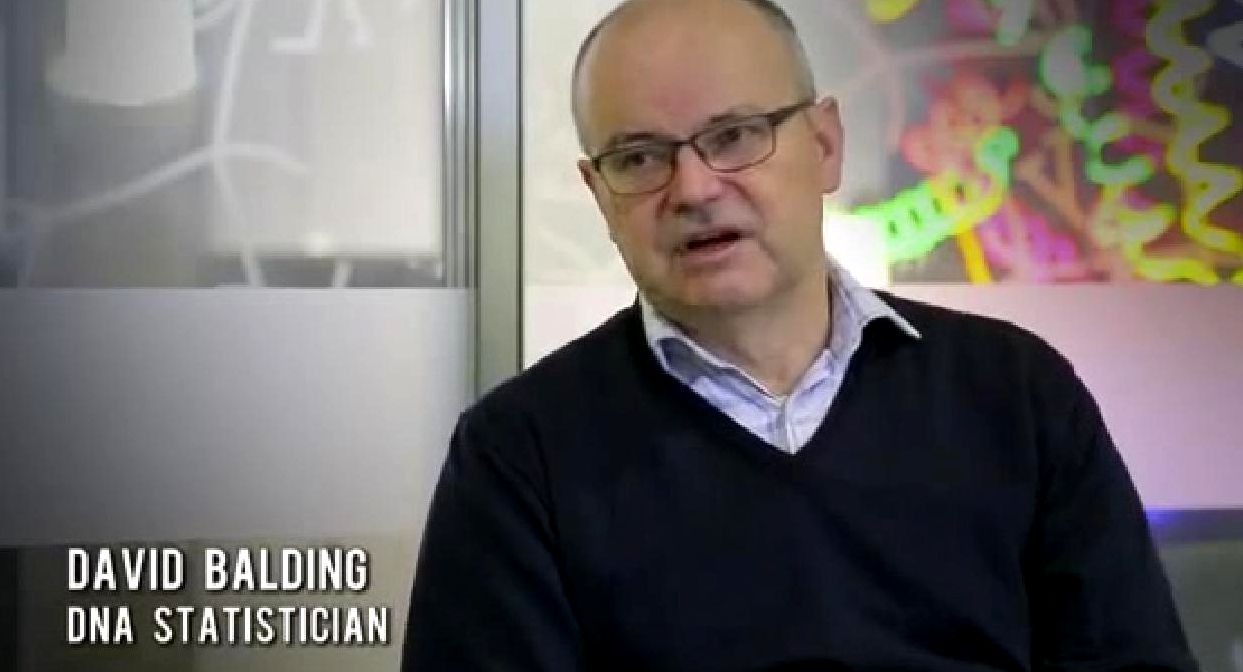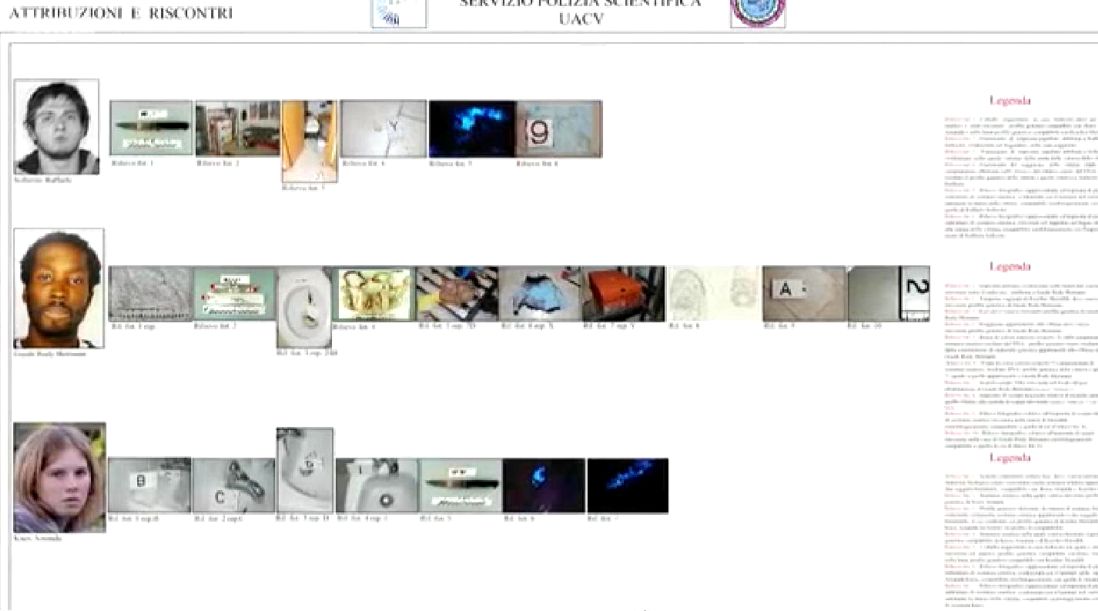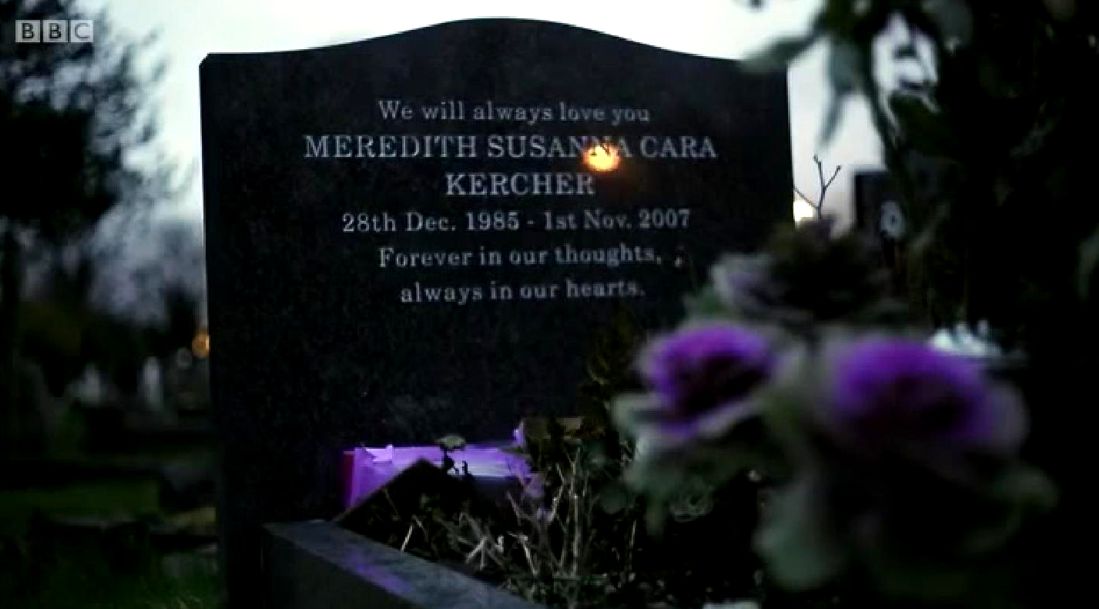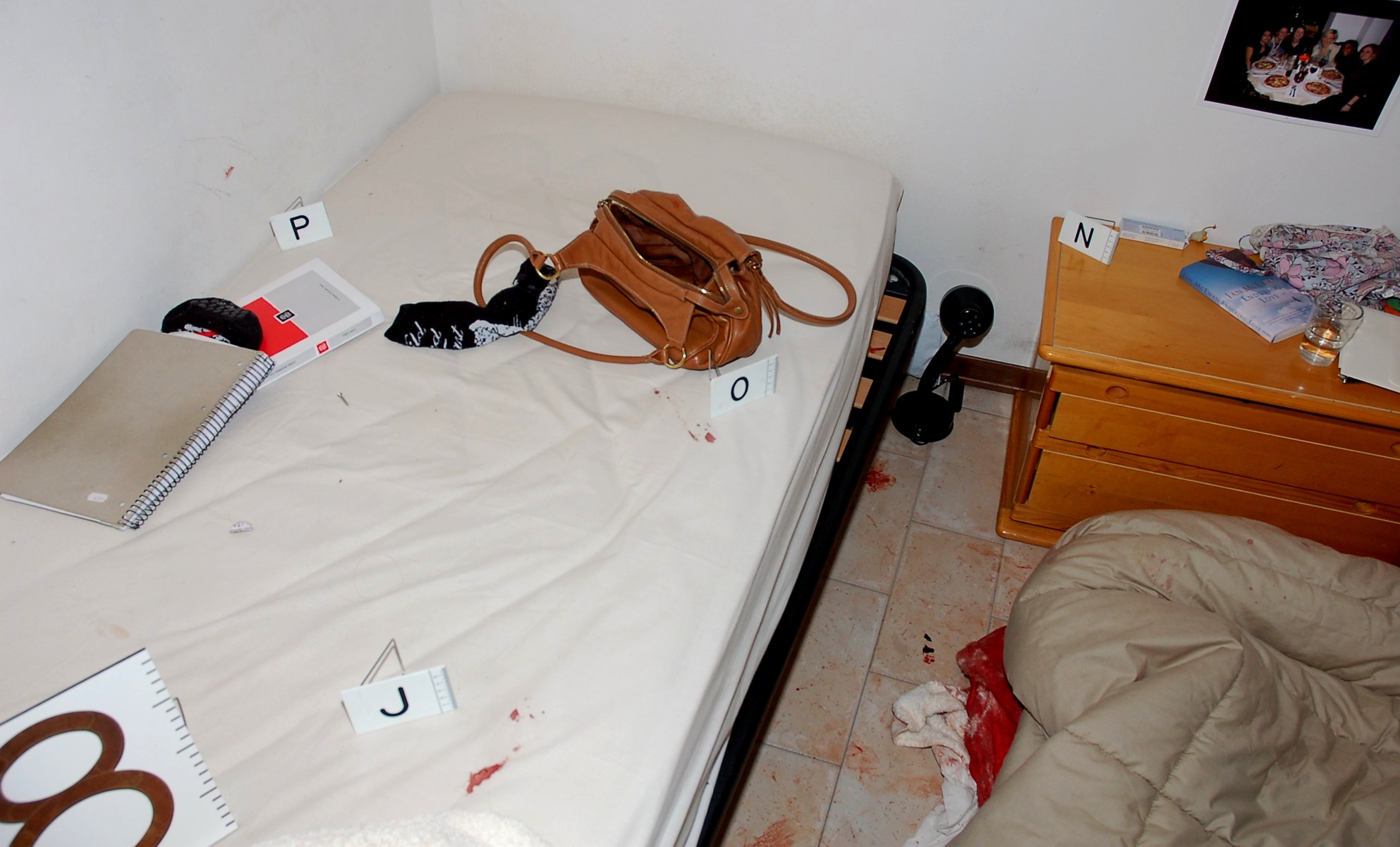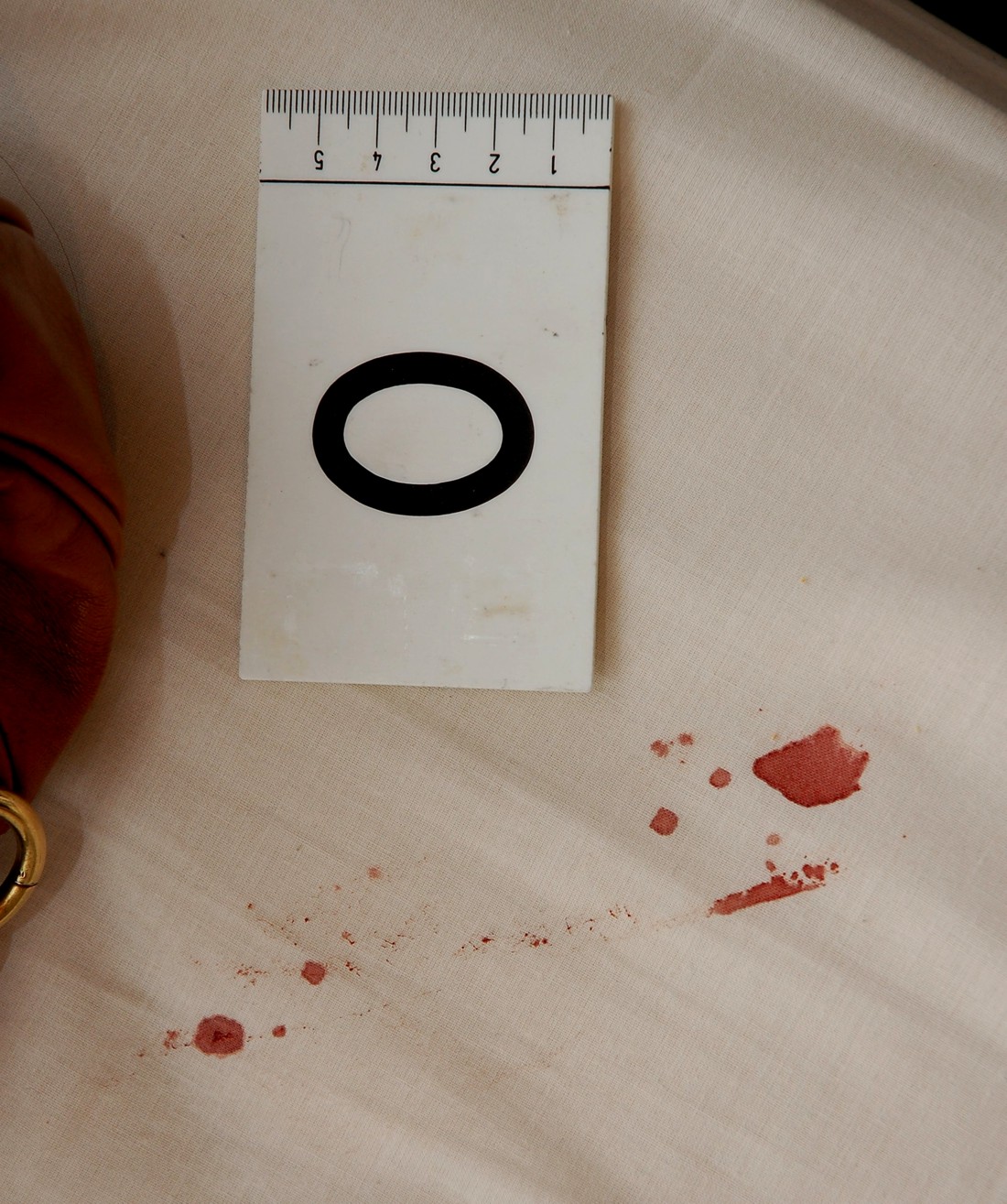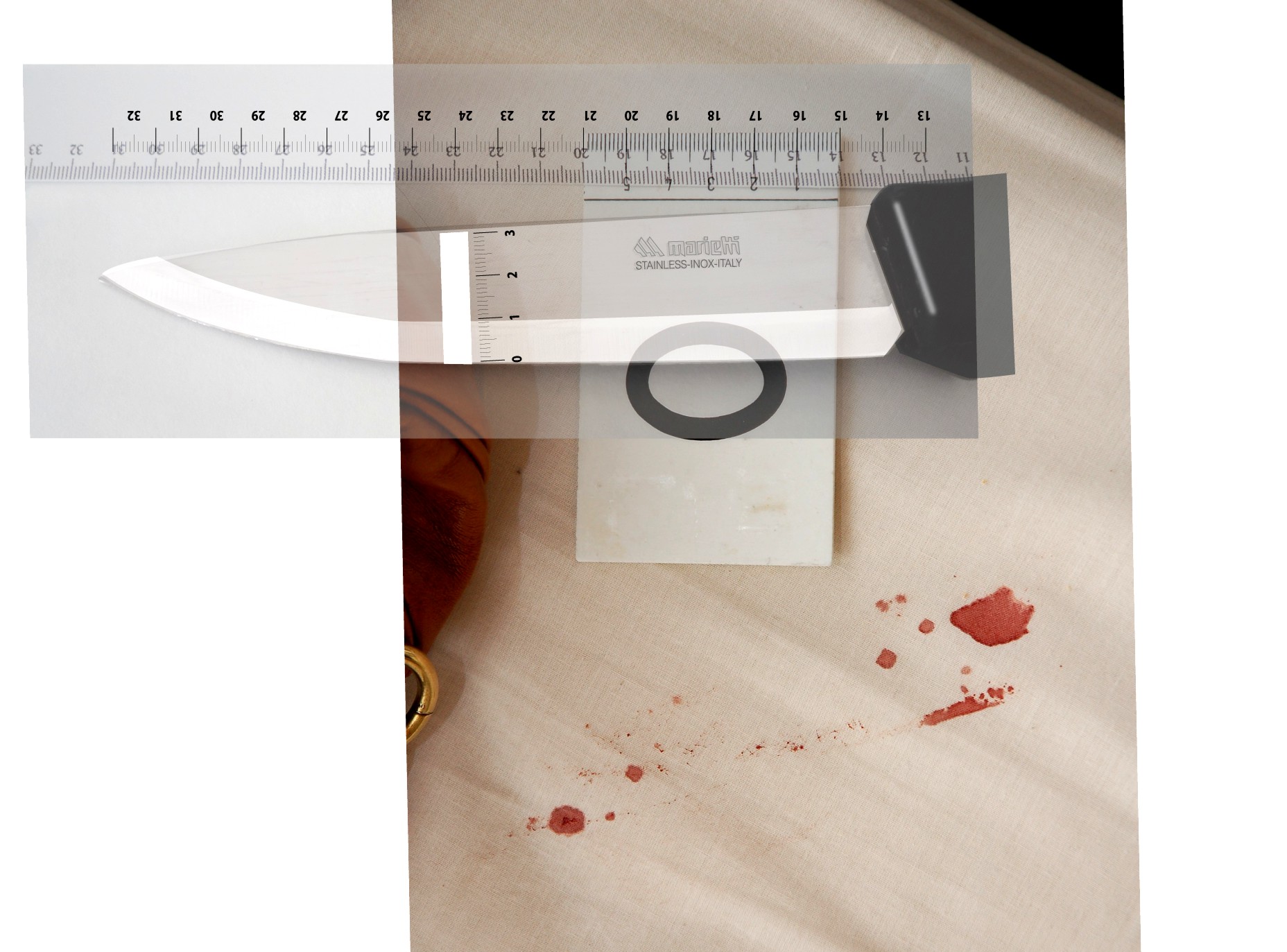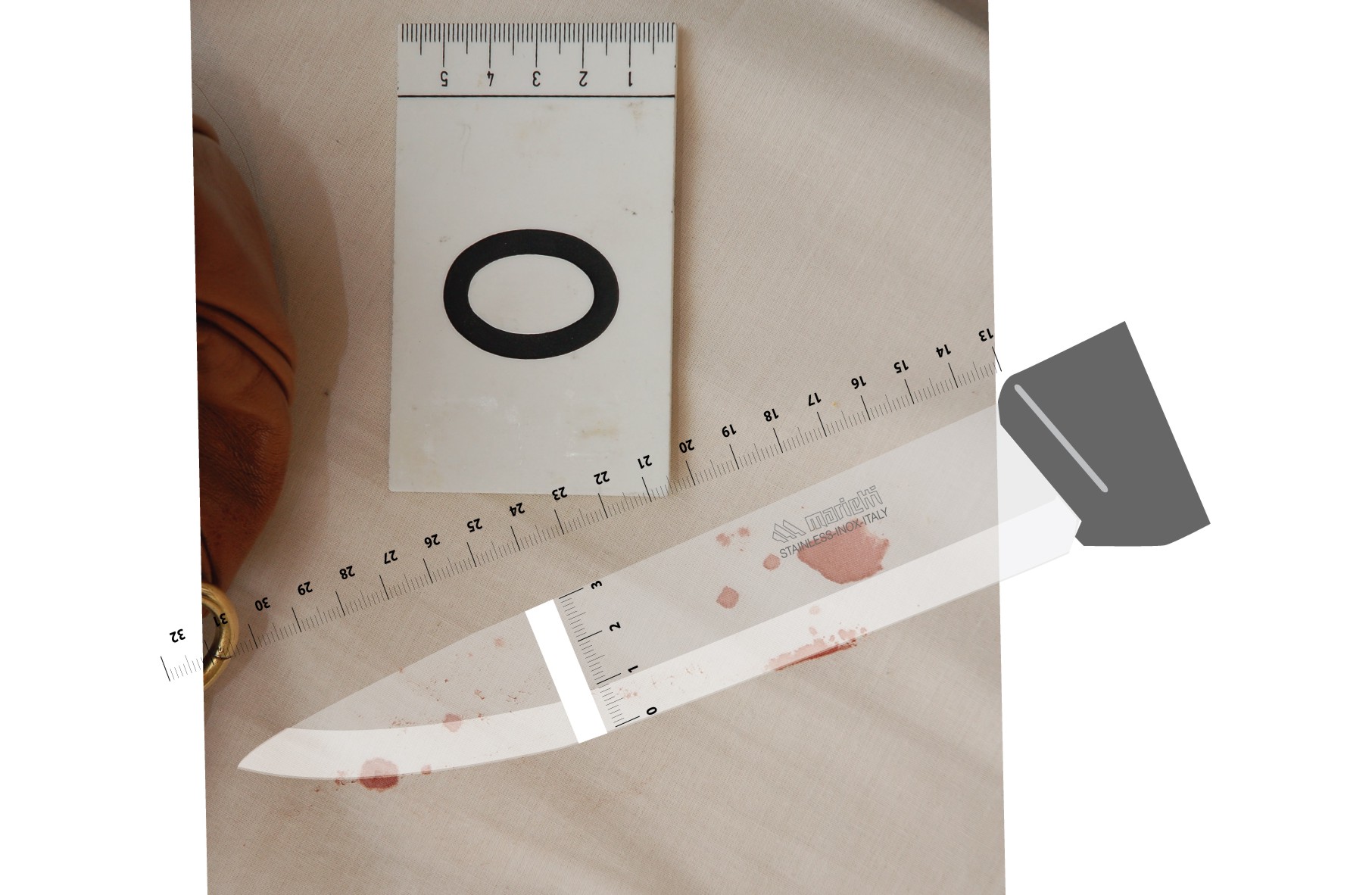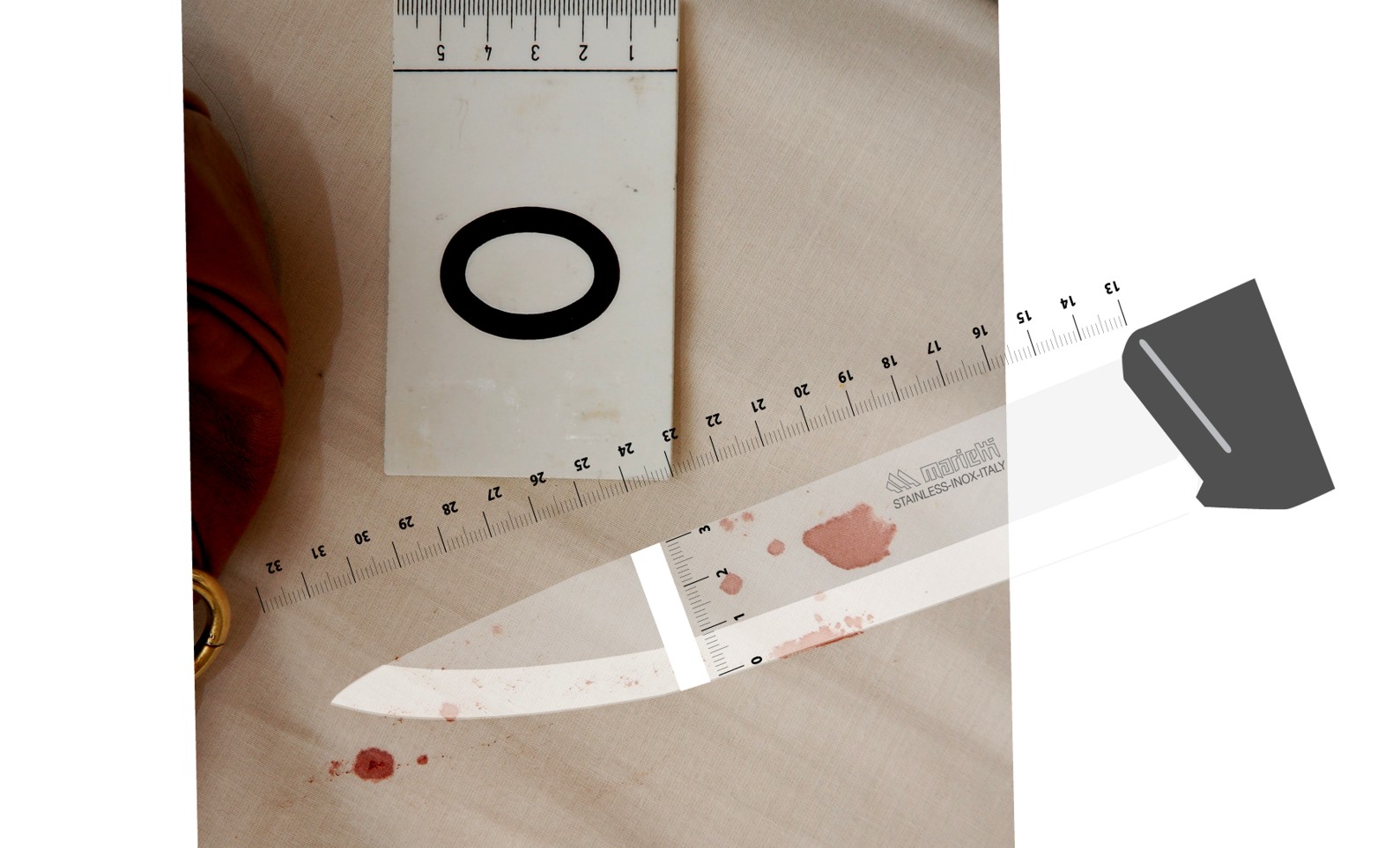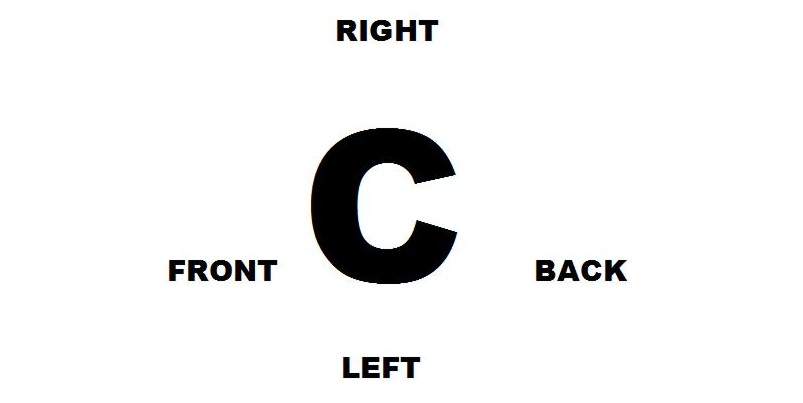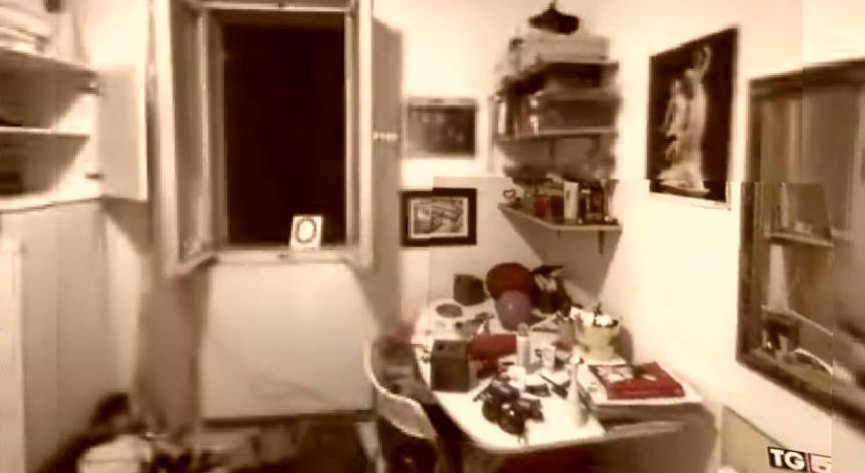
Headsup: In the US, the bizarre AP report, carried by just some of the media, and a delusional, highly defamatory rant in The Atlantic, seem the only major questionings of the Florence and Rome guilty verdicts so far. There are other developments we wish to report next though we'll keep an eye on this.
Category: Evidence & Witnesses
Wednesday, October 29, 2014
Analysis #3 Of Testimony Of Dr Chiacchiera, Organized Crime Section: Contradictions Between RS & AK
Posted by Cardiol MD
1. Overview Of This Series
In 2007 Dr Chiacchiera was the Director of the Organized Crime Section and the Deputy Director of the Flying Squad.
He was one of the most senior and experienced law enforcement officers to testify at the trial. His testimony and his cross examination by the defenses occupied a lot of time of the court late in February 2009. He covered the following ground.
(1) He found Knox and Sollecito uncooperative when he asked them questions.
(2) Saw evidence contradicting any lone burglar theory and indicating that the “break-In” to Romanelli’s room was faked.
(3) Phone records and the police investigation into the accused phone activity the night of the murder.
(4) Discovery of pornographic magazines at Sollecito’s house.
(5) Details of how the large knife, Exhibit 36, was collected from Sollecito’s and the evidence that it is the murder knife.
Dr Chiacchiera was submitted to cross-examination on the above 5 items by 4 Attorneys for the Defence of Knox and Sollecito, by 2 Civil Party Attorneys, and to Re-examination by the Prosecution. He had a gruelling time as a witness.
All the translation is by the ever-dedicated main poster ZiaK. This series is highlighting some key portions. Here is the full 50-page transcript which will be posted in the trial testimony area of McCall’s great Wiki.
(GCM=Giancarlo Massei; MC=Manuela Comodi; MaCh=Marco Chiacchiera; GB=Giulia Bongiorno; DD=Donatella Donati; CP=Carlo Pacelli; LG=Luciano Ghirga; CDV=Carlo Dalla Vedova; FM=Francesco Maresca)
Continuation of Dr Chiacchiera’s Evidence-in-Chief:
MaCh: It emerged that normally Sollecito kept his cellphones, and also Amanda Knox, they kept their cellphones on until a late hour, evening, [sic] there is no telephone traffic from 20:40 hours. A thing of this “¦
{Witness begins Testimony re cellphones and is interrupted}
MC: But did this emerge from the declarations or did it emerge from the analysis of the [phone] records in the preceding days?
{Examiner interrupts witness with good Q re source of telephone-usage information}
MaCh: It emerged from the analysis of the [phone] records in the preceding days.
{Witness answers clearly}
GCM: Excuse me. Let me understand. In other words you say: the cellphone was switched off and there was no telephone traffic, these are two different things.
{Court asks good clarifying Q}
MaCh: I’m saying, Mr President. Two things. The first, normally Sollecito’s telephone and the telephone of Amanda, were switched on until the late hours. The fatal evening, they were switched off from 20:42 hours until “¦ one [of the phones] from 20:42 onwards and the other from about 20:50 onwards. One. Two, the traffic “¦
{Witness is Answering Court's Q in 2 parts. When he gets to his part #2, Court interrupts}
GCM: Before going on to “Two”, excuse me: “normally” ““ what does that mean? You had “¦
{Court is asking good Q re witness's Part #1, but is interrupted}
MaCh: We had done a comparative analysis of the telephone traffic of that evening with the telephone traffic of the preceding evenings. Shall we say the habits ...
{Witness interrupts Court with narrative response, and is also interrupted}
GCM: And so the “normally” emerges from this?
{Court interrupts witness's response with good Q}
MC: How many evenings? If you recall, or not?
{Examiner asks witness relevant Q, adding redundant Q}
MaCh: Months, no “¦ honestly, I don’t remember how many [evenings], but months.
{Witness stumbles, seeming uncertain re 'evenings' vs 'months'}
MC: I mean to say, not “¦
{Examiner preambles re her redundant Q but is interrupted}
MaCh: Not three days, no. The telephone traffic habits were evaluated. [This is point] one. [Point] Two, the element that emerged, that contradicted the declarations, I can’t report on the declarations but I can report on the element that contradicted [sic. i.e. provided the contradiction], that in effect no telephone call had arrived at 23:00 hours, as had been declared: on the phone line that was declared to have received that “¦ the recipient of that very phone-call. Another element: no interaction with the computer emerged, unlike what was declared. So there were a few objective elements of comparison from the analysis and from the technical checks that contradicted what had previously been revealed.
{Witness interrupts Examiner with narrative response to Examiner's Q, witness indicating contradiction between suspects' declarations and objective records of telephone and computer activity}
MC: For Amanda Knox, were there incongruities of this type?
{Examiner asks if incongruities/contradictions existed for Amanda Knox}
MaCh: Yes, there were incongruities because Amanda Knox was, how to say, contradicted by Sollectio, and then she contradicted herself, if I may “¦
{Witness answers affirmatively, amplifying applicability both to Sollecito & Knox, but is interrupted}
GB: President, if we continue in this way, then we might as well do the old [trial] procedure.
{Giulia Bongiorno, Sollecito's lawyer interjects, objecting-subjectively to Court, but submitting no legal basis for her objection}
GCM: Excuse me, please.
{Court seems to politely rule GB out-of-order}
MaCh: The elements, these are [sic], Mr President, I don’t know how to do.
{Witness communicates uncertainty to Court}
MC: But it is so difficult, however.
{Examiner chimes-in apparently commiserating with her witness's uncertainty}
MaCh: Mr President, I really don’t know what to do.
{Witness seems to repeat statement addressed to Court, who possibly interrupts}}
GCM: Excuse me”¦
{Court seems to begin response to Witness, but is possibly interrupted}
MaCh: If I have to describe the investigation activity “¦
{Witness may be interrupting Court or is continuing Witness's unfinished statement to Court}
MC: He’s not referring to declarations.
{Examiner chimes-in with his opinion re Witness's reference to Defendants' contradictions/incongruities - GB's interjection seems to have side-tracked court procedure}
GCM: Regarding these declarations, you can report on this [sic. i.e. in this instance?], and with regard to Raffaele Sollecito, you reported ““ citing the telephone traffic and citing the use of the computer. There now, and this is one point. With regard to Amanda Knox, you cannot report the declarations. But you may, however, say ““ following these declarations ““ what type of investigations you carried out, and the outcome of these. So, following the declarations given by Amanda Knox, did you do similar investigations, as [those you did] for Sollecito Raffaele on the [phone] records? Or was there nothing to do, except to “¦?
{Court rules on subject of testimony re Defendants' declarations, seeming to rule admissibility of Sollecito's declarations re telephone traffic and computer usage, but inadmissibility of Knox's declarations. Court does seem to permit description of investigations that followed Knox's declarations, without describing Knox's actual declarations, and Court asks whether phone-record investigations similar to those done for Sollecito were done for Knox.}
MaCh: Mr President, all the necessary checks were made, but in that immediate moment the most important element “¦ that is to say, in [this] place [NdT: i.e. “in this Court”], in this moment, in this place, that is to say, when they were “¦ I said [that] when the arrests were made, I don’t, I don’t know how to do, however, the incongruity of the declarations with the facts that we had found, and with the declarations that Sollecito had previously given us, [this] was the most important element. I don’t know if I have managed to “¦
{Witness seemingly responding to Court that he doesn't know how to deal with the declarations, is interrupted.}
GCM: No, excuse me (overlapping voices). So, with regard to Raffaele Sollecito, we have
understood these checking activities were carried out on the declarations made, the verification activities carried out, and [that’s all] very well. With regard to Amanda Knox, if you also carried out “¦ maybe there were no objective elements for possible checking, there were no “¦ or else, there were activities carried out of “¦
{Court, interrupting over witness's testimony, seems to be explaining his Q to witness, but is interrupted by witness}
MaCh: Later, there emerged a series of further elements.
{Witness interrupts with statement re unspecified further elements}
GCM: Not evaluations on the congruity, incongruity, likelihood, these are evaluations and will be done, there you go, comparably. I’m thinking of the [phone] records, of the use, if she had given indications on the basis of which [you] could carry out investigative activity “¦
{Court seems to want evidence in Knox's phone records justifying further investigation.}
Here ends the Testimony Of Dr Chiacchiera covering the relevant Phone Records, elicited by the Prosecution.
Next comes the Testimony Of Dr Chiacchiera elicited by the Prosecution, covering Discovery of pornographic magazines at Sollecito’s house, Details of how the large knife, Exhibit 36, was collected from Sollecito’s and the evidence that it is the murder knife
Wednesday, October 22, 2014
The Hundreds Of DNA Samples Taken And Analyses Done, Shown In Table Form
Posted by Olleosnep
1. Even Excluding DNA, There’s Massive Evidence
The DNA Spreadsheet will open using Microsoft Excel or alternatives such as the free OpenOffice. Please note the table is very wide.
Contrary to foolish claims elsewhere, there’s a great deal of evidence implicating not only Guede but also Knox and Sollecito in the brutal murder of Meredith Kercher.
The bulk of the evidence is circumstantial, and encompasses different categories of evidence, such as: wounds sustained by Ms. Kercher; ear and eye witnesses; footprints; shoeprints; fingerprints and lack thereof; blood patterns; evidence that Ms. Kercher was moved after she died; misplaced items in her room and in the cottage; evidence of partial clean-up; cellphone records; computer evidence; evidence of staged break-in; lack of evidence of actual break-in; statements by all three defendants; lack of alibis; lies by Knox and Sollecito; etc.
A lot of the most critical evidence has been repeatedly reviewed by many different judges involved in the case, from Judge Micheli to Judge Nencini, and led to the unanimous verdict at trial now confirmed by Appeal Judge Nencini.
2. The Massive DNA Evidence Is Equally Conclusive
We have carried nearly five dozen DNA posts previously on the Scientific Labs work in 2007-09, the discredited judges’ consultants work in 2011, and the Carabinieri Labs work in 2013.
They go to prove that some of the most damning evidence comes from the DNA traces found on hundreds of samples tested by the Forensic Genetics department of the Italian Scientific Police squadron in Rome. The department was presided over by the biologist Dr. Stefanoni at the time [seen above left with Prosecutor Comodi] who acted as the department’s principal technical director.
The results of Dr. Stefanoni’s work were collected in several reports issued by her lab during the 2008-2009 investigation and trial phases. Of these reports, two reports in particular comprise a “˜survey’ of the work performed by her lab at the time: the “Genetic Tests” report (GT), and the “Stato Avanzamento Laboratorio” report (SAL). Both reports are available on the Meredith Kercher Wiki.
These two reports are notable for highlighting the large quantity of testing done and the significant number of objects and items sampled. In addition, the reports not only look at items with blood traces, but also traces of skin cells, feces, semen, and above all, hair traces, an aspect of the evidence that has been largely glossed over in the testimony and in the motivation reports.
3. For The First Time A Complete DNA Roadmap
In order to better understand the extent of the work and types of the tests performed, I have taken the data that can be gleaned from these two reports and placed them into a single spreadsheet, in order to create a kind of “˜database’ of the testing and analyses done.
This spreadsheet uses the GT report as a basis, followed by additional information obtainable from the SAL report.
The spreadsheet is basically a list of each sample, object and/or test done by Dr. Stefanoni’s team. These include tests done for DNA analysis, testing done for Y haplotype analysis and hair sample analysis. In the SAL report, it is shown that a few samples were tested multiple times. The list also includes some objects which were not analyzed at all, or were only analyzed up to a point.
It should be noted that there are a few difficulties with the reports. The GT report references an associated photographic report that has not been made available. The GT report is also missing a couple of pages and the descriptions of the results are at times inconsistent. Other times it can be tricky to follow exactly what tests were done. Because the report is a black and white scan of an original likely printed in color, some of the information in the tables is difficult or impossible to read. And some traces are missing result tables altogether.
The SAL report is also incomplete. The luminol samples at the cottage and all the samples taken at Guede’s apartment are missing, as are other samples. The scanned pages in the PDF are out of order, making cross-checking with the GT report tedious. The SAL report does not have all the test data indicated in the GT report. For instance, the human antibody tests noted in the GT report are not indicated in the SAL report. The data in the SAL report is often not as complete as one might think. As an example, all hair samples were logged and assigned a sample number. But those hairs that had no DNA extracted, do not have a date of when they were analyzed. Presumably they were all analyzed as a set for each item, given that the sample number is frequently numerically sequential (i.e. 47084, 47085, 47086, etc.). But it’s not possible to say with certainty when the hairs were reviewed from the report.
Nevertheless the GT and SAL reports do have significant information that is of interest to the case. Hence the spreadsheet.
4. Some Guidance For The Use Of The Spreadsheet
Spreadsheets can be useful for presenting various pieces of data together “˜at a glance’. But the real power of spreadsheets for this type of data is that rows can be sorted in order to group similar pieces of data together, allowing one to get a overview of subsets of data.
So, for instance, if one wanted to order all the rows by “˜sample number’ to see the sequence of how they were processed in the lab, one need only highlight all the rows (done by clicking on row number 5, holding down the “˜Shift key’ and paging down to the bottommost row), then go to menu option “˜Data’ and then “˜Sort’ and select the column or columns to sort by- “˜AF’ in the case.
Or perhaps one wants to sort by “˜DNA yielded’ and “˜building’ to see where someone’s DNA was found. Simply select all the rows again, select the menu option “˜Data’ and then “˜Sort’, and select the first column as “˜DNA yielded’ (or column AD), then select as the second column as “˜building (or column F).
To return to the original order, select all rows again and sort on column A.
Note that the first four rows in the spreadsheet are “˜locked’, in order to allow the column headers to be always visible. If one wants to unlock these rows, select the whole spreadsheet by clicking on the upper left corner of the window where the column header labels and row numbers meet. Once the whole spreadsheet is selected, go to “˜View’ option and select “˜Unfreeze panes’. For Excel version 2007 and higher, click on the little arrow to the right of “˜freeze panes’ button on the menu bar, and there will be the option to unfreeze panes.
If one is handy with Access, or any other database program, it should be possible to import the spreadsheet into that database program, allowing one to perform more powerful “˜queries’.
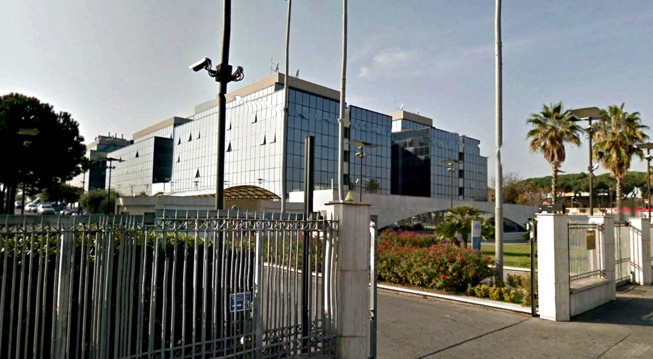
The Rome headquarters of the Scientific Police which work closely with the FBI
5. Explanations Of Some Of The DNA Data
The data in each column was obtained directly or indirectly obtainable from the two reports by Dr. Stefanoni’s team.
1) Column “˜A’ allows one to resort rows to their original order, which is based on the order of the “˜item number’ noted in the GT report.
2) “˜Item number’ refers to the actual piece of evidence, whether an object sampled onsite or an object that was bagged and taken to the lab, as noted in the GT report.
3) “˜Original item label’ is data provided in the first pages of the GT report, as a way to tie the evidence item back to evidence markers used at the crime scene, and visible in some of the crime scene photos.
4) “˜Page in attached photo report’ indicates that there is an adjunct “˜photo report’ Dr. Stefanoni provided that has not yet been released, and likely has photos of the evidence items “˜in situ’. This information is also noted in the beginning item lists in the GT report.
5) “˜Sample date’ is based on the dates noted in the beginning list in the GT report, indicating when the evidence item was sampled or taken from the crime scene. This is sometimes difficult to read, due to the fact that the report was apparently printed in color and the black and white scan hides or obscures some text and graphics.
6) Columns F-K are location and object data, obtainable from the descriptions in the GT report, especially the first pages that provide a list of where evidence samples were obtained. I broke this data down into various categories to allow different possibilities of grouping the data.
7) “˜Sample obtained’ indicates the type of biological substance that was assumed to contain DNA. This was first obtained from the GT report, and later corrected with the data from the SAL report, which has a more consistent description of what the sample was assumed to be.
8) Columns M through AC list data either directly reported in the GT and SAL reports, or interpretable from them. Column M notes if an item was analyzed or not. In the GT report, unanalyzed items are noted in the beginning list as “˜not analyzed’ though not consistently. In the SAL report, they are noted as having 0 samples.
9) “˜Trace number’ was obtained from GT report, though on a few occasions, the actual number is not clear. Note that the number “˜starts over’ for each evidence item. Sometimes the trace number is sequential, independent of whether it is blood or hair or skin cells. Items having the most traces are those that were “˜heavily’ sampled, including Sollecito’s sneakers, the duvet, Ms. Kercher’s sweat jacket, her jeans, the kitchen knife, the kitchen sponge, etc.
10) “˜Additional trace info’ is additional information noted from both reports about a specific sample.
11) Column P “˜revealed in luminol?’ indicates with a “˜yes’ those samples obtained during luminol analysis. What often gets overlooked is that luminol analysis was performed not only at the cottage, but in Sollecito’s car, Sollecito’s apartment and Guede’s apartment. Notable here is that 14 different samples were obtained from luminol analysis at Sollecito’s apartment. While the DNA data yielded was meager, what is important is not the actual data yielded, but the number and location of samples investigated, including samples from door handles, and different locations like the bathroom, bedroom and kitchen. There was certainly a suspicious amount of blood, bleach or turnip juice at Sollecito’s place!
12) “˜Date of extraction’ comes from the SAL report, though, as mentioned above, it is not consistently reported for every trace or sample analyzed. This indicates when DNA processing occurred on a sample. This column is important to look at when discussing the issue of lab contamination. If one performs a sort on this column and on the “˜sample number’ column, one can clearly see that samples were processed in batches, often a week or two weeks apart. So for instance, claims that the sample 36B happened due to contamination at the lab is really not possible, given that Ms. Kercher’s DNA was analyzed one week earlier (11/5/07 and 11/6/07) and sample 36B is the only sample to contain Ms. Kercher’s DNA from all the samples analyzed on 11/13/07. Similarly, Sollecito’s DNA and Guede’s DNA are only found once each of all the items analyzed on 12/29/07, yet the last time Sollecito’s DNA had been analyzed was on 12/17/07, 12 days earlier. So the likelihood of lab contamination seems extraordinarily small, just from the dates of when samples were analyzed.
13) “˜TMB test positive’ was originally obtained from the GT report. Again because that report is likely in color, a number of tables have either missing graphics or are missing tables altogether. Fortunately the SAL report has duplicated this data consistently.
14) “˜Human antibody test positive?’ is obtained from other tables in the GT report, almost always paired with the TMB table. In some cases where the table data is illegible, I’ve placed a “?” in front of an assumed result. Curiously, this test is not shown in the SAL report.
15) “˜Cat antibody positive?’ is from the GT report, shows that the basement apartment blood samples were all made a by cat, which Dr. Stefanoni comments on in her Massei testimony.
16) Apparently they also ran “˜dog antibody’ testing as well, as is noted in the GT report.
17) “˜DNA extraction done?’ indicates if a decision was made to extract DNA. This was inferred from the GT report. Notable here is that even with samples having cat antibodies, Dr. Stefanoni does the DNA extraction anyway to make sure no human DNA is in the sample.
18) “˜Quantity extracted’ comes from the SAL report. This refers not to the amount of DNA extracted, but specifically to the amount of liquid (50, 100 or 150 microliters) filtered through the Qiagen Bio Robot EZ1 machine. This machine actually filters or purifies the sample, removing all other biological materials like cells, bacteria, etc. leaving only actual DNA molecules which can then be processed. This extraction process is also the quantification process, where from a 50 microliter sample a certain amount of DNA is found and quantified.
19) “˜Human DNA found during quantification’ was inferred from the GT report. It should be noted that for Dr. Stefanoni’s team, DNA analysis involved finding DNA useful for comparison. This means that Dr. Stefanoni was not looking for a sample of any human DNA, but a sample sufficiently “˜complete’ to be able to compare it with others samples. So it was likely often the case that a trace might have snippets and pieces of DNA, but these pieces were either too small or too fragmented to be useful for any profile comparisons. So “˜No’ in this column means not so much that no DNA was found at all, but that no DNA was found that could be useful for comparison.
20) “˜Decision to amplify and analyze’ was obtained from the GT report. Sometimes it is explicitly mentioned in the description of the results in the GT report. Other times, it can be inferred from the lack of tables.
21) “˜Concentrate sample with Speed VAC 110’ means that where “no human DNA was found” (i.e. when no DNA was found sufficiently complete or in sufficient amounts useful for comparison), Dr. Stefanoni decided to process the sample further in an effort to “˜bring out’ whatever DNA there might be. This was done using a “˜concentrator’, which dries the samples and vacuums them, thereby reducing sample fluid to make any DNA present more easily found by the subsequent DNA processing equipment.
22) “˜STR amplification’ is the DNA copying process whereby any DNA found is copied millions of times to obtain samples that can be adequately rendered by capillary electrophoresis. The process Dr. Stefanoni used is described specifically in the GT report for evidence items 12 and 13.
23) In some cases “˜Y chromosome amplification’ is also done. While this may be done at the same time by the same machine, I took any Y chromosome amplification to be a separate test, since per the GT report, it sometimes yielded different results. In a few cases, it is not clear from the GT report if Y chromosome amplification was done on only one sample, or on all the samples of an evidence item. In those cases, I assumed all the samples.
24) “˜Capillary electrophoresis’ is where DNA is rendered through a chemical/electrical process that tags DNA particles with fluorescence. These fluoresced particles are then read by the software of the machine and mapped onto a graph that shows DNA particles as “˜peaks’, which are an indicator of quantity of DNA found. The software of the machine then produced graphs of the peaks obtained and it is these graphs that Dr. Stefanoni and her team used for profile comparison.
25) “˜DNA yielded’ is what is indicated in the GT report and is based on Dr. Stefanoni’s comparison of the DNA profile(s) shown by capillary electrophoresis to index DNA samples she had of Sollecito, Lumumba, Guede, Knox and Ms. Kercher.
26) “˜Egram number’ is taken from the GT report.
27) The “˜sample number’ was taken from the GT and further completed by the SAL report, which has the sample numbers for all samples, whether they were analyzed for DNA or not. The sample numbers are useful for indicating what was happening at the Dr. Stefanoni’s lab. As an example, if one does a sort on column Q (Date of extraction) and column AF (sample number) one can see that between 11/5/07 and 11/6/07, there is gap of 129 samples that were likely performed for another case. The last sample analyzed on 11/5/07 was 47082, and on 11/6/07, the next sample number is 47211. So presumably her lab ran 129 additional DNA tests on samples related to other cases between these two runs. Generally the sample numbers increase sequentially by date, but there are a few exceptions. One in particular is sample 47821, which appears as the last sample on 11/23/07, though samples starting on 11/26/07, three days later, start with sample number 47711. This implies that samples were probably numbered in batches (by sticking numbered labels on tubes or bags) and not necessarily right before extraction or other machine processing was done.
28) “˜Compatibility notes’ are extra comments noted by Dr. Stefanoni in the GT report.
29) “˜Likely substance containing DNA’ is interpretable from the GT and SAL report and the results of the testing done.
30) Finally there are columns related to hair analysis. “˜Type of hair’ comes from the SAL report, and it is sometimes, but not consistently or legibly, noted in the GT report.
31) “˜Hair color’ provides a description of the hair color. Notable is that the hair description is quite consistent, with black, blonde, chestnut, light chestnut, red chestnut being the more significant categories. This is available in both the GT and SAL report and both reports match.
32) “˜Hair length;’ is obviously the length of hair analyzed. I’m not sure how this was done since the machinery used is not indicated in either report. Again, this is in both reports, and again the data matches in both reports.
33) “˜Hair width’ is the diameter of the hair in micrometers, and is available in both reports.
34) “˜Hair marrow’ is found only in the SAL report, and presumably describes the condition of the very core of the hair.
35) “˜Hair end condition’ indicates whether the end of the hair is “˜cut’, a “˜point’, frayed or otherwise. This is found in both reports.
36) “˜Bulb phase’ relates to the particular phase of hair growth, with DNA apparently present in the hair bulb only during the initial growth phases of the hair. This too is found in both reports.
37) “˜Hair remarks’ are any comments related to hair samples.
38) Lastly, the “˜remarks’ column contains my notes on a particular sample or test, indicating discrepancies or explanations of what I was able to understand.
As noted above, the SAL report does not contain data for all the samples. Per Dr. Gino’s testimony in the Massei trial on 9/26/09, additional SAL sheets were apparently released that indicate that TMB tests were done on the luminol samples at the cottage and that these tests were negative. However it should be noted that TMB is less sensitive than luminol, so it is possible that a luminol sample could be in blood, which however is too diluted to be registered by a TMB test.
6. More Commentary On the DNA Extracted From Blood
1) DNA is only found in white blood cells, not red blood cells
2) The luminol reacts with the iron in red blood cells, not white blood cells
3) Red blood cells outnumber white blood cells by roughly 600 to 1
4) Even if DNA is found it may be not usable for comparison
So just because there is a positive luminol or TMB result does not mean that DNA can be found.
7. More Commentary On The Resulting Statistics
At the bottom of the spreadsheet are some interesting statistics, which I won’t reiterate here, except to note a few things.
a) 227 different objects or site objects were sampled/ obtained for analysis. 30 of these were not analyzed at all. From the remaining 197 objects and site objects sampled, 484 separate tests were set up for analysis, with 93 of these consisting of hair analysis. Of these 484 tests, 193 of them yield DNA data useful for comparison (40%).
b) Of the 193 tests that were “˜successful’, 100 tests yielded DNA compatible only with Ms. Kercher’s DNA (over 50%- again keep in mind their may have been other DNA but it may have been too small or too fragmented to be useful for comparison). Nine additional tests (comprising seven samples) yielded DNA compatible with Ms. Kercher’s DNA mixed with either Knox’s, Guede’s or Sollecito’s DNA. 27 tests had DNA compatible with Guede’s DNA; 18 tests had DNA compatible with Knox’s DNA; 11 more tests had DNA compatible with Sollecito’s DNA. Nine other tests yielded DNA compatible with a mixture of Knox’s and Sollecito’s DNA. 17 tests yielded DNA of unknown men and women (i.e. unmatchable by Dr. Stefanoni), and two tests were of samples obtained from Lumumba.
c) Of the nine tests yielding Ms. Kercher’s DNA mixed with others, five of these yielded DNA compatible with a mixture of Kercher’s and Knox’s DNA. They were all samples found in blood or potential blood- notably: three in the bathroom, one on the corridor floor in a luminol revealed bloody footprint, one in a luminol revealed blood stain in Romanelli’s room.
d) Returning to the discussions about contamination, it is notable that, whether the contamination occurred during site collection or in the lab, one might expect to find bits of contamination occurring here and there over 193 tests. Yet nearly all the arguments involve contamination about two samples, out of 193 tests. Over 50% of the tests that had useful DNA yielded Ms. Kercher’s DNA. If site collection, transport and/or lab procedures were so poor, one would expect to find Ms. Kercher’s DNA in other places as well. Yet very few samples have her DNA mixed with others, and conversely, very few other samples have other mixed DNA. Only nine samples have mixes of Sollecito and Knox’s DNA, eight of which were all obtained at Sollecito’s apartment or from Sollecito’s things (including a pocket knife), and one was obtained from a cigarette butt at the cottage. If contamination was so rampant, why does it occur on only two samples out of 193, (and curiously only on the two most damning samples)?
e) Continuing along the same lines, 118 samples were obtained from Sollecito’s apartment. Of these, 49 were not analyzed, (many were hairs not having bulbs in the right phase). Of the remaining 66 samples that were analyzed, only one, the one the blade of the kitchen knife, had Ms. Kercher’s DNA. And 41 yielded no usable DNA. So if there was contamination, or worse, direct framing of evidence by the lab, certainly there would be more of Ms. Kercher’s DNA amongst those 66 samples, in order to achieve an ironclad case. Yet there is only one sample out of 66 that had Ms. Kercher’s DNA.
f) Similarly, 224 tests were done on objects taken from the upper apartment. Of these 56 were not analyzed for DNA and an additional 61 that were analyzed, did not yield anything useful. Of the remaining 107 tests, only 3 had Sollecito’s DNA (a trace on the cigarette butt, and a trace on the bra clasp having Sollecito’s DNA as well as his Y chromosome.) Surely if there was rampant contamination or worse, direct framing of evidence, one would expect to find more of Sollecito’s DNA in Ms. Kercher’s room. Yet only one sample had his DNA and Y chromosome- the bra clasp.
g) Conversely, it is rather odd that Sollecito’s car was sampled in 16 locations (actually 19 samples were taken but only 16 analyzed), and none of those samples revealed his DNA. Did he ever drive his car?
8. And Finally More Commentary About The Hairs
Guede had black hair. From photos of Nov 2, 2007, Knox had blonde hair and Sollecito had chestnut to light chestnut hair. Meredith Kercher had chestnut to reddish chestnut hair.
93 hairs were found and analyzed. Seven of these were either animal hair or fibers. The remaining 86 hairs were, per the SAL report, all human. Seven of these hairs were black in color. Of the seven, six were short (4 cm or less) and one was long. Of the six short black hairs, four were found on the duvet covering Ms. Kercher, one was found on her mattress cover, and one was found on a sponge (containing fourteen other hairs) at Sollecito’s apartment. It is very likely these short black hairs were Guede’s, and if so, how it one of his hairs get on a sponge at Sollecito’s apartment.
Similarly, 21 blonde hairs were found, ranging from 4 cm to 20 cm. Of these, fifteen were found at Sollecito’s apartment, either on a sponge in the kitchen, or on a sweater. The other six were found at the cottage, with three being found on the duvet, one found inside the small bathroom sink, one found on a mop, one found on Ms. Kercher’s purse and one found on Ms. Kercher’s mattress cover.
Assuming the blonde hairs were Knox’s hair, it is difficult to imagine how they might wind up on Ms. Kercher’s purse and mattress cover.
There were four light chestnut hairs found. One, measuring 9 cm, was found on the kitchen sponge at Sollecito’s apartment. The other three light chestnut hairs were found on Ms. Kercher’s bra (2 cm), sweat jacket (7.5 cm) and the towel found under Ms. Kercher’s body (20 cm).
35 chestnut colored hairs were found, ranging from 1.5 to 30 cm in length. The vast majority were in Ms. Kercher’s bedroom. Two chestnut colored hairs (5 cm and 8 cm) were on the kitchen sponge at Sollecito’s house. It should be noted that three chestnut colored hairs yielded Ms. Kercher’s DNA, measuring 15, 18 and 23 cms.
So even from the hair evidence, it seems that hair having Knox and Sollecito’s color were on Ms. Kercher’s more intimate objects, while Guede’s and Ms. Kercher’s hair apparently were on a sponge in the kitchen at Sollecito’s apartment. In other words, an object used in a clean-up, and in a room that also had five luminol revealed samples.
Even the hair evidence points to Guede, Sollecito and Knox having acted together in the murder of Ms. Kercher.
Thursday, September 25, 2014
Analysis #2 Of Testimony Of Dr Chiacchiera, Organized Crime Section: Discounting Any Lone Wolf
Posted by Cardiol MD
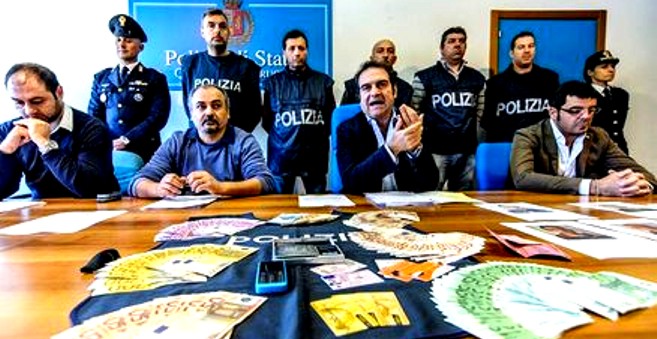
Dr Chiacchiera (talking) with his team explaining reason for charges in another case
Overview Of This Series
In 2007 Dr Chiacchiera was the Director of the Organized Crime Section and the Deputy Director of the Flying Squad.
He was one of the most senior and experienced law enforcement officers to testify at the trial. His testimony and his cross examination by the defenses occupied a lot of time of the court late in February 2009. He covered the following ground.
- (1) He found Knox and Sollecito uncooperative when he asked them questions.
(2) Saw evidence contradicting any lone burglar theory and indicating that the “break-In” to Romanelli’s room was faked.
(3) Phone records and the police investigation into the accused phone activity the night of the murder.
(4) Discovery of pornographic magazines at Sollecito’s house.
(5) Details of how the large knife, Exhibit 36, was collected from Sollecito’s and the evidence that it is the murder knife.
All the translation is by the ever-dedicated main poster ZiaK. This series is highlighting some key portions. Here is the full 50-page transcript which will be posted in the trial testimony area of McCall’s great Wiki.
This post continues analysis of the evidence that the lone burglar/lone wolf theory was not credible to those that were first on the crime scene and that the “break-In” to Filomena Romanelli’s room was to them obviously faked.
(GCM=Giancarlo Massei; MC=Manuela Comodi; MaCh=Marco Chiacchiera; GB=Giulia Bongiorno; DD=Donatella Donati; CP=Carlo Pacelli; LG=Luciano Ghirga; CDV=Carlo Dalla Vedova; FM=Francesco Maresca)
Public Prosecutor Comodi [MC] Leads Testimony
Judge Massei [GCM}: Excuse me a moment, just to give some guidelines, but of the evaluations that the witness is expressing, obviously it’s not that they can be taken account of, however we will acquire them [for the trial files] in order to understand the investigation activities, the appropriateness of the investigations that were carried out, directed in one way or in another, there you go. However, maybe, “¦ there you go, yes, maybe if we can manage to keep with the bare essentials this will help everybody.
{Court proceedings seem to have been diverted into a free-for-all colloquy, with multiple participants chiming-in, and creating confusion. Court-President, GCM, now politely intervenes, apparently trying to restore order, ruling that the professional evaluations made by the witness, testified-to by the witness, should be admitted for the trial files. The appropriateness of the witness's evaluations can be dealt with separately and later.}
Manuela Comodi [MC}: Well, in short, they were called “¦ they are the only ones who can describe the whole progression of the investigations - Dr Profazio and Dr Chiacciera ““ because they are directors, they are the only ones who will come to describe for me, thus, what was the progression of the investigations. Clearly, in order to pass from one investigative act to another rather than “¦ and the choice of the subsequent investigative acts. It’s clear that they have to describe, in order to make a complete reasoning, even the lines of thought that, as Dr Chiacchiera said, it sometimes happens that they make. However, one point: apart from the break-in, apart from the broken window, there are “¦ did you acquire further elements that corroborated the idea that there had been a burglary? Nothing from Romanelli’s room had been carried off? Valuable things had been taken?
{Examiner acknowledges Court's admonition, argues importance of her witness's testimony, and segués into triple-Q addressed to witness re elements corroborating idea of burglary.}
Dr Chiacchiera [MaCh]: This ... in fact, in the progress ...
{Witness begins to answer, but is interrupted by Examiner}
MC: Was a declaration/complaint of theft made then, with a list of the things taken?
{Examiner interrupts witness with new double-Q}
MaCh: In the logical progression, if I may in some way still, in summary, say what “¦.
{Witness begins narrative response but is interrupted by Court}
GCM: Say the objective facts, if you have “¦.
{Court interrupts witness, beginning to admonish him to respond by testifying to objective facts, but is itself interrupted by witness}
MaCh: Nothing disappeared, so a burglar would have had difficulty “¦
{Witness answers 3rd Q of Examiner's above triple Q, but then launches into a narrative beginning: "so…", but Court interrupts}
GCM: Excuse me, nothing had disappeared? Before all else, what thing .... you knew what things were in that room that did not disappear?
{Court interrupts, questioning basis for witness's statement that "Nothing disappeared"}
MaCh: Yes, because, shall we say, the investigation elements that then subsequently emerged, allowed us to deduce that from Romanelli’s room absolutely nothing disappeared. There was a complete mess/chaos, but nothing disappeared from Romanelli’s room. And this is another element to [lead us] to obviously deduce that the desired hypothesis of a burglar and of a theft was objectively “¦ But then the burglar does not [sic] close the door and throw away the key. The burglar does not cover the victim. The burglar “¦
{Witness answers Court's Q, with narrative explanation including reference to "the key", and Court interrupts}
GCM: Excuse me. They key. What is this detail about the key? What is it?
{Court asks Q simple Q re "the key" - with apparent transcriptional error: "They key"}
MaCh: There was no key.
{Witness answers Court's Q}
GCM: There was no key where?
{Court asks simple Q}
MaCh: Those who entered into the inside of the house first found the door closed. A closed door that then aroused the suspicions and that then gave concern and then it was decided to “¦ to break [it] down.
{Witness responds to Court's Q with narrative explanation}
GCM: Excuse me, on [sic] Romanelli’s room there was no key?
{Court asks another simple Q}
MaCh: No, I’m talking of Meredith’s room, Mr President; Meredith’s room was locked by key.
This is another “¦ how to say, the investigative deductions that we drew from these details that emerged, also from the declarations that we gathered.
{Witness responds to Court's Q, and informatively amplifies A}
MC: Was it normal that Meredith closed herself [sic. i.e. her room] by key?
{Examiner asks witness a simple Q}
MaCh: No.
{Witness gives simple A}
MC: And did you find the key of Meredith’s room?
{Examiner asks witness a simple Q}
MaCh: No.
{Witness gives simple A}
MC: So it was closed by key, but there was no key inside?
{Examiner summarises witness's testimony re key and poses a simple Q}
MaCh: But there was no key inside, so that it was necessary to break down the door in order to enter. Also the almost inexplicable detail of the presence of two cellphones in a garden of a house, doesn’t tend to favour the thesis of someone who enters and who accidentally, so to speak, finds a person and then kills them, because [he] is forced to kill them because they have seen [his] face.
{Witness responds to Q in form of confirming-repetition and amplifies A in expanded narrative-form}
MC: But is via Sperandio far from via della Pergola?
{Examiner poses vague Q re proximity of 2 streets}
MaCh: No. And there we tried to deduce. And via Sperandio, as I said earlier, Doctoressa, is not far from the house. We discussed [this] to understand why these telephones went and ended up there “¦
{Witness answers simply, and respectfully, introducing " the house" on one of the streets, seguéing into subject of the mobile telephones and is interrupted by the Court}
GCM: Excuse me. When you say it is not far from the house, can you specify at what distance? How one reaches it?
{The Court's interruption is also vague, with double-Q, referring to an unspecified "it"}
MaCh: Not far from the house means that, by following a route that any Perugian knows, Mr President, one passes through a park and one arrives, let’s say, near the gateway of Porta Sant’Angelo. So for this reason, as the crow flies, how much would it be, but less [sic] “¦ three hundred, four hundred metres. But to reach it by foot from via della Pergola to via Sperandio I think that it doesn’t take more than 5, [or] 7 minutes.
{Witness responds to Court in explanatory narrative form
MC: But do you have to pass by via Garibaldi?
{Examiner asks simple Q}
MaCh: Yes. But you can also pass through the park ““ there’s a park that then comes out right in front.
{Witness answers Q, and amplifies his response}
MC: Of the villa?
{Examiner seeks clarification of witness's response}
MaCh: In front of the villa, at the entry to the villa. Looking from the street that crosses with the provincial [road], the one that, shall we say, borders the villa, whoever is looking at it, I repeat, I ““ who am 44 years old, am Perugian ““ I did not know that there was a garden behind there.
{Witness clarifies his response, amplifying further}
MC: And how far away is via Sperandio from via Garibaldi, corso Garibaldi?
{Examiner asks apparently simple Q}
MaCh: it’s parallel. It’s very close, very very close. It’s 200 metres away, as the crow flies. I think even much less, because they are almost parallel, let’s say. Even that is something that in some way made us understand that there was an interest in getting rid of those cellphones, clearly, by whoever did that thing there.
{Witness gives detailed response;
See: "Just seeing police could panic the killers into instant dumping of the telephones, without even needing to know why the police were where the police were (There is no need to invoke any awareness by the phone-dumper[s] of the reason the Police were near Mrs. Lana's place - the hoax-call.). So if the killers saw flashing police-lights, or any other sign of police near Mrs. Lana's place, that sign could be enough to explain panic phone-dumping - then and there (not considering whether the phones were switched-on or switched-off)." In TJMK: "Updating Our Scenarios And Timelines #2: An Integrated Comparison Of The Timing of the Phone-Events." 6/28/2013}
MC: When you arrived for the first time in via della Pergola, did you enter the room of the crime?
{Examiner asks simple Q}
MaCh: Immediately, no. I went in afterwards, when Dr Mignini also arrived; and later with Dr Lalli. Then I had, how to say, occasionally entered when the crime-scene inspection of the Forensic Police, of the colleagues arrived from Rome, was already begun, so late. I didn’t stop long inside the house, I say the truth, also because the measures/orders that I issued immediately were those, yes, of deducing, [of] drawing out all the investigative elements that might emerge in the immediate surroundings [and/or immediately after the facts] to seek to immediately direct the investigation activity, but also to “freeze” [sic. i.e. to solidify, or to make concrete] another aspect, which was that of hearing/questioning all the people who might tell us details on Meredith’s stay in Perugia, in general, but above all on her final hours, on her visits/visitors, everything about those who Meredith had known in some way and “¦ This was the thing that we considered logical to do precisely in relation to this, to these first investigative deductions that we drew from the [above]-described crime-scene.
{Witness gives detailed narrative reply}
MC: And so that same day you were present when they began to hear/question…
{Examiner begins preamble to presumed Q, but is interrupted}
MaCh: Yes.
{Witness interrupts Examiner with witness's answer to assumed Q}
MC: “¦ the people [who were] acquainted with the facts.
{Examiner completes interrupted Q-in-the-form-of-a-statement, which omits Q-mark}
MaCh: I was present. I did not participate personally in the examination [of witnesses], but I was present, in the sense that both with [my] colleague Profazio and with [my] other colleague from the central operative service”¦
{Witness responds with narrative description of circumstances, but is interrupted}
MC: from Rome.
{Examiner interrupts with her assumed next part of witness's response}
MaCh: from Rome. We began to put the pieces together, excuse my [use of] the expression; that is to say all the “¦ all the elements that emerged from the examination of witnesses, were checked, were gradually verified/cross-checked. Both with cross-checks that enlarged the group of witnesses, of the people to be heard/questioned, and with the checking of the alibis of many people, [as well as] with a technical activity that was carried out.
{Witness confirms Examiner's assumption, and completes his narrative description of circumstances}
MC: That is to say?
{Examiner enquires as to witness's reference to indefinite "technical activity"}
MaCh: A technical activity. A bugging activity was carried out. There was also an activity carried out also for the cross-checking of the phone [activity] printouts. There was an activity to understand also the cross-checking of the [phone] cells. There was a very wide-range activity carried out. Without excluding, I repeat, all also [sic] ... shall we say, the minor hypotheses. For example, the news arrived of a Maghrebi who had been in a rush to wash his own clothes in a launderette, not too far from the scene of the crime. This piece of information was excluded for a very simple reason, because from the first results of the investigative inquiries, he had arrived there in the early afternoon, but instead, in the early afternoon of the day before her death, Meredith was still alive [sic]. Because from the witness examinations we had determined that the last person who had seen her alive, saw her in the late afternoon. After which, we also did another series of checks relative to the one [sic] that there was a strange telephone call that the people who found the cellphones in the famous villa, the beautiful one on via Sperandio, had received in the evening. However, we had, how to say, understood that it was a case of a boy who had made a call from Terni and of a strange coincidence, but absolutely irrelevant for the investigation activity. Indeed, we made checks on all the hospitals in order to evaluate, to check, whether maybe there were [patients] who had presented blade/cutting wounds that in some way might have been compatible with a wound, let’s say, or at any rate with a reaction by the victim. Only one had presented, it was a [person] from Foligno who, [while] cutting salami, had cut their hand during the trip back from an away-game with Foligno ““ he was a football fan. Nothing else. So no investigative hypothesis was rejected. It was, obviously, because this is how it is done, and thus I believe that it is logic, we began to discuss/think in a certain way, because we had deduced from all this scen, another series of further elements, that is to say that the person “¦.
{Witness responds with prolonged narrative re "technical activity" and seems to pause}
MC: Speak. Don’t be afraid to say it.
{Examiner urges witness to continue}
MaCh: No, no. I’m not afraid.
{Witness argues with Examiner}
MC: That is, let’s say, when was it that the investigations turned to, [started] to focus on today’s defendants?
{Examiner asks simple Q}
MaCh: When on the evening of “¦ they did not focus on today’s defendants, that is to say, progressively the analysis of the investigative elements made us “¦ made us start, even us, to suspect. Because going into a house, finding a [sic] door of Meredith’s room closed, a [sic] door of the apartment opened, faeces in the toilet [bowl], while I take a shower, a series of bloody prints”¦
{Witness responds in narrative form and is interrupted}
MC: However the faeces were in which of the two bathrooms?
{Examiner interrupts witness with clarifying Q}
MaCh: Of the bathrooms. Me, if I take a shower in a bathroom where there are faeces, instinctively I flush the toilet, in short.
{Witness makes non-responsive subjective statement and is interrupted}
MC: Yes, but the faeces were in the other bathroom.
{Examiner engages witness in argument}
MaCh: Yes, yes, I understood. However, in short, in some way it comes instinctively, no?, to flush the toilet? The fact is that “¦.
{Witness joins argument and is interrupted}
GCM: Excuse me, do you know how many bathrooms there were in the house?
{Court interrupts argument with simple Q}
MaCh: Two.
{Witness ignores actual Q and responds with answer to assumed follow-up Q}
GCM: Two bathrooms. Excuse me, please. Do you know that a shower was taken?
{Court asks another simple Q, using vernacular ref. to whether a person used the shower, rather than that the the shower device was taken away.}
MaCh: Yes.
{Witness answers Court's actual Q}
GCM: How do you know?
{Court asks simple follow-on Q}
MaCh: I know because it is a thing that I cannot, I believe, report because it was “¦.
{Witness seems to answer in non-responsive, subjective narrative form, and is interrupted}
GCM: But you checked”¦?
{Court seeks objective answer to his simple Q}
MaCh: I am trying to be very very careful.
{Witness hints that he has reasons for apparent evasion}
Giulia Bongiorno [GB]: Mr President, we are talking of nothing.
{Sollecito's lawyer chimes in with distracting comment}
GCM: Excuse me, Attorney.
{Court appears to admonish GCM not to chime-in without specified legal-objection}
MaCh: Well, the main point [is] that very slowly we began to understand that there were strong inconsistencies in the revelations that were made. And there were behaviours that on the part of above all, indeed exclusively, of Sollecito and Knox, appeared to us as [being], at the very least, particular. Behaviours both immediately after the event ““ a sort of impatience/irritability shown [with regard to] the investigation activity that we were carrying out, and obviously we could not but ask [NdT: i.e. “we had to ask”] those who were close to Meredith [about] elements that we considered useful, even necessary, in order to continue the investigation activity.
{Witness launches into apparent justification for his evasiveness}
MC: Excuse me if I interrupt you. I’ll just make a few precise questions, thus: you checked, let’s say, let’s call them alibis, even if it’s a term that’s very so [sic] from American TV films, but in any case [it’s] understandable”¦ Did you check the alibis of the people closest, let’s say, to Meredith?
{Examiner, after preamble, asks relatively simple Q}
MaCh: Yes.
{Witness answers Q as phrased}
MC: In particular, did you check the alibis of the young men from the [apartment on] the floor below?
{Examiner asks simple Q}
MaCh: Yes.
{Witness answers Q as phrased}
MC: Results?
{Examiner poses Q in casual form}
MaCh: Positive for them, in the sense that they were at home, in their own home, that is to say their respective houses, because they were here for reasons of study, so they were not present in Perugia during the days when “¦
{Witness responds with allusive casual A, begins to amplify, but is interrupted}
MC: Because they had left for “¦
{Examiner interrupts with suggestion for next part of witness's response}
MaCh: Yes, for the All Souls’ Day long-weekend, let’s call it that.
{Withess reacts to Examiner's suggestion by stating reason for upcoming week-end absence, but not stating week-end destination}
MC: Did you check the alibi of Mezzetti and of Romanelli?
{Examiner asks double Q}
MaCh: Yes.
{Witness answers for both Qs}
MC: Results?
{Examiner poses Q in casual form}
MaCh: The result in this case also [is that] Mezzetti and Romanelli were not there, so “¦
{Witness gives clear Answer, apparently begins explanation, but is interrupted}
GCM: Excuse me, can you say what checks you did?
{Court interrupts witness's testimony to ask Q re witness's method}
MaCh: We carried out a whole series of checks that brought us to evaluate, establish, that these persons were not present in the premises that evening.
{Witness ignores Court's Q as phrased and answers anticipated next Q}
MC: Let’s say, I imagine that you heard/questioned them.
{Examiner makes statement-in-form-of-Q with ?-mark omitted}
MaCh: Yes.
{Witness answers presumed Q}
MC: Did they tell you where they were that evening, what they did that evening”¦?
{Examiner seems to interrupt and asks double-Q}
MaCh: And in effect, we assessed/considered that “¦
{Witness ignores Q-as-phrased and is apparently interrupted}
MC: And you ascertained that in effect “¦
{Examiner apparently interrupts A and continues his interrupted multiple Q}
MaCh: That it was true what they had told us. I can report on the circumstance.
{Witness seems to continue his interrupted answer and offers to expand his narrative.
Q &A cycle is confused and confusing because of repeated multiple Qs, instead of orderly single Q & A}
MC: Did you check the alibi of Amanda Knox and of Raffaele Sollecito? Was there a comparison between the declarations of Amanda Knox and of Raffaele Sollecito with regard to the night of the murder, and what you were able to compare, shall we say, objectively, through the other declarations, through the phone records?
{Examiner asks multiple Qs}
MaCh: Through the phone records and through the checks [that were], shall we say, objective, it was found that what Sollecito had declared was not truthful because there was a phone call that was never received [i.e. answered] by Sollecito at 23:00 hours. Because it turned out that there was no interaction with the computer, but I believe that this “¦ as declared [sic]. But above all there was an absolute incongruity of the “¦.
{Witness summarizing findings wrt phone records, is interrupted}
GCM: There now. Excuse me. Maybe we will not ask the question in these terms: following the declarations, on which you cannot report, that you got from and that were given by Amanda Knox and Sollecito Raffaele, what type of investigations you carried out”¦
{Court interrupts to restrict Qs but is interrupted}
MaCh: We carried out ...
{Witness interrupts Court's interruption and is interrupted}
GCM: ... and the outcome of these investigations. There now. This is where we’re at.
{Court completes it's interruption, seeming to believe he has made himself clear, but confusion still reigns}
MaCh: Well, in summary ...
{Witness begins a summary, but is interrupted}
GCM: Following the declarations given by them, you had “¦ With regard to Sollecito Raffaele, what did you do and what [information] emerged?
{Court interrupts witness with double-Q}
MaCh: It emerged that, unlike “¦
{Witness begins to answer Court's 2nd Q, but Court interrupts}
GCM: What did you do, first?
{Court repeats1st Q}
MaCh: We did an analysis of the telephone traffic, and from the analysis of the telephone traffic it emerged that Sollecito had absolutely not received/answered the 23:00 hours phone call as he had declared. From the analysis of the telephone traffic, there then emerged a very strange detail, in the sense that the cellphones “¦
{Witness answers 1st Q, begins answering 2nd Q, and is interrupted by Sollecito's lawyer}
GB: (overlapping voices) “¦ continue with the opinions/judgements, with all the opinions/judgements.
{Sollecito's lawyer seems to demand comprehensive testimony}
GCM: That which emerged.
{Court makes seemingly cryptic statement which is probably a Q relating to witness's interrupted A to Court's 2nd Q above: "It emerged that, unlike "¦" }
MaCh: A detail/particular emerged ... unlike what “¦. (overlapped voices).
{Witness resumes testimony but is interrupted, multiple voices are heard}
GCM: Excuse me. What emerged?
{Court asks witness to clarify what witness was saying}
_____________________________________________
Here ends the Analysis of the Evidence #2, discussing that the lone burglar theory is not credible, and that “Break-In” to Romanelli’s room was faked.
The next Post: Analysis of the Evidence #3, will Analyse the Phone records and the police investigation into the accused phone activity the night of the murder.
Monday, September 15, 2014
Analysis #1 Of Testimony Of Marco Chiacchiera, Director, Organized Crime Section, Flying Squad
Posted by Cardiol MD
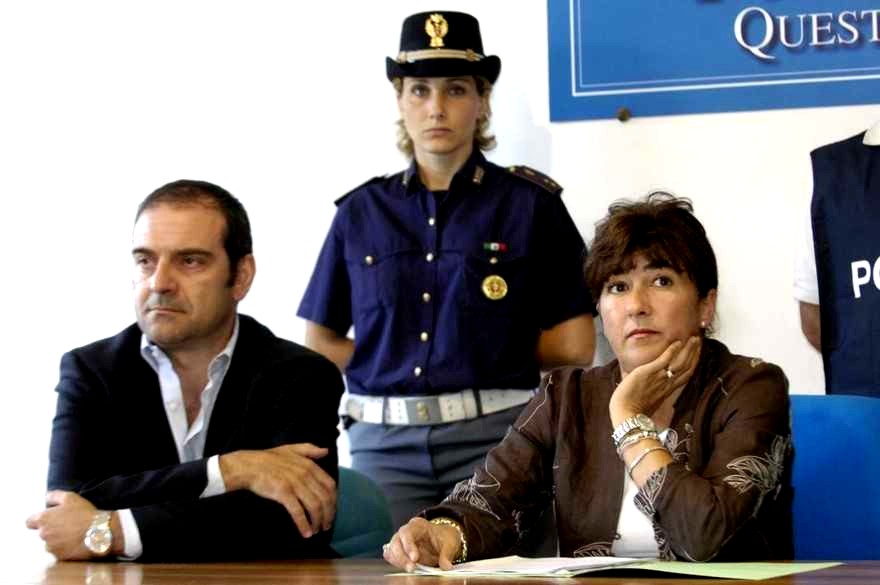
Dr Chiacchiera with Dr Comodi explaining reason for charges in another case
Overview Of This Series
Yet another vital translation which will be posted in the trial testimony areaof McCall’s great Wiki. This again is translated by the ever-dedicated main posterr ZiaK.
Although I graduated as a medical doctor I also graduated as a lawyer, and was often in courtrooms. For this post and the rest of the Chiacchiera series I am wearing my lawyer’s hat to point out what strikes me in Prosecutor Comodi’s questions, Marco Chiacchiera’s testimony, and the cross-examinations by defense lawyers.
Prior Preparations And Procedures
Under the Italian Code, before the beginning of the trial phase in Italy, the parties file a brief, detailing all evidence they want to present ““ the parties have to indicate by name every witness and precisely what these will be asked. The aims include creation of a Record of Admissible Facts.
Also under the Italian Code, both the defendant and the prosecutor can cross-examine each other’s witnesses. The Judge may choose not to admit any testimony that appears patently superfluous, reject irrelevant or improper or irregular questions ““ such as leading questions, and Inadmissible Hearsay ““ and also ask questions to the witnesses and experts.
Ground Covered In Dr Chiacchiera’s Testimony
- (1) He found Knox and Sollecito uncooperative when he asked them questions.
(2) Saw evidence contradicting any lone burglar theory and indicating that the “break-In” to Romanelli’s room was faked.
(3) Phone records and the police investigation into the accused phone activity the night of the murder.
(4) Discovery of pornographic magazines at Sollecito’s house.
(5) Details of how the large knife, Exhibit 36, was collected from Sollecito’s and the evidence that it is the murder knife.
My Assessment Of This Court Exchange
It is immediately obvious to me that this witness is a skilled witness; as such, and given his deep hands-on involvement in the immediate investigation this witness’s testimony is credible. My assessment therefore is that this was a very good and unflinching witness and that Dr Comodi shows no signs of leading the witness or seeking other than a truthful record.
I have seen prosecutors examine witnesses differently but dont believe the resultant record would have been superior. This would have stood up well in any American court.
(GCM=Giancarlo Massei; MC=Manuela Comodi; MaCh=Marco Chiacchiera; GB=Giulia Bongiorno; DD=Donatella Donati; CP=Carlo Pacelli; LG=Luciano Ghirga; CDV=Carlo Dalla Vedova; FM=Francesco Maresca)
Public Prosecutor Comodi [MC]
MC: Dr Chiacchiera, you carried out your duties where, when, at what moment of the events?
MaCh: I was and am the director of the Organized Crime Section of the Flying Squad and I am the vice-director of the Flying Squad. The Organized Crime Section is a branch of the Flying Squad that deals with “¦ the term, I think that in this place [i.e. the court] it is enough to say that it deals with organized crime. However, I am also the vice-director of the Flying Squad, for which [reason] I deal with, in the case of need, everything that is necessary [for] the various aspects.
{Witness supplies 5 items of relevant information that Examiner should elicit at beginning of examination.}
MC: Can you tell the Court how you became aware of events, who called you, when you became involved?
{Examiner asks another triple-question}
MaCh: Yes.
{Witness simply answers question as worded by Examiner}
MC: For now, start to tell us, then maybe I will intervene [NdT: i.e. interrupt with further questions] if necessary.
{Examiner, asking no Q, instructs witness, suggesting provisional forbearance if witness does not make interruptions necessary.}
MaCh: On the fateful day, at around 12:33, I had gone to the cemetery with my mother. The operations room called me immediately after the discovery of the body.
{Witness begins appropriate narrative response, but Examiner interrupts}
MC: So the 113? [NdT: 113 is the Italian State Police emergency number]
{Examiner interrupts witness with a Q, suggesting witness's receipt of call from an emergency number, but suggests wrong source-number}
MaCh: 110. The operations room of the Questura called me, and informed me of the happenings in an initially obviously very summarized manner. They said to me that there was a suspicious death, a young woman who lived in via della Pergola. I rushed to the place directly in my mother’s car. I didn’t stop by at the Questura, I didn’t go to get the service [i.e. police] car. I got myself taken to via della Pergola. We took about 15 minutes from the cemetery to there, ten fifteen minutes. In the meantime, I phoned the deputy Commissioner Napoleoni, in the temporary absence of the director, Dr Profazio, who arrived later, who was “¦ he was enjoying a period of leave, and with deputy Commissioner Napoleoni we arrived almost at the same time. We arrived almost simultaneously at the premises. Forensics, too, arrived almost at the same time at the premises.
{Witness supplies correct source-number and resumes interrupted narrative response}
MC: The Perugia Forensics?
{Examiner questions witness's correction, as if to verify and to ensure accuracy of court's record}
MaCh: The Perugia Forensics, I highlight, yes.
{Witness emphatically agrees with Examiner's question}
MC:”‹[They were] alerted by you, or ...?
{Examiner pauses mid-Q, inviting witness to guess complete Q, or is interrupted}
MaCh:”‹Alerted by the operations room, and also alerted by me.
,
{Witness responds to invitation, or interrupts with A to assumed complete Q}
MC:”‹So you arrive, and who do you find?
{Examiner's 1st simple Q.}
MaCh: “‹I found there ... there was already deputy Commissioner Napoleoni, there were also a few of Meredith’s co-tenants. There was Amanda Knox, there was Raffaele Sollecito. There were two young men who were, I believe, the friend of the boyfriend of one of the co-tenants. In short, there were a few people who had already been inside the house. There was the Postal Police.
{Witness answers Q in reasonable detail}
MC:”‹In the person of”¦?
{Examiner seeks more detail re specific Postal Police Personnel}
MaCh: “‹Battistelli and another of Battistelli’s colleagues. Inspector Battistelli, with whom there was immediately a discussion in order to understand what were the reasons for his intervention there, because it is not normal to find the Postal [police] in a crime of this sort. And he explained to me immediately what was the reason for his intervention. The origin of the, shall we way of his intervention, was due to the discovery of a pair of cellphones in a period of time, I believe, of an hour, [or] two, I don’t recall clearly, that were one in the name of one of Meredith’s co-tenants and one in the name of, later it [sic] “¦ I mean the SIM [card], obviously, the cellphones’ SIMs, the cards, they were in the name of a co-tenant and the other in Meredith’s [name]. The co-tenant, however, then told us, we then ascertained that both of the cellphones in fact were used by Meredith. And already that was, how shall we say, a first detail on which we began to reflect because, in fact, that was an element than in some way made us [become] immediately occupied/involved from an investigative point of view.
{Witness responds to Q and includes relevant amplifying narrative, anticipating probable future Qs re cellphones}
MC: “‹So, excuse me, also if the Court already, shall we say, knows this, because others have reported it, on this point however, where were the cellphones found?
{Examiner seems to interrupt with simple Q to clarify specific relevant fact not yet reached}
MaCh:”‹Inside the garden of a villa that is in via Sperandio.
{Witness responds appropriately}
MC:”‹In via Sperandio.
{Probably a Q, but implicitly inviting more specificity}
MaCh: “‹A villa that ... I am Perugian, [and] honestly, I didn’t even know there was a villa there. I’m Perugian, and I swear that I would have sworn [sic] that behind there was a wood.
{Witness flounders, seems unable to be more specific}
MC:”‹A field
{Probably a Q, but implicitly inviting more specificity}
MaCh: “‹It [was] the first time that I went in behind there. Instead, I see a marvelous old mansion with an enormous garden that gives ... that is almost adjacent to the street ““ the street that leads towards Ponte Rio. Anyone from Perugia understands me maybe.
{Witness seems to be in informal conversational mode}
MC: “‹From the structure of the fencing/enclosure, could you tell, shall we say, whether it was possible to throw these cellphones from the street, or whether it was necessary to enter the garden itself?
{Examiner engages witness, and asks Q to clarify how cellphones got into that garden}
MaCh: “‹Yes, obviously, we checked that. In fact, immediately, in short, the detail that seemed, how shall we say, of great investigative interest was that [very point], besides other details that I will go [into] a bit [sic], so to speak, also to give the impression of what the immediate impact was that we saw in the moment when we found ourselves in a situation of this type. So, deputy Napoleoni immediately entered inside the house in order to check it for herself. I did it [entered] shortly afterwards, also because [as] you will imagine that in that moment whoever was there had to notify all those who [sic], amongst whom Dr Mignini who was the Public Prosecutor on duty, and immediately give orders so that the correct checks are carried out. Because it was not just a crime scene that had to be analysed immediately: there also had to be, how shall we say, correlated with the information that we had got from via Sperandio ““ because the entry of the Postal [police in the case] originated with via Sperandio. And so we immediately asked ourselves: “Ah, what are these cellphones belonging to poor Meredith doing inside the garden of a villa?” And then And then immediately after, we asked ourselves, obviously, what might be the profile of the possible, or probable, murderer, and we discussed/talked about the crime scene. The crime scene immediately seemed fairly strange to us, if you wish [NdT: literally “if we wish” in Italian, but meaning the same as “shall we say”, “if you wish”, “so to speak” etc.]
{Witness responds to Q with detailed narrative}
MC:”‹Why?
{Examiner asks ambiguous Q, probably wrt crime scene seeming "fairly strange "}
MaCh:”‹Because the door did not show”¦ the entry door to the villa did not show signs of break-in. The we checked “¦
{Witness seems to decipher ambiguity correctly, begins narrative response, but is interrupted by Examiner}
MC:”‹We are not talking about the villa on via Sperandio obviously?
{Examiner interrupts with Q, apparently not comprehending Witness's narratives}
MaCh: “‹For the love of god! It was called a “villa” “¦ (overlap of voices), let’s say the house, of the house on via della Pergola there was no forcing/break-in. We found a forcing on the window. The window is this one, on the side of the house. I don’t know if you’ve seen the house? Anyhow, it is this one on the side of the house that can be seen immediately when you come down the slope from the gate. Logically reconstructing the thing, a hypothetical prowler [NdT: literally “ill-intentioned person”] who entered the house, breaking the glass with a rock - because inside the room, which was Romanelli’s room, which was the, shall we say, hypothetical arena of the entry, was completely in utter chaos. For that reason, what should we have hypothesized? That the hypothetical prowler took a rock, managed to throw the rock; the shutters, the external ones, the external shutters were not “¦
{Witness is exasperated at Examiner's apparent incomprehension, is repeating his previous testimony, but is interrupted by Examiner}
MC:”‹The dark-green wooden ones?
{Examiner interrupts with Leading Q re colour of external shutters. Now begins a confused and confusing colloquy. The arrangement of Filomena Romanelli's window, with Outside, and Inside Shutters, the Broken-Glass-Frame in-between, and the glass-splinters on the window-sill is complicated and needs a picture-exhibit that the witness can refer-to; this is apparently not provided, leading to the confusions}
MaCh:”‹The dark-green wooden ones were half shut, for which reason [he] must have had an aim like “Pecos Bill” [NdT: a cartoon Wild West cowboy], takes aim and throws that rock, smashes the window. After, he climbs up and does a turn on the little slope, and has to clamber up towards the window on the smooth surface, it seems to me, that from the ground up to the window there are two and a half metres-three [metres]. And then would have said: “bah, in short” [sic]. Yeah, well, the thing seemed to us…. in short, the first hypothesis that the investigator normally does, finds a level of unlikelihood of this kind of happening. After which, we looked at the house and we saw that an entry of a potential prowler [ill-intentioned person], still reasoning on the hypothesis”¦
{Witness amplifies narrative response but is interrupted by Examiner}
MC:”‹Of theft.
{Examiner inappropriately interrupts, incorrectly guessing what witness was about to say}
MaCh: “‹Of theft ending badly. Of theft that then degenerates because the burglar in some way thinks that he will find no-one in the house and instead finds a person, and then it degenerates “¦ We saw that there were easier means of entry, without wishing to bore you, but behind the house there was the possibility of climbing in a much easier way, without being seen by people that might have passed in the road. Let’s remember that, in short, it was not very late; quite the contrary. Normally people passed there, for which reason, if [he] had done it, the thing would probably have been seen. That thing there, as an hypothesis, we didn’t immediately discount it, that’s clear, because it’s a good rule to never discount any hypothesis. But we immediately considered that it was not a priority.
{Witness corrects Examiner's wrong guess, amplifies and seems to end narrative response}
MC:”‹Dr Chiacchiera, I interrupt you. (The witness is shown an exhibit.)
{Examiner, seems to acknowledge her habit of interruptions without actually interrupting, while introducing an unspecified exhibit. This introduction seems very informal, because Exhibits are normally identified by an assigned title.}
MaCh:”‹Ah! I didn’t remember it as being so big.
{Witness recognizes unspecified exhibit}
MC:”‹Precisely! You saw it? This is the rock that ...
{Examiner engages witness, stating it is "the rock".}
MaCh:”‹Yes, but it has been some time I have not, how shall we say, yes, I saw it. Absolutely.
However, it’s big, it’s huge.
{Witness engages Examiner, commenting on how large the rock exhibit is}
MC:”‹Do you consider that it could be this?
{Examiner ambiguously (what are "it" & "this "?) asks witness's opinion}
MaCh:”‹I believe so.
{Witness seems to overlook ambiguity of Q with vague A)
MC:"‹I try "¦
{Examiner begins to speak but is interrupted}
Judge Massei [GCM]:”‹How?
{Court interrupts as if to ask Q how Examiner 'tries'}
MC:”‹It is this. Yes, it is this one that was collected, yes, that was found.
{Witness seems to confirm that exhibited rock is the rock found in Filomena's room}
GCM:”‹So the rock is shown. [NdT: an “aside” for the court records?]
{Court formally announces admission of rock-exhibit, seemingly trying to reduce confusion caused by informal dialogue}
MaCh:”‹Inside the room where we then found the rock…
??:”‹But what was the question about the rock?
{Witness amplifies that rock had been found in a room, but enquires re rock Q, exposing confusion caused by informal dialogue}
GCM:”‹If this was the rock. And the witness said ...
{Court begins explanation to confused witness}
MaCh:”‹I said yes. Yes.
{Witness interrupts Court - confusion reigns}
GCM:”‹You saw it? You saw the rock?
{Court asks witness 2 Qs, trying to clarify that 'it' refers to 'the rock' that witness saw.}
MaCh:”‹Yes.
{Witness confirms that witness had previously seen the rock introduced into court as an unlisted exhibit.}
GCM:”‹When you saw it, where was it?
{Court proceeds to clarify confusion re where the rock was when witness originally saw the rock}
MaCh:”‹The rock [was] in the room of Romanelli.
{Witness specifically testifies, for witness's first time, that when witness originally saw the rock, the rock was in Filomena Romanelli's room}
GCM:”‹How far from the window? Can you say?
{Court continues to seek clarification using double-Q.}
MaCh: “‹A few centimetres [NdT: “un palmo” = “a hand’s width”] from the window sill, under the window, from the wall where the window is.
{Witness testifies clearly in answer to Court's 1st Q of above double-Q.}
GCM:”‹So from the internal perimeter wall, from where the window gives onto it, a “hand’s breadth”. So 20 centimetres…
{Court apparently begins to seek verification of witness's testimony, but is interrupted}
MaCh:”‹Mr President ....
{Witness begins to Interrupt Court}
GCM:”‹... away from it approximately.
{Court finishes his interrupted statement}
MaCh:”‹Yes.
{Witness agrees with Court's completed statement}
GCM:”‹And this is the rock. You remember it.
{Court states his understanding in form of Qs.}
MaCh:”‹Yes, yes, yes, yes. That is the rock.
{Witness impatiently agrees with Court's understanding}
MC:”‹At least as far as size and colour [are concerned], it corresponds thus to the one that was collected [as evidence].
{Examiner makes statements in form of Q, seeking verification of resemblance of exhibit-rock to original rock}
MaCh:”‹At least as far as size and colour [are concerned], it absolutely corresponds. If it was collected, I think that ...
{Witness begins narrative agreement with statements of Examiner, but is apparently interrupted by Examiner}
MC: “‹Very well. WITNESS [sic? Should be MaCh?] and Romanelli’s room was a complete shambles. The clothes were on the floor, the glass was strangely on top of the clothes, the [glass] shards were strangely on top of the “¦ on the windowsill, let’s put it that way.
{Apparent Transcriptional confusion attributing to interrupted witness narrative the interrupting .statement of Examiner}
MC:”‹The outside one.
{Examiner seems to amplify statement of Examiner wrt which window-shutter witness had been referring-to}
MaCh: “‹The outside one, precisely. The one that is between the shutters and the shutters [sic. NdT: “imposte” in Italian, but this can also mean shutters, or flap, as in the inner “scuri” shutters, or he may mean the window-frame itself, with the window-panes, given his following description], the green shutters and the shutters, the broken ones in short, where the glass is. The shutters ““ the wooden ones. The rock was a bit too close with regard to the wall if I [were to] throw it from least two metres. Unless it was lobbed [i.e. thrown in a high arc]. But in that case it’s rather unlikely that it would smash the glass. For that reason, I repeat, in the context of immediate likelihood, this one “¦
{Witness agrees with Examiner that he was referring to "The outside one", continuing with narrative of reasoning, but is interrupted by Examiner…}
MC:”‹Yes, it’s true. These are considerations. However they are considerations, shall we say, that refer [sic], because they are reasoning/lines of thought that are formed in the “immediacy” of the events [NdT: i.e. “in the immediate aftermath”. NOTE: throughout the text, a number of speakers use “immediatezza” (lit. “immediacy”) to convey a number of meanings, from “in the immediate aftermath”, or “in the immediate surroundings”, or “very soon after”, etc. I will translate them appropriately according to the context, without further explanation of the use of “immediatezza”], in order to proceed in one direction rather than another.
{Examiner, interrupting witness, apparently agreeing with witness's reasoning. While Examiner is apparently stating his own argumentative reservations re the possible evolution-in-time of witness's changing lines of reasoning, he is interrupted by Giulia Bongiorno, Sollecito defense lawyer:}
Giulia Bongiorno [GB]: “‹I never like to interrupt an examination [of a witness], however if one wanted, between the Public Prosecutor’s hypotheses, to do that [sic] of demonstrating that from a ballistic point of view it is not possible, then the ballistic expert should be called.
{GB interrupts Examiner to comment that Witness and Examiner are expressing opinions on Ballistics that require the testimony of a Ballistic Expert.}
MC:”‹But in fact, his considerations are not the considerations of an expert: they are the considerations of an investigator who made certain deductions in the immediacy of the events.
{Examiner argues that witness's testimony is that of an investigator's temporal train of thought.}
MaCh:”‹It happens to us too, at times, to reason/think rationally “¦
{Witness joins colloquy, amplifying Examiner's argument.}
GCM:”‹These reasonings/deductions, then determined your investigative activity in one direction rather than in an “¦?
{Court seems to invite further amplification by witness}
MaCh: “‹Yes, obviously, Mr President. I was trying to ... (overlap of voices) it is a premiss/basis to be able to then, how shall we say, reach ““ I won’t say conclusions ““ but in order to try to understand what our way of broaching the thing was, there and then. We had, I reassert, reasoned immediately also on via Sperandio. So the first thing, I may say, [was] the unlikelihood, or at any rate it was not the top priority hypothesis, the one of a prowler/ill-intentioned person entering. The open door without signs of break-in. But above all, a young woman who is [sic] probably killed in her own room, nude or almost nude, with a wound of that type, in a lake of blood, covered with a duvet. I repeat, the door was not smashed/wrecked, there’s a broken “¦ a window broken with a thrown rock, how can I say, it’s obvious that we immediately found this situation as “¦ (overlap of voices).
MaCh:”‹”¦ particular.
{Witness further amplifies narrative}
GCM:”‹You formed these considerations, and what did they lead you to?
{Court asks simple Q.}
MaCh: “‹That very probably the author or authors knew the person, or at any rate that the author or authors did not enter “¦ did not enter from the window-pane of that window.
{Witness responds with his conclusion that the authors of the faked break-in did not enter from the window-pane of that window.}
GCM: “‹Excuse me a moment, just to give some guidelines, but of the evaluations that the witness is expressing, obviously it’s not that they can be taken account of, however we will acquire them [for the trial files] in order to understand the investigation activities, the appropriateness of the investigations that were carried out, directed in one way or in another, there you go. However, maybe, “¦ there you go, yes, maybe if we can manage to keep with the bare essentials this will help everybody.
{Court proceedings seem to have been diverted into a free-for-all colloquy, with multiple participants chiming-in, and creating confusion. Court-President, GCM, now politely intervenes, apparently trying to restore order, ruling that the professional evaluations made by the witness, testified-to by the witness, should be admitted for the trial files. The appropriateness of the witness's evaluations can be dealt with separately and later.}
_________________________________________________
This segment of Chiacchiera’s Testimony re the Crime Scene, which he believed had been remodeled by the criminals to dupe Investigators into believing that there had been a burglary, committed by a single criminal, is paused here because it is so prolonged.
Analysis of Chiacchiera’s Testimony will continue in a future post.
Monday, September 01, 2014
Knox Interrogation Hoax #12: Hard Proof That In 5-6 Nov Session Knox Merely Built Visitors List
Posted by Our Main Posters
1. What Really Happened on 5-6 November
The introduction to Hoax Post #1 explains what really happened at Knox’s recap/summary session on 5-6 November 2007.
In a sentence: Knox was there unwanted and grumpy, was advised by Inspector Rita Ficarra to go and sleep, refused, agreed to build a list of possible perps (she listed seven, including Guede), spontaneously had a wailing conniption over a mundane text she sent to Patrick, was semi-calmed-down, repeatedly provided refreshments, and insisted on writing three statements without a lawyer; all said she went out on the night of the attack, all framed Patrick, and one even pointed at Sollecito.
2. Hard Proof Knox Worked On The List
This memo above (click on it for the full version) records the main outcome of Rita Ficarra’s 75-minute summary/recap session (defenses conceded it was not an interrogation session) with Knox, with an interpreter and two others present.
Rita Ficarra wrote the memo some hours later, on the evening of 6 November, after she had caught up on some sleep. It is based on a handwritten version Knox painstakingly evolved on a page of her notebook, which she then tore out and handed to Inspector Ficarra. That handwritten page is in evidence too.
The timing here is key.
According to the testimony of Rita Ficarra and the interpreter Anna Donnino, the real work on the list only began around 12:30 after Anna Donnino arrived. It took all or most of the next hour. Knox obtained all the phone numbers from her mobile phone which she handed over to the others present at several points (those phone numbers are long disused.)
Kristeva kindly did the translation below.
Annotation By Rita Ficarra
On 6 November 2007, at 20.00, in the offices of the Flying Squad of the Questura of Perugia. The undersigned Officer of P.G. [Attorney General], Chief Inspector of the State Police FICARRA Rita, notes that, as part of the investigation of the murder of British citizen Meredith KERCHER,
On the night of November 5th c.a. [current year], at approximately 23.00, while in the Offices of the Questura of Perugia, along with Amanda KNOX, waiting for the same to be heard in regard to the fact for which we are proceeding,
Learned, informally. news related to some male subjects who certainly knew MEREDITH and of whom Amanda gave indications on their respective residences—drawing roads and landmarks in her notebook ““ as well as their mobile phone numbers.
The same [Amanda] extracted these phone numbers from her mobile phone contacts and copied them on a piece of paper torn from her notebook and handed it to the undersigned.
The subjects indicated by Amanda were described as being:
PJ - Peter, a Swiss young man of Swiss nationality who certainly frequented Meredith and who would have surely been several times to their home; this young man dwelled in Via della Pergola, precisely in front of the “Contrappunto” club and close to the stairs and parking lot; mobile phone: 3891531078;
Patrik, owner of the pub “Le chic” where [the same] Amanda works. He too certainly knew Meredith. She was not able to provide an address but indicated that she had often seen him near the “rotonda [roundabout] of Porta Pesa, next to the Laundromat. Mobile phone number: 338719523;
Ardak, North African citizen of whom she gave no other indications other than his mobile phone: 3887972380;
Yuve, Algerian citizen who occasionally worked at “Le Chic” and would have dwelled in Via del Roscetto (near the residence of Sophie) phone; 3203758112
Spyros, young man of Greek nationality of whom Amanda does not give any indications other than the mobile phone: 3293473230
Shaky, Moroccan citizen who would have been working in a “pizzeria” and who frequented the pubs and discotheques frequented by Meredith’s group of friends with whom they met at the pub or discotheque, friend of Sophie;
Lastly she informed of another South African young man, black, short, who plays basketball in the Piazza Grimana court, who would have, in one occasion, frequented the house.
On this occasion, Giacomo-Stefano, Riccardo and Marco (neighbours) were allegedly present, as well as Meredith. She referred to the fact that Yuve probably knew him, but gave no further information, as she herself, didn’t associate with him.
Amanda, who was also present on this exact occasion, confirmed that she used hashish type drugs with her boyfriend Raffaele, despite what she had said previously.
She claimed that he had previously confessed to taking cocaine and acid in the past, but currently only used “pot”. In addition, she hinted that Raffaele was experiencing problems with “depression-sadness”.
Furthermore, to get hold of her supply of “pot”, she claimed to have asked her flatmate Laura, who, allegedly, acted as intermediary between her and third parties.
It is noteworthy that the same afternoon, following her detention order and prior to her transfer to Capanne prison, Amanda KNOX asked for some blank paper with the intention of writing a written declaration. This she intended to deliver to the undersigned, before she was moved to prison, and requested that every policeman read it.Hence, the undersigned received the attached manuscript written in English, by KNOX, and informed her that the manuscript, after being translated into Italian, would be forwarded to the appropriate judicial authority.
3. Subsequent TJMK Reporting On Next Steps
Nest in the list of posts in our interrogation hoax overview these reports should be read.
1. Click for Post: #15: Knox Is Told Her Rights And Repeats Fake Murder Charge
2. Click for Post: #13: The First Two Pre-Trial Opportunities Which Knox Flunked
They cover the first two formal opportunities for Knox to modify or to withdraw her accusation. At the second opportunity, Knox had legal counsel.
It is mandatory in Italy for lawyers to report any claimed abuse of their clients.
It affected Knox’s prospects for years down the road that not only did her lawyers never make such a report; they even announced publicly, in face of incessant further claims by Knox which her family took public, that they had never confirmed she had been abused.
Monday, August 25, 2014
Knox Interrogation Hoax #11: Why Prosecution And Defenses Never Believed Knox’s Version #2
Posted by Our Main Posters
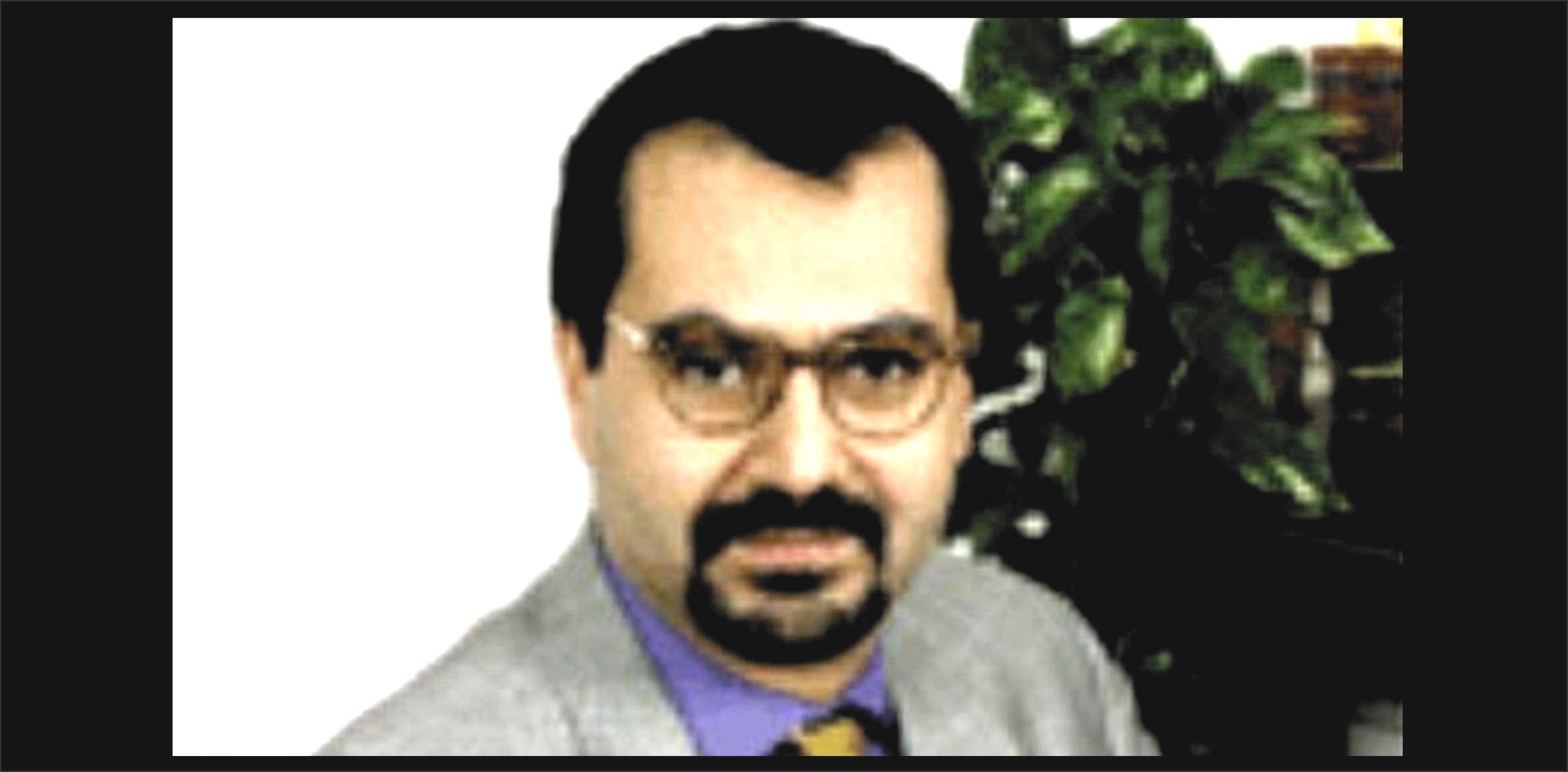
Famous criminal lawyer Dr Giancarlo Costa - did he depart Knox’s team with doubts about her?
Recapitulating Our Purpose
In Post #10 below we hinted at two items - in fact, they are two documents - that resulted in a sharp drop in Knox’s credibility.
We said this about how Knox’s Perugia lawyers were affected.
It seems impossible to know about these items, and yet still believe that Knox was telling the truth. Lawyers often encourage their clients to tell the truth and good lawyers never encourage their clients to lie. And yet here Ghirga, Dalla Vedova, Bongiorno and Maori would have known from latest early 2008 that Knox’s claims on the “interrogations” were in fact made up.
And if so, they must have asked themselves, why? Why did Knox have to lie? In all the legitimate legal processes, meaning all those except the Hellmann appeal, the defense lawyers were seen by close observers to be dispirited and lacking the full punch that the certainty of innocence can bring.
Knox was lying. And they all knew. No hard proof, but it explains the timid cross-examinations. And it was the buzz around Perugia maybe put out by the Sollecito faction for which there is a sort of soft proof.
The one heavyweight among Knox’s lawyers, a prominent criminal lawyer from Rome called Dr Giancarlo Costa, who was with her at the 6-hour 17 December 2007 questioning (which we turn to next) inexplicably departed from her team early-on, leaving her with the much less experienced Ghirga and Dalla Vedova.
Sharp-eyed Andrea Vogt and Barbie Nadeau both noticed that no mention of Dr Costa was made in Knox’s book. Late in 2009 and again late in 2011 Andrea Vogt interviewed him, and he seemingly suggested that Knox might have been better served at the end of the process by a negotiated plea, in effect similar to Guede’s. (If so, he is now proved right, and the remaining Knox lawyers or her family made a very bad call.)
We said this about how all the prosecutors and all the judges were affected.
In the years that followed since, these two items helped to changed legal mindsets, from Prosecutor Mignini, to Judge Matteini, to Judge Micheli, to Judge Massei, to even Judge Hellmann, and so on to Cassation and the Nencini appeal.
Describing The Two Incriminating Items
Now we turn to the two items, the two documents, the two elephants in the room. They are rock-solid confirmation of all the testimony by investigators in Posts #2 to #9, and in days of defense cross-examination they were not argued with. They were correctly guessed by several emailers. They are of course:
(1) Rita Ficarra’s notes of the 12:45 session
Inspector Ficarra wrote up these notes at 8:00 pm on the evening of 6 November, about six hours after Knox and Sollecito were carted off to Capanne Prison.
This was long before she knew she would be contradicted and years before she knew she would be accused of criminal actions. The notes were in evidence, and it was clear during cross-examination that the defense teams had studied them.
She recorded a description of the session in direct line with her testimony in Hoax Post #2 and Hoax Post #3 and Hoax Post #4. It anticipated perfectly the scenario that emerged from other investigators present.
(2) Knox’s hand-written list of seven names
She wrote these out along with maps and annotations. The list had very obviously been created over a prolonged period of time. This must have occupied all but the final minutes of the session, at which point she lost her cool, had her first conniption, and fingered Patrick.
Here again from Post #2 is the testimony about it by Rita Ficarra. GCM stands for Judge Massei and GM stands for Dr Mignini.
RF: At that point I say to her: “for me it is important then that we write these [names etc down], that therefore, since you are waiting [NdT. i.e. for Raffaele], let’s go do a follow-up to the recap that you have already given me, have already submitted to me”. So I go to the office, that is to say, I go into the office room, and we begin to write.
GM: Listen: before continuing, she wrote a note?
RF: Yes.
GM: The note: you can, I believe you can consult/examine/refer to it.
GCM: Yes, certainly, it is permitted to consult/examine/refer to her records.
GM: I am referring to everything that that note reported.
RF: Yes, I’ve already said that, in effect”¦ The note of 6 November, at 2000 hours, I made it in the evening because having then not slept for two days, I went [straight] to bed in morning when I finished. Morning and afternoon.
The first part I’ve already related and it gives me indications about these boys, about non-Italians, about a certain PJ Peter Svizzero, who had seemingly been several times in their home and who lived nearby the area of via della Pergola 7.
Patrick, of the [sic] owner of the pub, Le Chique [sic], where she herself worked, I’ve already said, she gives me the mobile-phone information.
Then she speaks of a certain Ardak, a North African citizen, and gives me the mobile-phone information.
A certain Juve, an Algerian citizen, who worked occasionally at the Le Chique [sic] pub and who apparently lived in the vicinity of the home of another of the victim’s friends.
Sofie [sic]; also for him she gives me the mobile information.
Spiros, a young lad of Greek nationality, for whom she givers me only the mobile-phone information.
Shaki [Hicham Khiri], a Moroccan citizen who works in a pizzeria, frequents the [same] pubs [as those] frequented by all the girls of the victim’s group, and [is] also friends with Sofie [sic].
She furthermore reports about a black South African boy, short, who plays basketball in the Piazza Grimana court, [and] who on one occasion had apparently visited the home of the boys who lived underneath the apartment.
So Knox eagerly devoted considerable time to recalling and explaining who Peter Svizzero, Patrick, Ardak, Juve, Spiros, Shaki and a South African [Guede, disguised] were, with maps to some of their places and phone numbers thrown in. She was talking and writing at the same time. The four investigators needed to do little more than sit watching.
Contrast The “Explanation” In Knox’s Book
In her book Knox makes no mention of any of the above.
Fom 2007 to 2013 when her book came out, Knox’s tendency was to expand upon and embellish her own explanation for her conniption and fingering of Patrick.
This was despite the fact that her two-day stint on the stand in July 2009 focussed exclusively on this was disbelieved by the Massei judges and by most Italians who watched.
It was also despite the fact that she served three years for this with her guilty verdict confirmed even by Judge Hellmann labeling her a felon for life.
It was also despite the fact that after the 2009 trial those investigators she had impugned at trial sparked new charges still to be faced in a Florence court.
It was also despite the fact that more charges for her 2013 book and her Oggi interview are expected to be added by the chief prosecutor in Bergamo.
Amazingly, she was still digging herself in deeper as late as 2014. By far her longest, most self-serving and most surreal version of the session appeared as Chapter 10 of her book.
This chapter is 20 pages long and consists of page after page after page of invented dialogue. Everybody has long known that the last few pages were Knox’s malicious invention.
That the rest of the pages are too is also dead-certain.
Neither Rita Ficarra’s notes nor Knox’s list of names with maps and notes,one of which she created and both of which were repeatedly testified to right in front of her, are even mentioned anywhere in Knox’s book.
This dishonest dialogue and mass accusation of crimes is what Knox and Linda Kulman give us instead:
Police officer Rita Ficarra slapped her palm against the back of my head, but the shock of the blow, even more than the force, left me dazed. I hadn’t expected to be slapped. I was turning around to yell, “Stop!”””my mouth halfway open””but before I even realized what had happened, I felt another whack, this one above my ear. She was right next to me, leaning over me, her voice as hard as her hand had been. “Stop lying, stop lying,” she insisted.
Stunned, I cried out, “Why are you hitting me?”
“To get your attention,” she said.
I have no idea how many cops were stuffed into the cramped, narrow room. Sometimes there were two, sometimes eight””police coming in and going out, always closing the door behind them. They loomed over me, each yelling the same thing: “You need to remember. You’re lying. Stop lying!”
“I’m telling the truth,” I insisted. “I’m not lying.” I felt like I was suffocating. There was no way out. And still they kept yelling, insinuating.
The authorities I trusted thought I was a liar. But I wasn’t lying. I was using the little energy I still had to show them I was telling the truth. Yet I couldn’t get them to believe me.
Huh? Really? In fact only four were involved. The conversation was low-key. The list of names did emerge. Knox was never yelled at or hit, as her own lawyers publicly confirmed. And Rita Ficarra and others describe some exceptional kindnesses shown to Knox, before and after she spontaneously became disturbed, which at trial Knox confirmed.
Knox and Linda Kulman give us twenty more pages of this mass accusation of crimes, which not one witness confirmed or any court believed, more than enough to occupy the entire session, leaving no time for all the work on that list of names which was the sole point of the session and undeniably exists.
Saturday, August 02, 2014
Knox Interrogation Hoax #10: Why Prosecution And Defenses Never Believed Knox’s Version #1
Posted by Our Main Posters
1. Anti Knox Proofs In Plain Sight
American supporters of Knox argue that the “interrogation” is a “she said/they said” situation. One in which it is Knox that tells the world the truth.
And that the police had closed ranks to hide a brutal hours-long session resulting in Knox framing Patrick and that the “lost” recording of the “interrogation” would prove that she is the one that is right.
There is, of course, no recording, as it was an impromptu recap/summary session, with someone who might or might not have relevant information for the police. No legal system in the world requires the taping of that.
But there is in fact hard evidence the other way, that the investigators told the world the truth. Two items. Each mentioned often and assumed as givens in Posts #2 to #9.
Even if the days of crushing testimony left undented by cross-examination which we have posted was not enough, these items prove that the first scenario here is the truth and Knox has ever since lied.
Because several defense lawyers remarked on them without debating them, in cross-examining all the investigators who had any encounter with Knox on 5-6 November, all the defense counsel unquestionably knew that the items lurked there in the evidence pile in plain sight.
It seems impossible to know about these items, and yet still believe that Knox was telling the truth.
Lawyers often encourage their clients to tell the truth and good lawyers never encourage their clients to lie. And yet here Ghirga, Dalla Vedova, Bongiorno and Maori would have known from latest early 2008 that Knox’s claims on the “interrogations” were in fact made up.
And if so, they must have asked themselves, why? Why did Knox have to lie?
In all the legitimate legal processes, meaning all those except the Hellmann appeal, the defense lawyers were seen by close observers to be dispirited and lacking the full punch that the certainty of innocence can bring.
In the years that followed since, these two items helped to changed legal mindsets, from Prosecutor Mignini, to Judge Matteini, to Judge Micheli, to Judge Massei, to even Judge Hellmann, and so on to Cassation and the Nencini appeal.
If they are landmines, in the legal process they long ago went off.
And all along Knox should have known that the items exist, they were repeatedly talked about right in front of her in the court.
But Knox makes no mention in her book, or in her appeals, or in her email to Judge Nencini, or in her appeal to the ECHR (we presume). How odd.
2. See Proofs In Plain Sight
Click for Post: The Knox Interrogation Hoax #11: Why Prosecution And Defenses Never Believed Knox’s Version #2
Friday, July 18, 2014
Seeds Of Betrayal: Multiple Examples Of How RS And AK Have Stabbed Each Other In The Back
Posted by Our Main Posters
RS in Feb 2014 after Nencini-appeal guilty verdict
1. History Of Backstabbing #1 2007-2014
The other day, a claim was posted that claimed sources had said Knox would soon accuse Sollecito.
This inspired quite an outcry, and the claim’s heavy-handed suppression. Can you believe: by legal means? That claim really rattled a few cages.
Why was the claim so dangerous?
NOT because the claim was wrong. In fact because for seven-plus years Sollecito and Knox have repeatedly cycled between very occasional chummy hugs and very numerous aggrieved stabs in the back.
And for the most part the more-aggrieved Sollecito has come out ahead. The desperate Knox PR and apologists are simply stumped at how to stop him or how to explain all of this.
2. Phases And Kinds Of Backstabbing
We are now seeing the fourth phase.
- In 2007 (see below) Sollecito really damaged Knox’s situation and both stabbed the other in the back a lot.
- From 2008 right through 2011, desperate for confirmation of an alibi, an anxious Knox beamed pleas at a sullen Sollecito, for example in public “love letters” she wrote, and a public request to have a private chat.
- From 2012 upon provisional release it was now Knox being sullen, and hard to get. Now it was Sollecito in puppy-dog mode. He might have been driven by a genuine desire for a renewed relationship, but a highly publicised bid to set himself up safely in the US maybe made Knox wonder “Is this was true love?”.
- And from mid 2013 mutual knifings have been fast and furious, many now on Twitter, and Italy in particular is closely watching the show and waits agog as the justice system applies further heat.
The backstabbings break down into two varieties: (1) many are active-aggressive (as in: they actually complain about one another); (2) others were passive-aggressive (as in: they try to help themselves but conspicuously ignore the other.) Typically Sollecito’s aggression dominates over Knox’s.
3. Incidences Year By Year
1. The year 2007
Our emerging Interrogation Hoax series quotes multiple witnesses testifying how quickly and decisively Knox and Sollecito in the blink of an eye began dropping the other in it. Posts of relevance soon to be linked-to here.
From 6 November 2007 Knox and Sollecito were kept separated, and were not allowed to talk. (That continued to late 2011.) Sollecito was pretty easy to read: he had little interest in talk. A sulky silence was his norm.
1 Click for Post: Officer Moscatelli’s Recap/Summary Session With Sollecito 5-6 No
On 6 November Sollecito’s statement to Inspectors Moscatelli and Napoleoni included this about Knox :
I know Amanda for two weeks. From the evening I first met her she started sleeping at my house.
The first of November I woke up about 11.00, I had breakfast with Amanda, then she went out and I went back to bed. I then met up with her at her house around 13.00-14.00. In there was Meredith who left in a hurry about 16.00 without saying where she was going.
Amanda and I went to the [town] centre about 18.00 but I don’t remember what we did. We remained in the centre till 20.30 or 21.00.
I went to my house alone at 21.00, while Amanda said that she was going to the pub Le Chic because she wanted to meet with her friends.
At this point we said goodbye. I went home, I made a joint. Had dinner, but I don’t remember what I ate. About 23.00 my father called me on my house phone line.
I recall Amanda was not back yet.
I web surfed on the computer for two more hours after my father’s phone call and I only stopped when Amanda came back in, presumably about 01.00…
In my previous statement I told a load of rubbish because Amanda had convinced me of her version of the facts and I didn’t think about the inconsistencies.
Yikes. Knox finds her best alibi yanked.
2 Click for Post: Summarised AK And RS Signed Statements 2-5 November 2007
Not so long after, possibly knowing about this, Knox comes out with a statement which points at Sollecito in turn.
I don’t know for sure if Raffaele was there that night [during the attack on Meredith] but I do remember very well waking up at my boyfriend’s house, in his bed, and I went back to my house in the morning where I found the door open.
3. [Source to come] Then on 8 November 2007 Sollecito submitted a statement to Judge Matteini which began:
I never want to see Amanda again. Above all, it is her fault we are here.
4. [Source to come] There were multiple further instances throughout the rest of 2007, quotes of which will be included soon in the Knox Interrogation Hoax series.
2. The Year 2008
5. [Source to come] Knox and Sollecito each appealed Judge Matteini’s ruling to the Supreme Court. Neither helped the other at all. Both appeals failed in April and they were each kept locked up.
6. Click for Post: Sollecito Turns On Knox? This Is Extraordinary”¦
In October toward the end of Guede’s trial and RS’s and AK’s remand for trial Sollecito’s DNA expert testifies to Judge Micheli that he found Knox’s DNA on Meredith’s bra and bra-clasp.
7. Click for Post: Sollecito Family Trial: On The Component About Their Alleged Attempt At Political Interference
Francesco Sollecito phone conversation in March 2008 with Vanessa captured by the Carabinieri in which he shows his extreme distrust and dislike of Knox who he blames for RS’s plight.
3. The Year 2009
8. Click for Post The Letters Between The Women’s And Men’s Wings In Capanne
Letters sent from Knox to Sollecito in February are published, showing an eagerness to get together, suggesting she really needs Sollecito to speak up and confirm her latest alibi.
9. Click for Post Trial: Defendant Noticeably Bubblier Than Meredith’s Sad Friends
This kind of callous, flippant behavior by Knox had the entire court backed off, not least the Sollecito team which had no desire to be chained to this seeming dangerous nut.
10. Click for Post Sollecito Not To Be Trumped By Knox Antics In The Female Wing Of Capanne
While RS and AK didnt have access to one another they sure had access to the media and in the Italian media a competitive Sollecito posted a steady stream of stories
11. Click for Post Trial: Knox Claimed Not To Have Been At The House On The Night
Knox suddenly claims this, despite contrary 2007 claims by both Knox & Sollecito, which messes with Sollecito’s alibi that he was at home alone on the computer.
12. Click for Post Seems Sollecito Is Feeling Really Sorry - For Himself (So What’s New?)
Sollecito tries to give himself an edge over AK by being extra-whiny about how awful he finds prison, and the distasteful little people he was being made to mix with.
4. The Year 2010
13 Click for Post How Each of The Three Subtly But Surely Pushed The Other Two Closer to The Fire
The Knox team avoided this popular Porta a Porta TV series, maybe too scared of hard questions, while the Sollecito lawyers and family used it to promote suspicion of AK and Guede.
14. Click for Post Newsweek Report From Italy On Damage Shrill Campaign Is Doing To Knox’s Interests & America’s Image
The shrill Knox campaign was irritating Italians and so hurting Sollecito’s image and prospects and it was not shoring up his own story. Bongiorno especially disliked the campaign.
15. Click for Post Rocco Girlanda’s Strutting Manic Grinning Intrusion Seems A Major Danger To Sollecito/Knox Harmony
The strangely kinky Member of Parliament (now voted out) paid numerous visits to Knox (“monitoring conditions”) and tried some nasty (though ineffective) political tricks - but not for Sollecito.
16. Click for Post The Knox Movie: Sollecito Reported Angry - Real Risk That His Defense Could Break Away From Knox’s
The Sollecito camp had a strong belief that the Knox camp was behind this TV movie and so they fought it, though it turned out quite even-handed and the RS role was minor.
5. The Year 2011
17. Click for Post Sollecito Defense Team Breaking From Knox Defense Team On Legal Measures To Stop Lifetime Movie
Further differences reported here between the two camps on the Lifetime movie which until it was aired was believed to favor Knox and build a case for her innocence.
18. Click for Post Tenth Appeal Court Session: Might Today’s Testimony Give Sollecito More Of An Advantage Than Knox?
After his team’s (attempted) discounting of the main evidence at Meredith’s house against Sollecito, Knox’s position looks way worse, as she has motives both for killing and cover-up.
19. Click for Post Is The Raffaele Sollecito Defense Team About To Separate Him From A Radioactive Amanda Knox?
Final days. Sollecito has at least five advantages over Knox. Better lead lawyer, better family in Italian eyes with smarter campaign, not much physical evidence at the house, no obvious motive unlike Knox, and a weak and washy personality Bongiorno plays up.
6. The Year 2012
20. Click for Post In Desperation A Council Of War? All Of The Sollecito Family Suddenly Hop On Flights To Seattle
Sollecito is the one now in puppy-dog mode, though his father has said publicly that the relationship with Knox is at an end; here the RS family sets out for Seattle to try to make it so.
21. Click for Post Sollecito’s Book Honor Bound Hits Italy And Already Scathing Reactions And Legal Trouble
Sollecito’s book, which subtly promotes Knox’s guilt, runs into legal trouble for false claims, which could also impact Knox’s claims and legal future. His seeming sticking with Knox damages Bongiorno’s defense strategy.
22. Click for Post Will Sollecito Drop Amanda Knox In It Further In A Public Seattle Interview At 7:00 PM Tonight?
Sollecito’s American book promotion tour often went badly and he seemed unaware of what was in his own book; though once again he was making out Knox was guiltier. His defense team despise the book.
7. The Year 2013
23. Click for Post Knox & Sollecito Meet - To Attempt To Bury The Hatchet Other Than In Each Other?
The second public Sollecito attempt to end up with Knox, who already had chips on her shoulders about him but went through this charade. Soon, they were back to whacking one another.
24. Click for Post Seeds Of Betrayal: Sollecito Twice More Implies Evidence Against Knox Much Stronger Than Against Him
Sollecito sustains this steady drum-beat of putting Knox down, highlighting the evidence against her, repeatedly saying he stuck with her despite no evidence against him (no deal helping RS was ever offered).
25. Click for Post Seeds Of Betrayal: In Interview Knox Reveals To Italy Her Considerable Irritation With Sollecito
Knox does an extended interview with Oggi (for which she and Oggi are being charged) lying about officials and the evidence, but also uttering her angriest blast yet against Sollecito.
8. The Year 2014
26. Click for Post Rejected Yet Again By Knox, Sollecito Seems Frantic To Avoid What Might Be A Final Return To Italy
Sollecito (like Sforza) was desperately looking for someone to marry him, to keep him in the US. Kelsey Kay was briefly interested, but he dumped her; he had told her Knox had recently turned him down.
27. Click for Post What We Might Read Into Sollecito Lawyer Giulia Bongiornos Final Arguments To The Appeal Judges
Bongiorno shows contempt for Knox; she effectively conveys the sense of the RS family that a crazed Knox dragged RS into this. She see the RS book as a pro-Knox con job by her team.
28. Click for Post As Knox & Sollecito Try To Separate Themselves, Each Is Digging The Other In Deeper
Sollecito is clearly trying to distance himself from Knox now, claiming that there is far more evidence against her than against him. Knox’s irritation with him is growing.
29. Click for Post Sollecito Suddenly Remembers He Wasnt There But Cannot Speak For Knox Who (As She Said) Went Out
Members of Sollecito’s family are believed to be taking their anger at Knox to Twitter and making numerous taunts while emphasizing how they believe Sollecito was dropped in it by Knox and is less to blame.
30. Click for Post Spitting In the Wind: Sollecito News Conference Backfires On Him AND Knox - What The Media Missed
Really irritated at the US-written RS book, Bongiorno goes a long way to separating the two perps in the minds of Italians; however RS hedges a little though, after having said the evidence points only to Knox.
4. Interim Conclusion
There were also myriad instances of mutual put-downs in their two books. Public squabbles post-2014 will soon be linked-to. The war by other means also continues on Twitter. Briefly it hit the bathshit-crazy Ground Report website.
This feud is obviously driven mostly by Sollecito. Much damage to Knox is already done, and Italians adamantly want her put away. A brighter family and paid team might now be saying “It is time for a Plan B and doing something to warm up Italy”.
Wednesday, July 16, 2014
On-Steroids Knox/Marriott PR Provokes Sollecito Reaction, Guarantees Long-Term Hurt To Knox
Posted by Peter Quennell
Act 1. Hubris Of The Knox Public Relations Described
A long report on Marriott’s PR appeared late in 2011 after Knox was provisionally released.
David Marriott never visited Amanda Knox during her four years in an Italian prison. He met her this month, when she stepped off a plane in Seattle.
Yet for Knox and her family, Marriott was as important a player in her ordeal as anyone in the courtroom. As Knox’s publicist, beginning three days after her arrest, Marriott worked to convince the international public that she did not murder her British roommate while studying in Perugia.
“Hiring him was one of the smartest things we ever did,” said Curt Knox, Amanda’s father.
The article goes on to describe how family and friends were pushed into the limelight and specific big TV networks targeted. It talks about great financial opportunities for Knox.
Marriott himself demonstrates no understanding of the case - in fact. he sounds proud of his ignorance and his reflexively anti-Italy stance. To a smarter Curt Knox those might have been red flags.
Act 2: Brutal Overkill Of A Flailing Campaign Described
In October 2013 our main poster Media Watcher laid the blame for the slow-moving Knox media cooling at David Marriott’s door.
Now The Examiner is only one of many preparing to take another retaliatory whack.
Public relations is perfectly understandable for celebrities, politicians, or executives, but murder suspects too? At first this aggressive proliferation of pro-Knox articles, tweets and commentary were justified as a defense against the European media’s negative portrayal of her. However, as time wore on, the overpowering presence of Knox’s media campaign has reached outlandish proportions.
Nowadays no blogger is safe to write a factual article about the Meredith Kercher Murder Case without contemptuous comments filling up their Disqus community. Patient webmasters at CNN.com must brace themselves for the onslaught of tens of thousands of interjections cluttering up each and every news article concerning the Meredith Kercher cum Amanda Knox murder case. Mob mentality seems to have taken over Knox’s PR initiative. Knox’s advocates have gone so far as to aim their crosshairs on the victim’s family.
The article, very well researched so far as it goes (it omits the third act below) goes on to describe how Sollecito’s camp has had to open a PR front to unchain Sollecito from Knox.
Act 3: How Knox Herself Is Losing Big Described
Know your enemy. Dont go about attacking the king unless you can kill him dead. Italy’s Niccolò Machiavelli (1469-1527) wrote about it in The Prince:
If one is striking out at an opponent, one should make sure that the fatal blow is struck, successfully ending the confrontation. Machiavelli wrote that “the injury that is to be done to a man ought to be of such a kind that one does not stand in fear of revenge.”
Wise words for Marriott and Curt Knox. They have remained steadfastly ignorant of the enemy. The attack has clearly failed. Wall-to-wall Italy now has the upper hand. And the PR is a millstone around Knox’s neck.
Here are seven of the ways the Knox-Marriott campaign has fallen short and has actually done real harm.
- 1) The real case for conviction remains rock-solid with many times the number of evidence points that a US or UK court would require for guilt.
2) No paper trail helpful to Knox exists between the American Embassy and the State Department, and the extradition agreement is precise and firm.
3) Knox’s bedrock claim, that she was pressured into a false accusation, not only cost her three years for calunnia but will cost her a defamation trial.
4) The defamatory Knox book that was the windfall David Marriott so jubilantly talks about is turning into an albatross around Knox’s neck.
5) The bloodmoney windfall will not remain Knox’s to keep, under Italian and American laws, and even Marriott’s fees could be at risk.
6) The PR is being unresponsive to ANY damaging claims, such as Knox’s attempted framing of Mignini, and its output is increasingly surreal junk.
7) The PR is making the Sollecito camp hostile, Italian media too; at the same time, since the failed appeal, the US media have chilled.
And so we see the slow death of a campaign built on xenophobia, racism, personal abuse, zero understanding of the details of the case, and zero understanding of the real Italy and its law.
Italy is actually rather a sucker for confession and penitence. Against a famously impervious justice system, the hard line was a terrible, terrible mistake.
Coming soon? “Firing him was one of the smartest things we ever did” says Curt Knox.
Below: From the Examiner, David Marriott and Seattle TV reporter Linda Byron
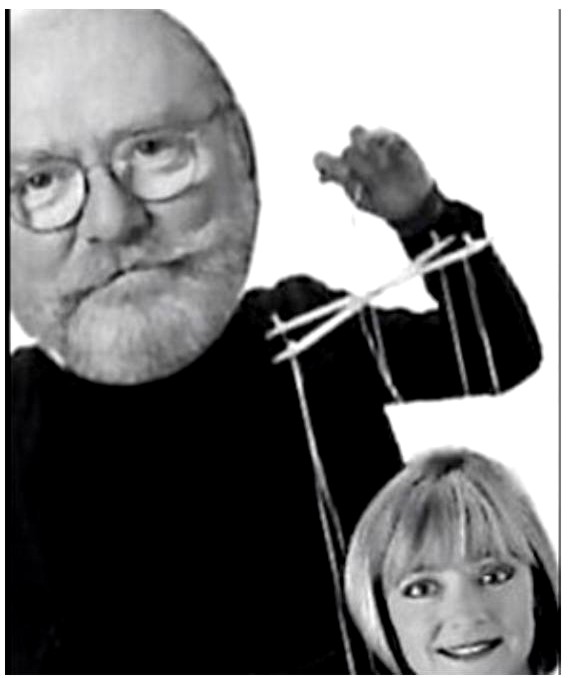
Friday, July 11, 2014
Knox Interrogation Hoax #9: Officer Moscatelli’s Recap/Summary Session With Sollecito 5-6 Nov
Posted by Our Main Posters
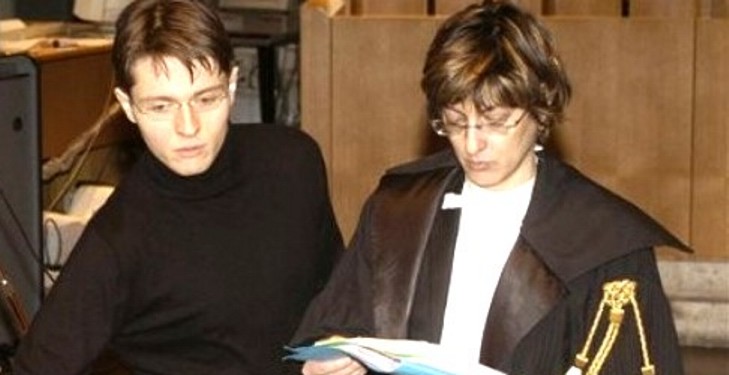
[Sollecito at trial on the day when Inspector Moscatelli testified]
1. What Really Happened on 5-6 November
The introduction to Hoax Post #1 explains what really happened at Knox’s recap/summary session on 5-6 November 2007.
In a sentence: Knox was there unwanted and grumpy, was advised to go and sleep, refused, agreed to build a list of possible perps (she listed seven, including Rudy Guede), spontaneously broke into a wailing conniption over a message she sent to Patrick, was semi-calmed-down and repeatedly provided with refreshments, and insisted on writing three statements without a lawyer, all of which said she went out on the night of the attack, all framing Patrick, one even pointing at Sollecito.
Posts #1 to #8 included all the testimony from three police staff (Ficcara, Zugarini, Donnino) who sat with Knox, and then some of the testimony from Napoleoni (who was mainly with Sollecito) and Giobbi (an officer from Rome who was elsewhere in the questura and overheard Knox’s conniption).
Inspector Daniele Moscatelli was also from the national police in Rome. He had previously questioned the boys who lived downstairs, and on 5-6 November he led the discussion with Sollecito, who was in a room some distance from Knox. On this night, the subject was to be some discrepancies in Sollecito’s phone records. Expectations were low, and many others were still being similarly questioned.
There was some limited interaction with Rita Ficcara’s recap/summary session with Amanda Knox, so the claims made here and their timing will become very important.
At the end of the session Sollecito’s signed statement for Inspectors Moscatelli and Napoleoni included this about Knox :
I know Amanda for two weeks. From the evening I first met her she started sleeping at my house.
The first of November I woke up about 11.00, I had breakfast with Amanda, then she went out and I went back to bed. I then met up with her at her house around 13.00-14.00. In there was Meredith who left in a hurry about 16.00 without saying where she was going.
Amanda and I went to the [town] centre about 18.00 but I don’t remember what we did. We remained in the centre till 20.30 or 21.00.
I went to my house alone at 21.00, while Amanda said that she was going to the pub Le Chic because she wanted to meet with her friends.
At this point we said goodbye. I went home, I made a joint. Had dinner, but I don’t remember what I ate. About 23.00 my father called me on my house phone line.
I recall Amanda was not back yet.
I web surfed on the computer for two more hours after my father’s phone call and I only stopped when Amanda came back in, presumably about 01.00”¦
In my previous statement I told a load of rubbish because Amanda had convinced me of her version of the facts and I didn’t think about the inconsistencies.
This will already be a long post, and the last for now on testimony from the police. So we’ll highlight all the devils in the details of all this police testimony in our next post. This translation is by Catnip and is also posted on the excellent wiki.
Please click here for more
Sunday, July 06, 2014
Spitting In the Wind: Sollecito News Conference Backfires On Him AND Knox - What The Media Missed
Posted by SomeAlibi
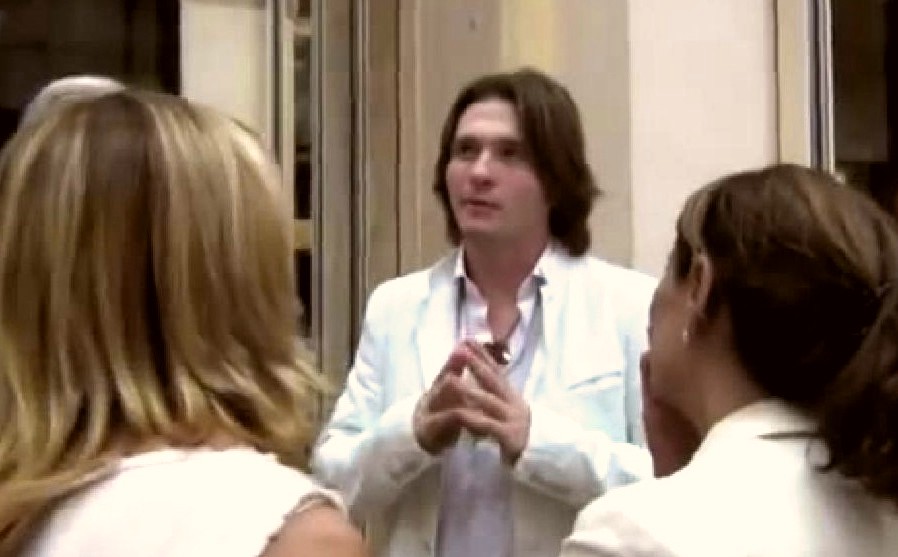
Raffaele looks for divine inspiration? Precious little showing at press conference on Tuesday
What on earth were they thinking?
At Tuesday morning’s press conference Raffaele Sollecito’s team did at least two completely inexplicable things.
Firstly, they scored a spectacular own-goal on the facts surrounding the murder of Meredith Kercher, which has been missed by the press.
Secondly, they did it all for no legal benefit.
In the run up to the press conference it was widely trailed that Sollecito would throw Amanda under the bus by removing her alibi - that she spent the whole of the night of the 1st of November with him at his apartment. After the press conference, it was widely reported he’d done that very thing.
Wrong. Very wrong. In fact, Team Sollecito did the opposite and put a position forward entirely consistent with how the prosecution says Knox, Sollecito and Guede all come together.
Speaking in tongues
There are only a few grains of sand left in the hourglass before Cassation and confirmation of the sentence, which will see Sollecito return to jail until he is well into his forties. You would have thought that it would be “absurd” for him to do anything other than speak clearly and unequivocally.
But that is precisely what didn’t happen…
Sollecito and lead counsel Giulia Bongiorno performed a bizarre tip-toe dance, avoiding saying anything clear or direct. Instead, they made points by reference and allusion, with an unhealthy assortment of metaphorical nods, winks, heavy coughs and adjustments of the lapels at key points.
Did Raffaele say that Amanda left his apartment in the early evening? No. As Bongiorno tortuously phrased it: “Raffaele takes note of the fact the court of appeal found there was something of a lie over Amanda’s whereabouts”¦ of the fact the court [says] she was not with him in the early evening”.
Takes note? What on earth was that all about? Well, the sentence mangling was because at the final Cassation hearing next year, no fresh facts can be heard. The only arguments that can be heard are on failure of due process or failure of logic and reasoning as pmf.org Italian legal expert Popper explains extremely clearly here:
I think we should clarify a number of points after discussions of past few days:
1) Corte di Cassazione does not hear evidence and can only discuss the possible invalidation of a sentence or part of it ref the points appealed, not other points. Corte di Cassazione does not hear defendants or private parties. In public hearings only a specific category of lawyers (Cassazionisti) can speak before them
2) Corte di Cassazione therefore cannot take into account evidence now given spontaneously by the defendant RS directed against AK (eg open door of Filomena) as in Court he has never accepted cross-interrogation of AK’s lawyers, except if on some points RS’ lawyers appealed in writing for manifest illogicality of reasoning but what he says now cannot be used. Keep in mind Cassazione cannot discuss the merit of the judgement of Nencini and Massei, only invalidate it if this judgement and reasoning were based on clearly illogical arguments or neglected key evidence
3) Only if Cassazione invalidated Nencini and remanded to a further appeal a possible renovation of “istruttoria” (evidence discussion) may take place. Otherwise all RS has to say now, even if he confesses she did it and he only helped clean [unlikely IMHO], cannot be taken into account by Corte di Cassazione and would have to be the possible argument for a “revisione del giudicato” (a case in which, after a final judgement, a convicted person claims there is a clear error and brings solid evidence to prove it, it is quite rare only in case of obvious errors. Procedure can be easily denied and IMHO will be denied if he said he just helped clean as Courts have already considered that scenario and rejected it)
4) any discussion on cocaine was not taken into account to convict (even if true, no evidence they sniffed that night) and will not be taken into account by Corte di Cassazione, in theory will not be taken into account for extradition hearing in US Court as this only verifies there is a conviction and treaty respected. PR is another matter, but I think it is not correct to say that would be added to extradition request and may change legal course. Same goes for garage video.
5) The press conference of RS was useless, the panel of Corte di Cassazione judges has not even been appointed and, while not illegal, it is completely unusual for a defendant to hold a PC talking about an appeal (RS is not a public figure or administrator). What counts is the appeal document that we have read. The “great” point that AK does not talk about RS in memoriale is too stupid for me to discuss it here. We must conclude this was only publicity for Bongiorno, she knows she is likely to lose and wishes to make it seem it is a close call. She has minimal chances, approximating 0%.
6) RS has very low chances to succeed, and LG for AK even less, as Corte di Cassazione explained well what they wanted and Nencini gave it to them. Court presided by AN explained who the people concurring with RG in the murder are and gave clear logical explanation for such conclusion. Also, Nencini confirmed first instance, a trial that was perfectly valid for Cassazione after first appeal was invalidated.
There have been cases of a double iteration at Cassazione eg in very complex terrorism trials, evidence was scarce mostly based on witnesses who wanted to sidetrack other investigations. Here, as Alan Dershowitz said [he does not know much about case but this and a few other points he got absolutely right] all pieces of evidence point exactly in the same direction creating a good case [AD does not know it is overwhelming; maybe he did not read all docs].
One other thing AD said, most FOA and JREF and IIP tend to forget: Court is the judge, not them, Court has the responsibility to evaluate all evidence and issue a judgement that, as long as explained logically and legally in writing [something a US jury would not be required to do] using all available elements, will stand and be final after Cassazione.
So, Team Sollecito needed to phrase all of their “points” as things already said by the Appeal Court, which are now facts in law unless overturned due to failure of logic etc.
From there they must then try and make insinuations about these “˜facts’, all the while dressing it up as if it were procedurally in accordance with the pre-Cassation phase. Even though “¦ and here one should be allowed a Pepto Bismol given all the twisting and turning”¦ as Popper explains, it will have no effect on the outcome whatsoever.
In the real world, it was quite clear that what Sollecito was actually saying was, “Yes, she did go out in the early part of the evening, even though I’m not personally saying it, those are the Court’s words.”
He left a massive hanging dot dot dot in place of: “˜Hey everyone - Amanda went off and performed the murder with Guede, not me! No, I haven’t stated the time of her return, because it’s not me talking, it’s the court, but she was out, so figure it out for yourselves”¦’
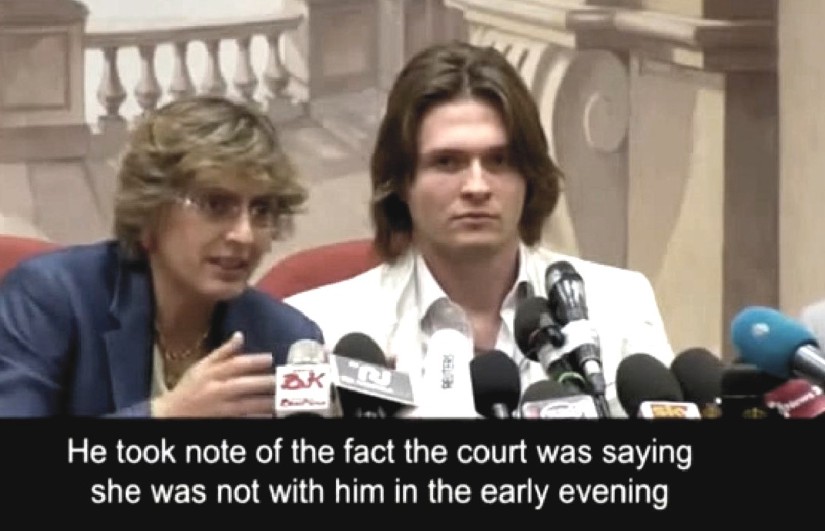
Not with him in the early evening, which is not the night, we are told, that begins around 11:00 pm
The light at the end of the tunnel has steam billowing underneath it
Here, Team Sollecito run into a horrendous brick-wall of facts which lays Raffaele and Knox out cold. It’s not hard to work it through, but the world’s weary press are too fatigued by this case to even do some simple “if-then” calculations and draw the appropriate conclusion.
So, let’s do it for them here”¦
- Team Sollecito are saying Knox went out before she sent her SMS reply to boss Patrick Lumumba at 8.35pm. This is in accordance with the case for the prosecution from day dot. They now agree, as the prosecution have always said, that Knox is out of Sollecito’s flat sometime before 8.35pm. (In fact, we know it’s by at least 8.17pm because this is when she received Lumumba’s text to say that she didn’t need to go into work).
- Team Sollecito then pause and wink to let you do the math(s). If the murder occurred circa 9.30pm by their estimate (which it didn’t, but let’s go with this for a second) and you don’t know when she returned to Sollecito’s for the night, then he couldn’t have done it, because he was at home, but she could.
Here, the Press stop and report Amanda is under the bus. Thank heavens for that, not a stain on Raffaele’s Warren Beatty white suit and can we all go home now?
Wrong. In fact, it’s a horrendous own-goal, which ricochets in hard off the testimony of both independent witness Jovana Popovic and Raffaele’s own father Francesco.
- At 8.40pm, Popovic arrives at the front door of Raffaele’s apartment and testifies that Amanda Knox opens the front door. It has been suggested that Popovic’s self-estimated timing of 8.40pm is wrong, but this rings very hollow indeed. Popovic had done the walk from her late class ending at 8.20pm many times, and knew it took 20 minutes because she lived on the same road ““ Corso Garibaldi ““ as Raffaele himself. Both Massei and Nencini agreed with this too. Ouch.
- So Knox, who was out previously, is already back, at least 50 minutes before even the putative time of murder put by the defence and a couple of hours plus before the real time.
- In fact, Raffaele’s father Francesco testified to the Massei court that he was certain that Amanda was with his son when he spoke to him at 8.52pm that night. And this was not contested by the defence. Double ouch.
So, even if Knox went out in the early evening, she is objectively shown to have been back at the apartment well before 9pm. And, if that is the case, both Knox and Sollecito are 100% back in the frame. And this is even before they are also seen by a third person who corroborates that they were together that night ““ Antonio Curatolo. Triple ouch.
Confirming how three became company
Worse yet, Knox has argued for 7 years that she never left the apartment. If Sollecito now “says” she did, but we know objectively that she is back at least by 8.40pm, it supports the prosecution case.
This was that Knox left for work and walked to near the cottage, in the area of the basketball court at Piazza Grimana, around where she received the text from Patrick saying not to come to work.
This is the exact time that Rudy Guede was having a kebab, only a couple of hundred yards away. This provides the opportunity for Knox and Guede to have seen each other. Knox, suddenly at a loose end, makes a plan, which involves asking for Guede’s help.
What might that help be? Well, the resurfacing story of Knox’s link with a cocaine dealer chimes nicely with the idea that Knox asked Rudy either to supply her or help her get some sort of drugs and that they arranged to meet back up once he had secured them.
Knox then returns to Raffaele’s to fetch him, is seen by Popovic and her presence acknowledged at 8.52pm by Papa Sollecito and son, before they both head out to connect with Guede back at Piazza Grimana. (Remember, this is where Knox “saw” Patrick Lumumba, when she tried to frame him).
Guede, as was his wont, managed to get himself invited back to the cottage, perhaps for a shared line. This is consistent with Knox’s prison piece “The Story of Marie Pace”, where there are at least two++ men present in a kitchen in a “party” type atmosphere taking drugs which ends up with a hospitalised victim.
It’s only one theory and there are others. However, what Team Sollecito managed to do this week was to confirm that Knox left the flat. Objective facts and witness testimony tell us the time by which she had returned.
And, in that round trip lies the entire timing, location and mechanism for how Guede became involved, which otherwise makes little sense. Now all confirmed by Team Sollecito…
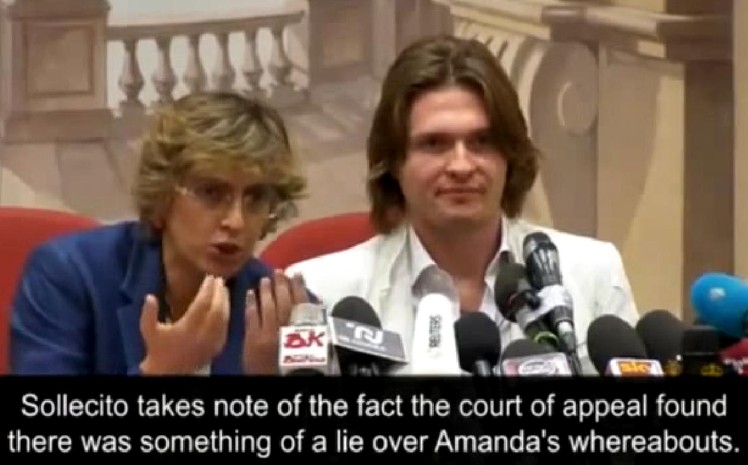
One of Raffaele Sollecito’s telling grimaces when Amanda Knox’s name is mentioned
What silence gets you
So what was the point? Face-saving for Raffaele? Hoping to key up populist support? Fat chance in Italy, where the case has been properly reported.
An opportunity to allude to a “truth” (the best one he can think of for now ““ other truths are available) and say that he and his family believe Knox is innocent? Pull the other one Raffaele!
It is quite clear that several members of the Sollecito clan think that Knox absolutely is guilty and their Raffaele is still too “honourable” to tell the truth. He merely aided the clean-up perhaps. Well in that case, why hasn’t he said exactly when she came back? Was it 11pm? 1am? Was it at 5am when the music starts playing. Why won’t he or you say?
Or”¦ was it face-saving for Bongiorno, as she faces defeat and seeks to protect her valued public persona? Well, as much as I’ve tried, I have no idea what they thought they were doing.
And to be honest with you, I honestly don’t think they were entirely sure, nor did they think through the consequences of the brick wall objectivity of Popovic + Papa Sollecito.
In the meantime, a family sits in Surrey listening and watching the weasel words and once again is insulted by this “honourable” all-in-white character who knows what “Amanda Marie Knox” did that night, but simply will not say.
Which of course he could choose to do at any moment, court proceedings or not, the way us normal human beings do it: not making allusion, not tipping a wink, but speaking the truth.
But he hasn’t and I suspect he won’t, even though it actually would now be the only thing that could mitigate the length of his inevitable prison term.
And for his acts and that silence he still won’t break - and at least here it is possible to finally speak with certainty - I believe he deserves every one of those 25 years.
Friday, July 04, 2014
The Status Of The Various Computers In The Case And Whether Anything Nefarious Happened To Them
Posted by Sallyoo
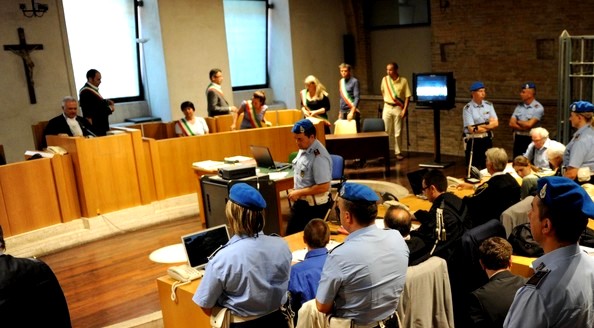
Trial court 2009 on one of several days computer and internet activity was testified to
1. Computer use as high-stakes evidence
There have been many arguments about computers during the case.
They began at the very beginning, and there is even now, in the final appeal by Sollecito to the Court of Cassazione, one remaining somewhat fantastical theory.
The facts surrounding the computer evidence collected by the prosecution have been obfuscated and contradicted by the defence using exactly the same techniques as have been used about the DNA and other forensic evidence in the case.
Blind the court (and the public) with hypotheses which very few people can follow, and use this ignorance to spread confusion and doubt.
Let’s try to shed some light.
2. Five key computers, plus
We know that Sollecito is pretty familiar with computers, he had two at the time, a MacBook and an Asus [1], both portables.[2] His apartment had a decent broadband connection, supplied, (using the Telecom Italia infrastructure) by Fastweb.
We know that both of these computers were sequestered from his apartment on the morning of Nov 6 2007, when Sollecito accompanied a squad of policemen despatched to search his apartment.
We know that the police removed, (on Nov 7), from the house in Via Della Pergola (where there was no telephone nor broadband service) a MacBook belonging to Meredith, a Toshiba belonging to Knox, and a portable computer belonging to Laura Mezzetti.
The police also took an HP portable from Lumumba’s apartment.
There is even another computer which the police already had possession of, and that is a Sony portable belonging to Filomena Romanelli. This computer Filomena herself had taken away from her bedroom shortly after the discovery of the murder, and which the questura, in the evening of Nov 2, required her to hand over to them because it formed part of the ‘crime scene’.
3. The police HD analysis begins
On Nov 13 a postal police technician (Marco Trotta) received a box containing five computers (two from Sollecito, Knox, Meredith and Lumumba).
On Nov 15, in the presence of Formenti, (a consultant nominated by the defence) Trotta took them apart (removed the hard disks) and attempted to make copies of the data recorded on them.
This is the point at which it is alleged the destruction of three hard disks occurred.
It is difficult to believe that this is the case. Not only because the equipment used had never before (or since) managed to trash a hard disk (and it had no problems with Lumumba’s disk) but also because of the state of Filomena’s computer, which never got anywhere near Trotta.
All of the computers had of course been in the hands of the squadra mobile for some days before being consigned to Trotta, allowing for the possibility of some earlier interference by some malfeasant policeman.
This isn’t likely, not only because Trotta insists that the computers were complete and superficially undamaged, and the hard disks factory sealed when he dismantled the computers, but also because of Filomena’s computer.
4. Filomena’s Sony machine
It is now time to go a little deeper into the history of Filomena’s Sony.
This was a fairly new machine, which she kept in a substantial computer carrying case. It was working perfectly on Oct 30 when she last used it. She had left it in her bedroom, the case standing upright beside her bed, when she went off to spend the brief holiday with her boyfriend.
She found it, still in the carrying case, lying flat in a pile of stuff under the broken window of her disturbed bedroom. [3]
The defence commissioned a Computer Expert Report, entered during the Massei trial, which talked about the reason for the data being irrecoverable on the three computers’ disks.
Their conclusion was that the electronic circuitry controlling the hard disks had, in all three cases, suffered damage, most probably due to an electrical overtension. The circuitry had been ‘fried’.
They were unable to be certain how or when this might have occurred, or to opine on whether it was deliberate.
Filomena, in the presence of Gregori, (another communications police officer), at the Questura on the evening of Nov 2 attempted to turn on her Sony. It wouldn’t work. The hard disk would not respond properly.
When she got it back on Dec 18 and gave it to a private computer technician, he said the control circuitry on the hard disk is ‘fried’. Exactly the same fault as had occurred on the other three, which we are expected by th defense to believe was either a deliberate piece of police sabotage, or proof of police incompetence.
5. The Sollecito computers
The important computers, of course, are those owned by Sollecito because he is, even now, still trying to force an alibi out of them.
The MacBook has been accurately interrogated to death, most particularly by a defence expert named Antonio d’Ambrosio who gave very clear testimony at Massei on 26 Sept 2009.
He was even generous enough to acknowledge that the investigations carried out by the postal police were correct, and well interpreted, and that he was able to uncover a little more information simply because he wasn’t limited by forensic protocols (and could therefore reveal information not visible to the Encase software used by the police) when he examined a copy of the cloned disk from the Mac.
Basically the only ‘news’ in this interesting testimony was an interaction with the Apple website at 00.58 on Nov 2, which he did consider a human interaction with the computer.
6. Activity on the Internet
Sollecito maintains he spent the whole evening and night in his flat. At first his story was that he was sending e-mails and surfing the web. This was quickly demolished by reference to the IP log supplied by Fastweb, the broadband supplier.
It’s necessary to get slightly technical here.
Most of what we call The Internet, and certainly everything which is called The Worldwide Web, including e-mail clients, subscribe to a protocol which (in shorthand) means everything is a Port 80 request.
The individual computer, via its router, contacts the ISP (Fastweb, in this case) and identifies itself by means of a unique IP address. The ISP then directs the communication to the IP of the website requested.
This is all recorded on the Fastweb network. It is certain that no Port 80 requests were made from Sollecito’s apartment (whichever computer he may have been using) between 18.00 on Nov 1 and 00.58 on Nov 2.
There are parts of the international communications network which don’t use Port 80 protocols. The most ‘innocent’ of these are Peer to Peer (P2P) networks ““ in widespread use for distributing and downloading music and video files.
Sollecito certainly availed himself of these services, using a program called Amule on his Mac. He had a folder containing downloaded files, which was accessible to the program, and thus also accessible to anyone in the world who wanted a copy of something which Sollecito had in this shareable folder on his computer.
If he wished to save the file for posterity, he would move or copy it from this accessible folder into his own archive.
Video files are large, and they take a long time to download. Clearly, to download a file, or to make your publicly accessible folder available, the computer has to be turned on and connected to a router.
If you use these file sharing services extensively, it implies that you keep your computer turned on and connected all the time. It seems likely that this was Sollecito’s habit.
Clearly, you need to automate this sort of transfer ““ often a large file will be accessed in part from one remote computer, and another part will be located on another remote computer ““ so you simply instruct Amule to get you a film, or a list of films, and you can walk away from the computer.
Even D’Ambrosio is unable to be certain that a human interaction occurred at 21.26 on Nov 1, or whether a pre-requested download of Naruto commenced.
However, no IP addresses are exchanged when connecting to a P2P network, and so it is impossible (from ISP records) to trace any traffic.
It is possible though, from the hard disk, to discover what has been downloaded and saved to a computer on a P2P network, and exactly when ““ but to distinguish an automated process from a user instigated one is not possible.
7. Computers and Hellmann appeal
Now we move onto the Hellmann appeal, where a report from this same consultant D’Ambrosio was accepted into the case files. I haven’t been able to find this report, and Judge Hellman doesn’t even refer to it in his sentencing report.
However, the gist of this D’Ambrosio report is included in the current ricorso (appeal) from Sollecito to the Court of Cassazione.
8. Computers and Cassation appeal
We hear a bit about screensaver behaviour, and quite a lot about post Nov 1 interactions overwriting earlier actions.
The major ‘fresh’ theory now depends on asserting (more than four times in the ricorso) that the postal police destroyed Sollecito’s Asus, and that this action has meant that Sollecito’s alibi cannot be proved.
The lack of any signs of interaction on the Mac can be explained (so we are informed) by the Mac and the Asus being networked together, using a file sharing utility named Samba, and if the (broken) Asus could have been accessed it might have shown that it had been controlling the Mac.
So the Mac would have been doing things at the command of its owner, but because the owner was interacting with the keyboard of the Asus rather than that of the Mac, these actions are undetectable on the Mac.
This is what we are now being asked to believe.
9. Conclusion and way forward
I think this is an accurate summary of the relevant parts of ‘computer evidence’ discussed, or deposited, during the hearings and in the ricorso. I look forward to any comments, clarifications, corrections, but above all, to any new theories about how and when the four hard disks got trashed.
From other sources there are an additional two hints at possible new or ignored evidence:
The BBC reported, on 14.03.2009, the following sentence. “A second computer belonging to Mr Sollecito also showed no activity but the suspect had himself admitted it had been broken before the crime was committed.” [4]
And then we have Sollecito, in his prison diary of 11.11.2007, being rather more than aware that his computer is not going to be useful to him as an alibi.
I have been very anxious and nervous in the last few days, but to see my father who tells me “do not worry, we will get you out” makes me feel better. My real concerns are now two: the first one derives from the fact that, if that night Amanda remained with me all night long, we could have (and this is a very remote possibility) made love all evening and night only stopping to eat… it would be a real problem [casino] because there would be no connections from my computer to servers in those hours…
No connections in those hours? Hmmm.
10. My references
[1] This computer is sometimes referenced as an Acer. In Trotta’s testimony (he is reading from notes) it is listed as an Asus, so I have used this name. There is only one computer whether it’s an Asus or an Acer.
[2] There is a reference to a non portable computer in Sollecito’s apartment (in the testimony of Popovic). This is the only mention of any non-portable (i.e. desktop or tower cased machine with separate monitor). Given the position from which Popovic saw the screen (on a desk, with Knox sitting in front of it) it seems likely that she was mistaken.
[3] Amanda Knox frequently refers to seeing Filomena’s computer on her desk after the ‘break in’. At one point in her testimony she changes her mind and corrects herself to change the computer to camera.
[4] http://news.bbc.co.uk/2/hi/uk_news/7943828.stm I have not found another source for this comment.
Wednesday, July 02, 2014
Amanda Knox Left Sollecito’s House By Herself? Both Claimed It But Neither Of Their Books Back It Up
Posted by Our Main Posters
1. Current Contexts Of Sollecito’s And Knox’s Books
Neither book is exactly riddled with truths.
The claims throughout Sollecito’s book are soon to be the subject of a trial in Florence and the claims throughout Knox’s book are soon to be the subject of a trial in Bergamo. So both will need to endorse or reject what they wrote.
Plus Knox will need to endorse or reject this, from the first unforced statement she insisted on making without a lawyer on 6 November 2007. This is what Sollecito is gleefully using against her now.
Last Thursday, November 1, a day on which I normally work, while I was at the house of my boyfriend Raffaele, at around 8:30 pm, I received a message on my cellular phone from Patrik, who told me that the premises would remain closed that evening, because there were no customers, and thus I would not need to go to work.
I responded to the message by telling him that we would see each other at once; I then left the house, telling my boyfriend that I had to go to work. In view of the fact that during the afternoon I had smoked a joint, I felt confused, since I do not frequently make use of mind-altering substances, nor of heavier substances.
I met Patrik immediately afterward, at the basketball court on Piazza Grimana, and together we went [to my] home.
2. From Sollecito’s Honor Bound (Simon & Schuster 2012)
Amanda and I smoked a joint before leaving the house on Via della Pergola, wandered into town for some shopping before remembering we had enough for dinner already, and headed back to my place. Shortly before six, a Serbian friend of mine named Jovana Popovic rang the doorbell and asked if I’d mind driving her to the bus station at midnight to pick up a suitcase her mother was sending. I said that would be fine. When she left, Amanda and I sat down at the computer to watch a favorite movie, Amélie.
We had to stop the film a few times as the evening wore on. First, Amanda got a text from Patrick telling her it was a slow night because of the holiday and he didn’t need her to come in after all. It was like getting an unexpected snow day””we were thrilled. Amanda texted back: Certo ci vediamo più tardi buona serata! Sure. See you later. Have a good evening.
Then my father called. He and Mara had just seen the Will Smith movie The Pursuit of Happyness, and he told me how beautifully it portrayed the relationship between a father and his son. My father was always making phone calls like this. It was sweet that he wanted to share his experiences, but he also made everything he said sound vaguely like an order, as if laying out the parameters of how I should react to things before I’d had a chance to form my own opinion. But he never stayed on the line for long””he is too nervy and impatient””so I listened calmly and the call was over in less than four minutes.
In the meantime, Jovana dropped by again and told Amanda that I didn’t need to drive her to the bus station after all. Now we didn’t have to leave the apartment. The evening was ours, and we couldn’t have been happier. We switched off our cell phones, finished watching Amélie, and discussed what to make for dinner…
When Amélie ended, I went into the kitchen to take care of some dishes left over from breakfast before we started making dinner. I soon realized that water was leaking out of the pipe under the sink, and I cursed under my breath. I’d had a plumber come and fix the sink just a week earlier, and he had made me buy all sorts of replacement parts that clearly were not put together properly. I suspected he had left them loose on purpose to force me to pay for another visit. As Amanda and I threw kitchen towels onto the puddle on the tile floor, I decided I was going to let my landlady deal with it from now on.
“Don’t you have a mop?” Amanda asked. I did not. She offered to pick one up from Via della Pergola the next morning and bring it round.
We cooked a fish dinner, did our best to wash the dishes again, and tumbled gratefully into bed in each other’s arms. Only later, when I lay in the dark, unable to sleep, did it dawn on me that Papà had broken his usual habit of calling to wish me good night.
It turned out he did so out of consideration. He had been about to pick up the phone when my stepmother talked him out of it. “Stop bothering him,” Mara said, as they got ready for bed around eleven o’clock. “He’s with Amanda, and they want to be alone. Why don’t you send a text instead?”
My father took her advice, but because my cell phone was turned off, I didn’t receive the message until six the next morning.
It was a desperately unlucky combination of circumstances. If my father had tried my cell and then called me on the home line””which he would have done, because he’s persistent that way””I would have had incontrovertible proof from the phone records that I was home that night. And the nightmare that was about to engulf me might never have begun.
My father called my landline a little before nine thirty the next morning to make sure we would be ready for our day trip to Gubbio. I was too groggy to talk. I’d been up several times in the night””listening to music, answering e-mail, making love””and wanted only to go back to sleep. Amanda got out of bed and said she was going home to shower and change her clothes, so I walked her to the front door, gave her a kiss, and crawled back under the covers.
3. From Knox’s Waiting To Be Heard (HarperCollins 2013)
Raffaele and I were good at being low-key together. We chilled out in the common room and smoked a joint while I played Beatles songs on the guitar for an hour or so. Sometime between 4 P.M. and 5 P.M., we left to go to his place. We wanted a quiet, cozy night in. As we walked along, I was telling Raffaele that Amélie was my all-time favorite movie.
“Really?” he asked. “I’ve never seen it.”
“Oh my God,” I said, unbelieving. “You have to see it right this second! You’ll love it!”
Not long after we got back to Raffaele’s, his doorbell rang. It was a friend of his whom I’d never met””a pretty, put-together medical student named Jovanna Popovic, who spoke Italian so quickly I couldn’t understand her. She’d come to ask Raffaele for a favor. Her mother was putting a suitcase on a bus for her and she wondered if he could drive her to the station at midnight to pick it up.
“Sure,” Raffaele said.
As soon as she left, we downloaded the movie on his computer and sat on his bed to watch it. Around 8:30 P.M. I suddenly remembered that it was Thursday, one of my regular workdays. Quickly checking my phone, I saw that Patrick had sent me a text telling me I didn’t have to come in. Since it was a holiday, he thought it would be a slow night.
“Okay,” I texted back. “Ci vediamo più tardi buona serata!”””“See you later. Have a good evening!” Then I turned off my phone, just in case he changed his mind and wanted me to come in after all. I was so excited to have the night off that I jumped on top of Raffaele, cheering, “Woo-hoo! Woo-hoo!”
Our good mood was only elevated when the doorbell rang again at 8:45 P.M: Jovanna had come back, this time to say that the suitcase hadn’t made the bus and that she didn’t need a ride after all. With no more obligations, we had the whole rest of the night just to be with each other and chill out.
After the movie ended, around 9:15 P.M., we sautéed a piece of fish and made a simple salad. We were washing the dishes when we realized that the kitchen sink was leaking. Raffaele, who’d already had a plumber come once, was frustrated and frantically tried to mop up a lot of water with a little rag. He ended up leaving a puddle.
“I’ll bring the mop over from our house tomorrow. No big deal,” I said.
Raffaele sat down at his desk and rolled a joint, and I climbed into his lap to read aloud to him from another Harry Potter book, this one in German. I translated the parts he didn’t understand, as best I could, into Italian or English while we smoked and giggled.
Later, when we were in bed, our conversation wound its way to his mother. His dad had divorced her years before, but she’d never gotten over the break. In 2005 she had died suddenly. “Some ¬people suspect she killed herself, but I’m positive she didn’t,” Raffaele said. “She would never do that. She had a bad heart, and it just gave out. It was horrible for me””¬we were really close””¬and I miss her all the time.”
I felt terrible for him, but it was hard for me to relate. The only person I knew who had died was my grandfather, when I was sixteen. I felt sad when my mom told me, but my grandfather had been old and sick, and we had expected his death for a few weeks.
I’m sure Mom and Oma must have cried, but my strongest memory is sitting around the dining room table telling funny stories about Opa. My grandmother’s message””that grieving was something you did in private; that you didn’t make public displays and you kept on moving forward””had remained with me.
Hearing the pain in Raffaele’s voice, I hurt for him. Nestling my head on his chest, I tried to be comforting.
As we started kissing, Raffaele gave me a hickey on my neck. We undressed the rest of the way, had sex, and fell asleep.
We’d known each other for exactly one week and had settled so quickly into an easy routine that one night seemed to melt happily and indistinguishably into the one that came after.
We planned to break our routine the next day, All Souls’ Day, by taking a long drive into the countryside, to the neighboring town of Gubbio. The November 2 holiday wasn’t usually observed with as much fanfare as All Saints’ Day, but since it fell on a Friday in 2007, a lot of people, including us, were turning it into a four-day weekend. I thought, Italians having a good time again. And I couldn’t wait.
Tuesday, July 01, 2014
Twice Today Amanda Knox’s Long-Running Interrogation Hoax Turns On Her To Bite Her In The Tail
Posted by Peter Quennell
1. Today’s Sollecito Claims
Take a look at this Knox statement and this Knox statement and this Knox statement.
If you think Knox was in a planned police interrogation, and her framing of Patrick was forced, over some hours, by tag-teams of cops, with no food, no drinks, no interpreter, and no lawyer, then the cops look bad and Knox is maybe home free.
But in fact voluminous testimony at trial by a whole host of those present in Perugia’s central police station on the night of 5-6 November 2007 confirm that absolutely none of that is true.
In fact Knox rolled over on Patrick in a heartbeat, and it happened during a quiet session of name-listing of possible perps, a task in which Knox was pretty eager - perhaps so eager because none of them were herself and one of them was Rudy Guede.
Knox had turned up late at the police station, unwanted and grumpy, was advised to go and sleep, refused, agreed to build that list of possible perps (she listed seven), spontaneously broke into a wailing conniption over a message she sent to Patrick, was semi-calmed-down and repeatedly provided refreshments, and insisted on writing three statements without a lawyer all of which said she went out on the night of the attack, all framing Patrick, one even pointing at Sollecito.
Knox’s erratic claims of pressure were of course disbelieved by the Massei trial court, she was convicted of calunnia, her appeals failed both at the Hellmann appeal court and the Supreme Court, and she served three years in Capanne Prison. Knox still owes Patrick a major payment and she herself continues to propagate the interrogation hoax repeatedly - in her book, on TV, in her email to Judge Nencini, and in her appeal to the European Court of Human Rights.
Sollico is now taking advantage of those three statements, and a claim that Knox’s text message to Patrick was sent from outside Sollecito’s apartment, to hint that Knox told the truth there, and he was not with her at the time when Meredith was killed.
2. Why This Might Resonate In Italy
This might lead to some review of “new evidence” though it cannot happen before Cassation confirms conviction.
Not so much because of the hard facts, which belie him, but because of the growing recognition of the enormous damage done to Italy’s reputation by Curt Knox, Chris Mellas, and the paid thugs of their campaign.
And the threats to fight extradition, and the appallingly large sums of blood-money.
3. The Curt & Edda Defamation Trial
In a double whammy, a judge ruled in Perugia that Curt Knox and Edda Mellas must go on trial in the hard-line Florence court for their role in propagating that same interrogation hoax.
That is the same court that is already staging felony trials against Frank Sforza and Luciano Aviello and will soon stage defamation trials for the ironically titled Honor Bound against Raffaele Sollecito and Andrew Gumbel.
This is from Andrea Vogt’s latest website report (Update June 30, 2014) which as usual leaves in the dust all other non-Italian reporting except Barbie Nadeau’s and John Follain’s (though that is sadly behind the UK Times pay-wall).
Amanda Knox’s biological parents, Curt Knox and Edda Mellas, faced a trial hearing in Perugia Monday on charges of defaming the local police with allegations in the international media (and reported in Italy) that their daughter was abused during questioning during the 2007 investigation into the murder of Meredith Kercher.
The case Monday came before Perugia Judge Noviello, who opted not to hear witness testimony, but instead moved the case to Florence. This because the judge reportedly noted that the Perugia prosecutor was also defamed, even though he did not make any official complaints, therefore it is a case that should be handled outside the sphere of Umbrian influence.
Amanda Knox was convicted on appeal in January in Florence, but still faces another trial there ““ that of allegedly slandering the police (calumny) with false accusations on the stand, which in Italy is a more serious charge than just defamation\libel. Knox and her parents now both face decisions by Florentine courts about the outstanding charges
The claims being targeted for trial were made in 2010 so the Florence court has another three-plus years before the statute of limitations cuts in.
And this (tick tick) is from a TJMK post by Jools in January 2012.
The name of Amanda Knox was included in the list of trial witnesses that the defence for Kurt Knox and Edda Mellas, lawyers Dalla Vedova and Luciano Ghirga intend to call to testify in court.
So Amanda Knox could want to testify under oath on the interrogation hoax - either that or see her parents go down. (Knox will probably also face trial in Bergamo for extensive defamation in her book. Amanda Knox could again want to testify under oath on the interrogation hoax - either that or see herself go down.)
We understand it was Knox lawyer Dalla Vedova who first asked for the Knox-Mellas trial to be moved to Florence. That was when Dr Mignini was the subject of a phony prosecution in Florence and Dalla Vedova seemed intent on embarrassing him.
Now Dr Mignini is riding high nationally, and is maybe having a few grins at Dalla Vedova’s predicament.
Friday, June 20, 2014
Knox Interrogation Hoax #6: Sollecito Transcript & Actions Further Damage Knox Version
Posted by Our Main Posters
1. Breaking News From The Sollecito Appeal
It is in effect being reported (see below) that the Sollecto team have asked Cassation to concede that back in 2008 they - Cassation - maybe made a mistake in the law.
That, the Sollecito team said, directly caused a disadvantage to their guy. And they may very well be right. If Cassation agrees, it may leave Knox with no further effective fight.
2. What Happened When Knox Was “Interrogated”
To fully understand this, it will pay you to have read this series which includes major new translations by the professional translator ZiaK. And especially Part 2 of the previous post.
You will see repeatedly confirmed by those who were there these key facts:
(1) Amanda Knox turned up at the Perugia central police station late at night, unwanted and grumpy, and was advised to go home and get some sleep.
(2) Inspector Ficarra later said if she really wanted, she could help, she could build a list of possible perps, in a recap/summary session (not an interrogation).
(3) For maybe 45 minutes, starting at 12:30 am (when the interpreter arrived), Knox quite calmly listed seven names along with maps drawn.
(4) Knox was then quietly told Sollecito had contradicted her alibi (see his newly translated statement below). Knox had no immediate reaction.
(5) Soon after, Knox had a wailing conniption, which really startled the four others present, when Knox saw an outgoing text to her boss she had just said wasnt there.
(6) Police did what they could to calm her down, and she insisted on writing out three statements (see below) in supposed elaboration in less than 12 hours.
(7) She was warned she should have a lawyer each time, the second warning by Dr Mignini, but each time she shrugged off this advice and pressed on.
(8) In the noon statement Knox said this, with no mention of having been coerced: “The questions that need answering, at least for how I’m thinking are… 2. Why did I think of Patrik?”
3. More About Knox’s Three Statements
Cassation ruled in April 2008 that the first two statements could not be used to indict Knox at the murder trial, but all three could be used to argue her framing of Patrick.
All three of Knox’s voluntary statements of 5-6 November say she was at her house with Patrick; the main thrust of the third statement (handwritten when she knew Patrick was being held nearby and may have proved her a liar at any minute) was to spread the accusations around a bit more, and drop Sollecito also in the soup
But the voluntary 1:45 and 5:45 statements also include these damning claims:
Statement 1:45: “I responded to the message [from Patrick] by telling him that we would see each other at once; I then left the house, telling my boyfriend that I had to go to work.
Statement 5:45: “I wish to relate spontaneously what happened because these events have deeply bothered me and I am really afraid of Patrick, the African boy who owns the pub called “Le Chic” located in Via Alessi where I work periodically. I met him in the evening of November 1st 2007, after sending him a reply message saying “I will see you”. We met soon after at about 21.00 at the basketball court of Piazza Grimana. “
See the possible opportunity for Sollecito’s team via the new appeal here? That’s one supposed “proof” that he wasn’t there (or at most came late, to explain his footprints and DNA).
And see the really big problem for Knox? She says she went out from Sollecito’s place on the night - and quite specifically says he did not come along.
4. Dr Mignini’s View On Cassation Ruling
Dr Mignini has several times observed that Cassation misunderstood that Knox herself had insisted on all three statements, ignoring advice he and investigators gave her.
But he did not think it was a make-or-break issue, and to him Cassation is almost invariable respectful and benign. And many Italian legal precedents say yes, in those circumstances those statements really should have been permitted exhibits at the main trial.
5. Now Sollecito Team Agrees With Mignini
1) Read the excellent new report by Andrea Vogt here (her Update of 19 June 2014) which in part quotes the Sollecito appeal saying this:
“The trials lacked an adequate review of the “individual” role of Sollecito, generating instead a sense of his guilt due to… a “confession” made by her, which never mentioned him at the scene of the crime. 1a) That declaration should be used as a favourable element showing Sollecito was not at the scene of the crime, not as a piece of evidence that confirms his guilt.
2) Also read the new report by Barbie Nadeau here [with the caution by Popper in Comments below] which in part says this.
Now, for the first time in this seven-year long, painfully epic case, Sollecito wants to be judged independently from Knox””if not on the case as a whole, at least on the issue of the so-called “false confession.”
6. Sollecito’s Statement Early 6 November 2007
Perugia Police Headquarters
Flying Squad General Affairs Area.
SUBJECT: Witness statement of person informed of the facts given by SOLLECITO Raffaele, already identified.
On November 5th 2007 at 22:40 in the offices of the Flying Squad of the Perugia Police Headquarters. Before the undersigned of the Criminal Investigation Dept. Deputy Commissioner MONICA NAPOLEONI, Chief Inspector Antonio FACCHINI Vice Superintendent of Police Daniele MOSCATELLI, Assistant Chief Ettore FUOCO is present the above-mentioned who, to supplement the declarations made [November] in these Offices, in regards to the facts being investigated, declares as follows: [*A.D.R. = Question Answer = QA]
QA I have known Amanda for about two weeks. From the night that I met her she started sleeping at my house. On November 1st, I woke up at around 11, I had breakfast with Amanda then she went out and I went back to bed. Then around 13:00-14:00 I met her at her house again. Meredith was there too. Amanda and I had lunch while Meredith did not have lunch with us.
QA Around 16:00 Meredith left in a hurry without saying where she was going. Amanda and I stayed home until about 17:30-18:00.
QA We left the house, we went into town, but I don’t remember what we did.
QA We stayed there from 18:00 until 20:30/21:00. At 21:00 I went home alone because Amanda told me that she was going to go to the pub Le Chic because she wanted to meet some friends.
QA At this point we said goodbye and I headed home while she headed towards the center.
QA I went home alone, sat at the computer and rolled myself a spliff. Surely I had dinner but I don’t remember what I ate. Around 23:00 my father called at my home number 075.9660789. During that time I remember Amanda had not come back yet.
QA I browsed at my computer for another two hours after my father’s phone call and only stopped when Amanda came back presumably around 1:00.
QA I don’t remember how she was dressed and if she was dressed the same way as when we said goodbye before dinner.
QA I don’t remember if we had sex that night.
QA The following morning around 10:00 we woke up, she told me she wanted to go home and take a shower and change clothes.
QA In fact at around 10:30 she went out and I went back to sleep. When she went out that morning to go to her house, Amanda also took an empty bag telling me she needed it for dirty clothes.
QA At around 11:30 she came back home and I remember she had changed clothes; she had her usual bag with her.
QA I don’t know the contents of her bag.
QA I remember we immediately went to the kitchen, we sat down and talked for a while, perhaps we had breakfast. In that circumstance Amanda told me that when she got to her house she found the entrance door wide open and some traces of blood in the small bathroom and she asked me if it sounded strange. I answered that it did and I also advised her to call her housemates. She said she had called Filomena but that Meredith was not answering.
QA At around 12:00 we left the house; passing through Corso Garibaldi we arrived in Piazza Grimana, then we went through the Sant’ Antonio parking lot and reached Amanda’s house. To walk there it took us about 10 minutes.
QA As soon as we got there she opened the door with her keys, I went in and I noticed that Filomena’s door was wide open with some glass on the floor and her room was in a complete mess. The door to Amanda’s room was open and I noticed that it was tidy. Then I went towards Meredith’s door and saw that it was locked. Before this I looked to see if it was true what Amanda had told me about the blood in the bathroom and I noticed drops of blood in the sink, while on the mat there was something strange - a mixture of blood and water, while the rest of the bathroom was clean.
QA I went to the kitchen and saw that everything was in order, then went around the rest of the house, I went to Laura’s room and noticed it was tidy. In that moment Amanda went inside the big bathroom, next to the kitchen and came out frightened and hugging me tight telling me that earlier, when she took the shower, she had seen feces inside the toilet, while now the toilet was clean. QA I just took a rapid glance at the bathroom trusting what Amanda had told me.
QA At that point I was asking myself what could have happened and I went out to find Meredith’s window to see if I could climb to it. I went outside with Amanda and she tried to climb to it, I immediately stopped her telling her to not do it because it was dangerous. I then told Amanda that the best solution was to break down the door, I tried to kick it and shoulder it open but I didn’t manage to open it. Then I called my sister on her cellphone and asked her what I should do since she is a Carabinieri lieutenant. My sister told me to call the Carabinieri (112, the Italian emergency number), which I did, but in the meantime the Postal Police showed up.
QA In my previous statement I told a load of rubbish because Amanda had convinced me of her version of the facts and I didn’t think about the inconsistencies. I heard the first statements that she made to the Postal Police who intervened at the place.
QA She always carried a big bag that she also had the night of November 1st.
The investigating officials acknowledge that the deposition ends at 3:30 (AM) of November 6th 2007.
7. Our Analysis Of What RS Signed
Chimera (who is currently working on identifying all of the lies in Amanda Knox’s book) offers these notes.
QA Around 16:00 Meredith left in a hurry without saying where she was going. Amanda and I stayed home until about 17:30-18:00.
QA We left the house, we went into town, but I don’t remember what we did.
Really? Some alibi.
QA We stayed there from 18:00 until 20:30/21:00. At 21:00 I went home alone because Amanda told me that she was going to go to the pub Le Chic because she wanted to meet some friends.
QA At this point we said goodbye and I headed home while she headed towards the center.
In both books, you and Amanda claimed to have spent the evening together.
QA I went home alone, sat at the computer and rolled myself a spliff. Surely I had dinner but I don’t remember what I ate. Around 23:00 my father called at my home number 075.9660789. During that time I remember Amanda had not come back yet.
You don’t remember what you ate, yet both you and Amanda remember vividly the pipe leaking, although you contradict each other on if it happened before.
QA I browsed at my computer for another two hours after my father’s phone call and only stopped when Amanda came back presumably around 1:00.
A false claim: In both books, Knox and Sollecito admitted they turned the phones off
- (a) In Honor Bound, Sollecito says the phones were turned off so they could fool around undisturbed.
(b) In Waiting to be Heard, Knox says she turned her phone off so Patrick couldn’t text back if he changed his mind about her working.
(c) In the December 2007 questioning, Knox says she turned her phone off because it had a limited charge, and she didn’t want to drain it prior to the Gubbio trip.
(d) In the trial, defence lawyers spent much time disputing that the phones were ever turned off.
A false claim: It was shown that the computers were not active. Sollecito also claimed to be emailing many people. Odd, as this would be a solid alibi ....
- (a) Not a single person came forward to say that they received anything from Raffaele.
(b) Raffaele doesn’t name a single person that he emailed.
(c) Not a single sent email was ever traced to his computer at that time period.
QA I don’t remember how she was dressed and if she was dressed the same way as when we said goodbye before dinner.
(Unless the police specifically asked him this), why would Raffy bring up Amanda’s clothes? Were they blood soaked?
QA I don’t remember if we had sex that night.
You were a virgin until Amanda, and you don’t remember having sex?
QA The following morning around 10:00 we woke up, she told me she wanted to go home and take a shower and change clothes.
QA In fact at around 10:30 she went out and I went back to sleep. When she went out that morning to go to her house, Amanda also took an empty bag telling me she needed it for dirty clothes.
QA At around 11:30 she came back home and I remember she had changed clothes; she had her usual bag with her.
You remember the bag in clear detail, but not if you had sex?
In Knox’s statement (one of them), she says she doesn’t remember if she read or made love, but in WTBH, insists they slept together.
QA I remember we immediately went to the kitchen, we sat down and talked for a while, perhaps we had breakfast. In that circumstance Amanda told me that when she got to her house she found the entrance door wide open and some traces of blood in the small bathroom and she asked me if it sounded strange. I answered that it did and I also advised her to call her housemates. She said she had called Filomena but that Meredith was not answering.
Amanda asks you if finding blood is strange?
You immediately went into the kitchen and talked, but don’t remember having breakfast?
Funny, why not mention the mop?
QA As soon as we got there she opened the door with her keys, I went in and I noticed that Filomena’s door was wide open with some glass on the floor and her room was in a complete mess. The door to Amanda’s room was open and I noticed that it was tidy. Then I went towards Meredith’s door and saw that it was locked. Before this I looked to see if it was true what Amanda had told me about the blood in the bathroom and I noticed drops of blood in the sink, while on the mat there was something strange - a mixture of blood and water, while the rest of the bathroom was clean.
QA I went to the kitchen and saw that everything was in order, then went around the rest of the house, I went to Laura’s room and noticed it was tidy. In that moment Amanda went inside the big bathroom, next to the kitchen and came out frightened and hugging me tight telling me that earlier, when she took the shower, she had seen feces inside the toilet, while now the toilet was clean.
QA I just took a rapid glance at the bathroom trusting what Amanda had told me.
Is this normal in Italy for people to not flush smelly toilets, or just these two?
You noticed Filomena’s door was open and was a complete mess, but you didn’t notice the broken window coming in?
And at what point did you ‘‘realize’’ or ‘‘conclude’’ nothing had been taken?
You noticed blood in the sink, but on the bathmat, was it an ‘‘orange’’ like described in WTBH? Or more like a footprint?
But in your recent Porta a Porta interview, did you not tell Bruno Vespa that Amanda didn’t even mention the blood?
QA At that point I was asking myself what could have happened and I went out to find Meredith’s window to see if I could climb to it. I went outside with Amanda and she tried to climb to it, I immediately stopped her telling her to not do it because it was dangerous. I then told Amanda that the best solution was to break down the door, I tried to kick it and shoulder it open but I didn’t manage to open it. Then I called my sister on her cellphone and asked her what I should do since she is a Carabinieri lieutenant. My sister told me to call the Carabinieri (112, the Italian emergency number), which I did, but in the meantime the Postal Police showed up.
This might have been plausible except for that ‘‘minor’’ detail, of Amanda telling the postal police Meredith locking her door was no big deal.
And that ‘‘minor’’ detail, that phone records show the call was made well after the Postal Police arrived.
QA In my previous statement I told a load of rubbish because Amanda had convinced me of her version of the facts and I didn’t think about the inconsistencies. I heard the first statements that she made to the Postal Police who intervened at the place.
QA She always carried a big bag that she also had the night of November 1st.
You are asked about inconsistencies in your alibi, and your immediate response is to say Amanda told you rubbish?
You told the police first that you were at a party with Amanda, then a story that you were together at your place. Now you say it is rubbish, and you were on your computer (even though that was proven false). At the Massei trial you stay silent, at the Hellmann appeal and your book tour you say you were together. Later, at the July 2014 press conference, and February 2015 Porta a Porta interview you say Amanda was with you in the evening, but not the night.
You didn’t see the inconsistencies? It is Amanda’s fault you keep changing your story?
In your book ‘‘Honor’’ Bound, you complain that if ‘’... we, [You or Amanda], deviated one iota from the version you broadly agreed on, it could mean a life sentence for both of you’‘. Gee, nice proofreading job, Gumbel.
You tell the police that Amanda always carried a big bag? Really ‘‘Honor Bound’’ aren’t we? That bag has never been found and Knox has never explained where it is. Knox might have carried a large knife in it, and bloody items the other way. No wonder she ‘‘broke up with you’‘.
So, this is the first whack you’ll take at Amanda? Let’s just hope she doesn’t retaliate by making up some story about you having ‘‘fish blood’’ on your hand.
Conclusions: I think this statement alone is enough to render most of his book total B.S, not that there isn’t a lot more to do so too.
Thursday, May 29, 2014
Ted “There Is No Evidence” Simon’s Tired Mantra Misinforms Americans And Provokes Italian Hard Line
Posted by Our Main Posters
No-evidence claim March 2013 contradicts tough-evidence claim Dec 2008
1. Is Ted Simon already fired?
Has Ted Simon been kicked off the Knox-Mellas team?
Ted Simon gets no mention on Knox’s website among the credits to her Italian legal and Seattle PR teams. He seems to serve zero useful purpose to anyone that we can see.
One could train a parrot to repeat “there is no evidence” for a smaller fee.
Ted Simon is certainly not helping Knox to get back to Planet Earth - in January Judge Nencini awarded her another year inside, and for continuing legal incautions Knox could certainly face more time.
As he seems utterly ineffective on all fronts, maybe it was high time that Ted Simon was gone.
2. If so five good reasons why
A year ago, he seemingly allowed (1) this false felony charge to be included in Knox’s book.
That malicious claim could result in more prison time for Knox, and maybe even open Ted Simon to a malpractice suit, for zero due diligence done on Knox’s book. Since then, Amanda Knox has shot herself in the foot four more times, at least, with no obvious legal restraint.
Knox charged ahead with (2) the insulting and inaccurate email to Judge Nencini, (3) the insulting and inaccurate appeal to the European Court of Human Rights, (3) the insulting and inaccurate first response to the Nencini Report, and the insulting and inaccurate website that Knox runs.
3. Seven more good reasons why
Our interest is for justice for Meredith and her family, for Italian justice to be seen in a fair light, and for an end to this protracted PR-driven dead-end fight, in which Ted Simon has had some hand.
So let us look at some other ways in which Ted Simon’s lazy mantra, a substitute for a convincing alternative scenario of the crime, gives, or at least gave, Amanda Knox false hopes and will ultimately let her down.
1. Take a look at this absurd claim by Ted Simon which millions of Americans now, large numbers of lawyers, and many TV hosts can laugh off as simply untrue.
“There was no hair, fiber, footprint, shoe print, handprint, palm print, fingerprint, sweat, saliva, DNA of Amanda Knox in the room where Meredith Kercher was killed,” attorney Theodore Simon told TODAY’s Savannah Guthrie. “That in and of itself tells you unassailably that she is innocent.” (CNN)
What exactly does that mean? Does Ted Simon even understand the scenario of the attack? This was a KNIFE attack, which does not usually see the exchange of a lot of DNA. There was the indisputable use of two knives in the attack - and Knox’s DNA is absolutely incontrovertibly on one.
Why does Ted Simon make no mention of that?
2. Meredith’s room was not fully swabbed for DNA because fingerprint dusting was the investigators’ (right) first choice. There were no fingerprints there - but there were none in Knox’s room either. Was she never there too? Knox’s lamp was found in Meredith room, with no prints. It would not have got there without help from her. There was a Knox-size shoeprint in the room. It would not have got there without help from her.
Why does Ted Simon make no mention of that?
3. Throughout the rest of the real crime-scene, which Ted Simon would really, really like Americans to forget includes a corridor, two bedrooms, and two bathrooms as well as Meredith’s room, there is stacks of unshaken forensic evidence against Knox. Indisputably a partial cleanup occurred because some footprints in several chains had been disappeared.
Why does Ted Simon make no mention of that?
4. There is, if anything, a surfeit of possible motives (not that there is a requirement for certainty there), and certainly there is a surfeit of alibis. Knox clearly framed Patrick. She was totally unprovoked by police, and yet even after three years actually served for felony framing, she continues to perpetrate the great hoax that she was.
Why does Ted Simon make no mention of that?
5. Amanda Knox is ever more frantically claiming that Rudy Guede carried out the crime against Meredith alone, and yet there is zero question of that. Many myths spread about Guede are untrue.
Why does Ted Simon make no mention of that?
6. Raffaele Sollecito was absolutely incontrovertibly in the apartment during the attack - his own lawyers have failed to prove the print on the mat was not his. Absent Knox, it is inconceivable that Sollecito was there.
Why does Ted Simon make no mention of that?
7. Finally dozens of lawyers are saying that the extradition treaty with Italy is crystal clear. If due process to a conviction was followed - and the American Embassy in Rome monitored it and saw nothing wrong - Knox could be on a plane within weeks to pay for what was a very cruel crime.
Why does Ted Simon make no mention of that?
4. Free! New Ted Simon mantras
Due to sudden problems with Ted Simon’s gibberish machine, we are happy to step up and provide these for free.
There was no hair, fiber, footprint, shoe print, handprint, palm print, fingerprint, sweat, saliva, DNA of Rudy Guede in the bathroom where there was a bloody footprint of RS and DNA of Knox,” attorney Theodore Simon told TODAY’s Savannah Guthrie. “That in and of itself tells you unassailably that Guede did not do the crime alone.”
There was no hair, fiber, footprint, shoe print, handprint, palm print, fingerprint, sweat, saliva, DNA of Rudy Guede in Filomena’s room where the breakin was staged, though there was Knox’s DNA” attorney Theodore Simon told TODAY’s Savannah Guthrie. “That in and of itself tells you unassailably that Amanda Knox is framing him.”
There was no hair, fiber, footprint, shoe print, handprint, palm print, fingerprint, sweat, saliva, DNA of Amanda Knox in the bedroom where she slept,” attorney Theodore Simon told TODAY’s Savannah Guthrie. “That in and of itself tells you unassailably that Knox did not even live in the flat.”
Look for them soon, on your local TV.
Tuesday, April 29, 2014
Why Final RS & AK Appeal Against Guilty Verdict May Fail: Multiple Wounds = Multiple Attackers
Posted by Our Main Posters
Reports From Italy On Why AK & RS Appeal Failed
The Nencini Report has been released and we are seeing to its translation right now.
Meanwhile journalists in Italy have these reports which convey the very implacable, damning tone. There was nothing accidental about Meredith’s death; Knox premeditated it all along.
First report
From Il Messagero kindly translated by Miriam:.
FLORENCE - The knife that was seized at Raffaele Sollecito house is the knife that killed Meredith Kercher, and the blow was delivered by Amanda Knox. So writes the President of the Court of Appeal of Florence, Alessandro Nencini, in the motivation report of the sentence that was passed on Jan. 30th that saw Amanda Knox sentenced to 28 and a half years and Raffaele Sollecito to 25 years.
Over 330 pages in which the court covers the appeal and explains the conviction. Starting with the knife considered “not incompatible with the wound that was carried out on Meredith Kercher. “In the present case, writes Nencini what counts is the accessibility of the weapon by the accused, it’s concrete portability from house to house, it’s compatibility with the wound, and the presence of Meredith’s DNA on the blade. All of these elements ascertained by the court lead to the conclusion that the knifed evidenced as no. 36 was one of the knifes used in the attack, and was the knife that Knox used to strike the fatal blow to Meredith’s throat.”
The court retains to have sufficient evidence of “certain reliability” of Rudy Guede (convicted to 16 years) Amanda and Raffaele in the house where Mez was killed, on the night between the 1st and November 2, 2007 in 7 Via della Pergola “in the immediate phases following the murder.” The Court then tells how she was immobilized and Mez “was not able to put up some valid resistance because she was dominated by multiple assailants and cut at the same time with the blades of several knives.”
Rejected therefore is the defense’s strategy of both of the convicted, that have always maintained that the killer was only one.: the Ivorian Rudy Guede.
Second report
Bullet points from various Italian media.
- The big knife from Sollecito’s house held by Amanda Knox caused the fatal wound to Meredith while the other was held by Raffaele Sollecito.
- There is strong “multiple and consistent” evidence of all three in the house immediately following the murder. All three worked to suppress Meredith.
- There was an escalating quarrel between Knox and Meredith leading to a progressive aggression and murder with sexual components.
- Between Amanda and Meredith there was no mutual sympathy and Meredith harbored serious reservations about the behavior of AK.
- The biological trace found on the bra clasp that Meredith Kercher was wearing the night she was murdered was left by Raffaele Sollecito
Third report
No especially accurate reports in English have appeared yet and the erroneous “new trial” is still surfacing. Andrea Vogt tweets that she will be posting an analysis soon.
The mischievous defense-inspired “sex game gone wrong” and “satanic theory” mantras are still widely showing up in the duped media, but are nailed hopefully finally in this new report.
Judge Nencini has closely followed and endorsed the “from all angles” Massei trial analysis, but with the inclusion of some more credible explanations from Prosecutor Crini which Judge Micheli had also espoused back in 2008.
In particular, Rudy Guede is not now highly improbably seen as the one initiating the attack on Meredith, and sex was not at all the primary driving force for the attack (the prosecution never ever said it was). Knox carried the big knife from Sollecito’s for a purpose.
The bad blood between the girls resulting from Knox’s crude, brash, very lazy, drug-oriented behavior was well known in Meredith’s circle. All of them had backed away from her, as also had her employer and the patrons in his bar.
There was a probable theft of money by Knox who was unable to account for a sum similar to what Meredith would have stashed away for the rent and that is seen as the probable spark for the explosive argument and attack.
Fourth report
Barbie Nadeau in The Daily Beast
Amanda Knox apparently did not kill Meredith Kercher in a “sex game gone wrong,” as had been previously decided by a lower court in Perugia, according to a Florentine appellate judge who released today a 337-page document explaining his decision to convict Knox and her erstwhile Italian boyfriend, Raffaele Sollecito, for Kercher’s murder. Rather, the judge claims, Knox allegedly killed Kercher, her 21-year-old British roommate, because she didn’t like her.
All Italian courts require judges to explain the reasoning behind their rulings, and it likely represents the penultimate step in a seven-year case that has seen Knox and Sollecito first convicted in 2009 then acquitted in 2011 then convicted again in January 2014. Rudy Guede, an Ivory Coast native who was also convicted for his role in the murder back in 2008, is serving a 16-year jail sentence. He is currently eligible to apply for work furloughs from prison.
Judge Alessandro Nencini, along with a second judge and six lay jurors, were tasked with hearing a second appeal that began in September 2013 after Italy’s high court threw out the acquittal that set Knox and Sollecito free in 2011. Italy’s high court cited “inconsistencies” and “legal mistakes” and tasked Nencini’s court with hearing the appeal again. It was not a retrial per se, but rather a fresh look at the appeal process that freed Knox.
Nencini decided that the appellate court that set Knox free erred in evidentiary and legal matters. That court will now have to rule definitively on the case, using Nencini’s reasoning and whatever appeal Knox and Sollecito file for their final judgment. If the high court accepts Nencini’s verdicts, the two will be required to serve their prison sentences in Italy. Knox has vowed she will not return to Europe, but Sollecito, unless he escapes, won’t be as lucky.
The court’s explanation of its decision comes down hard on the first appellate court that overturned Knox’s guilty verdict, at times seemingly scolding them for misapplication of penal codes and for throwing out witness testimony without explanation. “It was an operation of evaluating evidence with using logic,” Nencini wrote, accusing the first appellate court of essentially throwing out testimony that allegedly proved Knox’s involvement, but keeping testimony that supposedly supported her innocence.
He used Knox’s prison diary as a prime example. “Look at the contradictions in the evaluation of the diary written in English by Amanda Knox,” he wrote, referring to a handwritten prison diary taken fromKnox’s cell as part of the investigation to determine why she accused her pub boss Patrick Lumumba of Kercher’s murder during early interrogations. “On one hand, the appellate court of Perugia completely devalued the writings when she admitted wrongdoing by accusing Patrick Lumumba. On the other side, they valued it when she defended herself.”
Nencini also ruled that there was plenty of forensic evidence tying Knox and Sollecito to the crime scene, writing “they left their tracks in the victim’s blood” more than once in the document. He accepted testimony that supported the theory that a knife found in Sollecito’s apartment was one of the primary murder weapons, and he reasoned that a second knife was also used that matched a blood stain left on Kercher’s mattress.
The first knife in question was the only hard evidence reexamined in the second appeal, and forensic experts ruled that a previously untested spot on the knife’s handle consisted of 100 percent Knox’s DNA. An earlier court heard testimony that a tiny smidgeon of DNA on the groove of the blade was Kercher’s, but the first appellate court agreed with witnesses who testified that the sample was too small to be considered a perfect match. The second appellate court not only considered the knife to be the murder weapon, it also ruled that Knox “plunged the knife into the left side of Kercher’s neck, causing the fatal wound.”
The second appellate court also reasoned that Kercher’s bra clasp, which had been cut from her body after she was killed, had Sollecito’s DNA on the tiny metal clasp. “The biological trace found on the bra clasp that Meredith Kercher was wearing when she was assassinated belonged to RaffaeleSollecito,” Nencini wrote, agreeing with the judge in the original murder conviction. “The clasp was manipulated by the accused on the night of the murder.”
The court also scoffed at certain rulings laid out by the first appellate court, saying that the court’s reasoning that it would have been easy for “a young athlete” like Rudy Guede to scale the wall and enter the apartment, was borderline racist.
Nencini also ruled that with regard to motive in the murder, it was subjective and personal. “It is not necessary for all the assailants to share the same motive.”
The court picked out small details of Knox’s presumably errant testimony, including how she told police the morning Kercher’s body was found that Kercher always locked her door “even when she takes a shower,” which was later contested by the girls’ other roommates.
Nencini also clearly believed ample forensic testimony, presented by experts examining the original autopsy, that Kercher was killed by more than one person. “”She was completely immobilized when she was murdered,” he said, reasoning that Guede could not have acted alone, and instead likely held her back as Sollecito and Knox knifed her.
The judge also pointed out incongruences in Knox’s testimony about the night of the murder, but noted problems with the other witnesses, which included a homeless man, an elderly woman who said she heard screams. Still, he ruled that Knox’s accusation of Lumumba is vital evidence against her. “It is impossible to separate the two acts,” he wrote.
Using Nencini’s reasoning, Knox’s lawyers now have the roadmap for planning their final appeal to Italy’s high court, likely later this year or in early 2015. However, this same high court threw out the acquittal in the first place, so Knox may need more than luck to walk free. If she is definitively convicted, she will likely face an extradition order to come back to Italy to serve out her sentence. There are very few legal loopholes that would allow an American citizen to escape a court decision by a country, like Italy, that shares extradition treaties with the U.S.
[Judge Massei at crime scene; report says why Knox & Sollecito appeal against his 2009 verdict has failed]
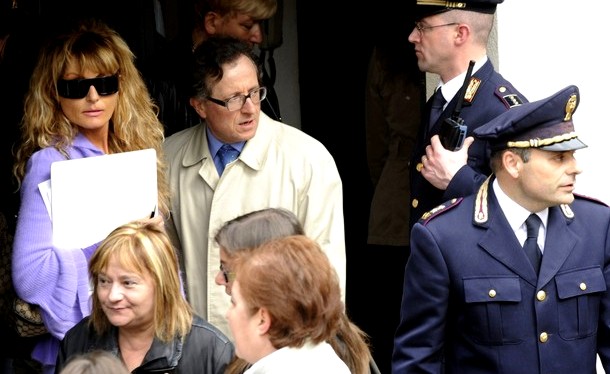
[The Supreme Court in Rome is expected later this year to confirm this outcome]
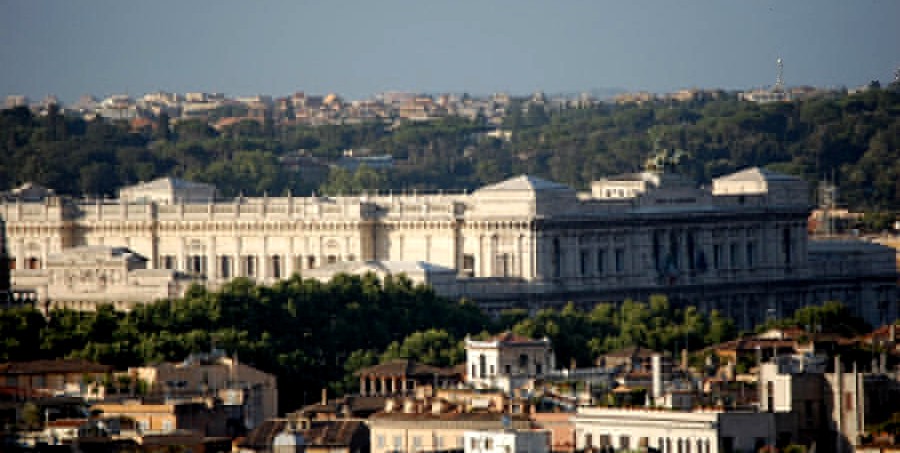
Wednesday, April 16, 2014
The Incriminating Bathroom Evidence: Visual Analysis shows the Footprint IS Sollecito’s
Posted by Machiavelli
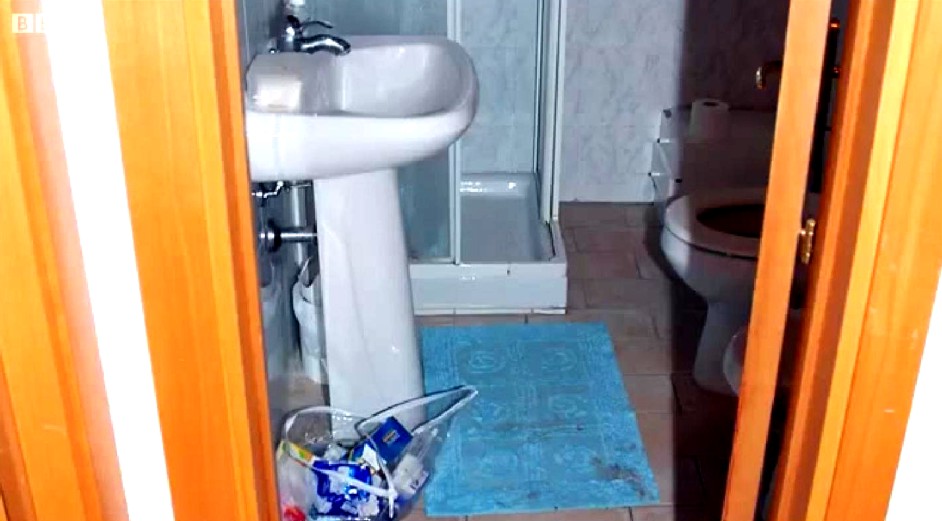
[Please click on each image for a larger and more high-resolution version]
The sheer depth and width of the hard evidence
The defenses really don’t want you to know this: in both width and depth, the full panoply of the evidence against Knox and Sollecito is absolutely overwhelming.
As we remarked in our post below there are far more and far stronger evidence points than UK and US courts normally require for conviction. But only the trial panel of judges observed anything like their full array.
The 2010 Massei Trial Report (which the Nencini Appeal court validated this past January) is a SUMMARY of what was presented to the judges in the courtroom. Those presentations in court were in turn something of a SUMMARY of the hard evidence buried in all the evidence files and the minds of witnesses.
Italian media SUMMARISED for Italians what was to be seen in the courtroom and to be read in the Massei Report. They were barely able to do even summaries for the 1/4 of all the trial hearings that were not open to the media or the public.
UK and US media for the most part didn’t even bother to provide comprehensive summaries (the very fine on-the-spot reportings of Andrea Vogt, Barbie Nadeau and Ann Wise were the main exceptions).
So in effect people in the UK and US attempting to follow the story didnt for the most part receive even a summary of a summary of a summary!
Not one US or UK newspaper or TV network translated the Micheli Report, or the vital Massei Report, or the Supreme Court appeal, or the Supreme Court outcome - only the (mostly professional) translators on PMF dot Org did all that translation.
This post is another example of how far down - beyond even Massei - it’s possible to drill into the evidence, and see it still hold up.
Some past posts on TJMK drilled down to similar depths, on the knives, on the DNA, on the mixed-blood traces, on the phone-events, on the motives and psychologies, and so on. All that evidence too all held up.
Visual analysis of the bathroom-mat footprint
This post mainly consists of high-resolution pictures and measurements. Presented like this, the pictures and measurements largely speak for themselves, and show the real strength of the bathroom-mat footprint evidence.
You will see that as SomeAlibi previously concluded using other methods, this footprint was quite undeniably Sollecito’s. It bears no similarity at all to Rudy Guede’s.
Please click on all images for larger versions in scalable PDF format
1 . [Below] the bathmat and the print, with measurement reference
2 . The bathmat print and the surrounding area
3 . The bathmat print (photo from Polizia Scientifica).
4 . The bathmat print, with vertical and horizontal sizes, from Rinaldi’s report
5. The bathmat print, photo with enhanced contrast.
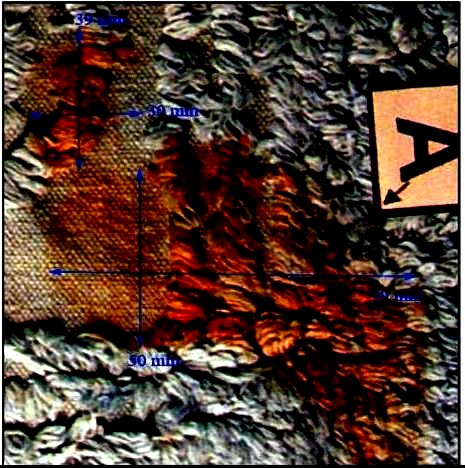
The photo above was modified by highly enhancing contrast.
6 . Enhanced contrast helps to spot some features
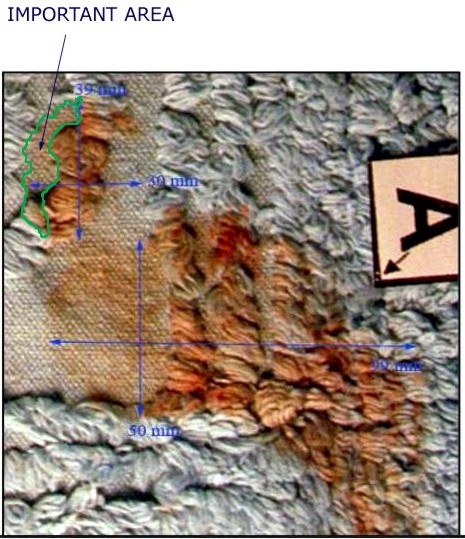
Contrast may help to highlight especially some parts of the print outline.
For example the area on the left labeled as “important area” in the picture (which was “forgotten” in the notorious photo elaborations disseminated by the ‘Friends of Amanda’ group), shows the actual left outline of the “˜big toe’ of the bathmat print.
The toe includes the area indicated in this picture (here the picture is shown again in its original colours).
7. The bathmat, with enhanced contrast
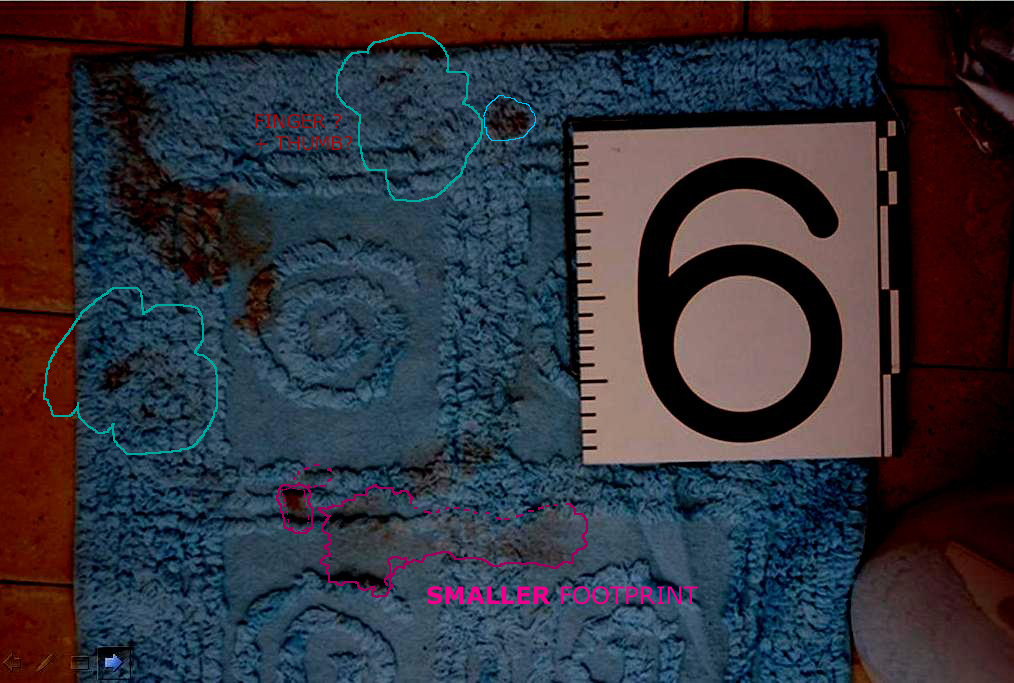
The contrasted image is showing the presence of other stains
There are other stains on the carpet (about another 10, factually situated in one half of the mat area), and also there shows a second diluted footprint (apparently from a foot of smaller size).
8. The selection of a set of red colour shades, outlined by an automatic outline generator
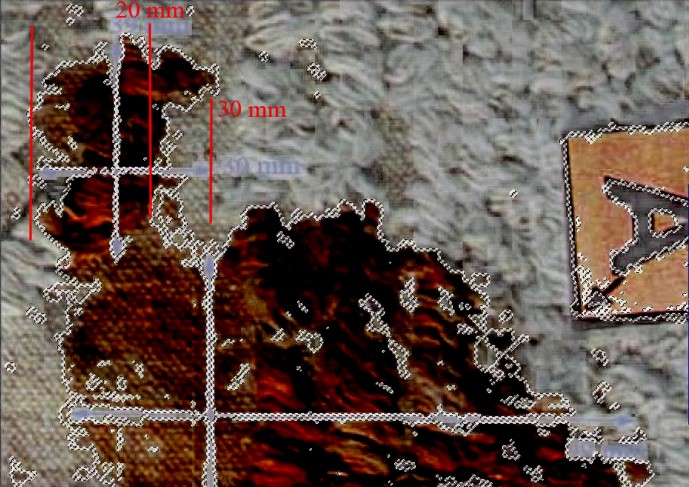
Shows the shape and the possible “˜outline’ of the stain
Reference measurements indicate the width of the “˜big toe’ in millimetres.
9 . A hand drawing of the outline (detail).
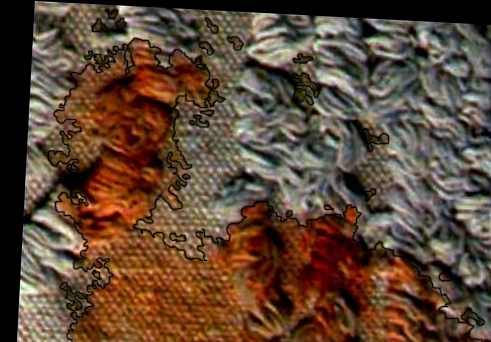
The photography above was modified
The modifications are: +28% contrast, -8% luminosity, + 20% colour saturation, from the original.
An outline has been drawn manually on the photoshop image, trying to be as faithful as possible to the actual stain.
You can notice that, apart from some minor “˜disputable’ very faint areas (such as the area between the toe and the metatarsus) there are only minimal differences between an automatically generated outline and a manually drawn one.
The shapes of the “˜big toe’ are extremely similar in both contours (images 8 and 9), in fact all meaningful features are basically identical.
We consider this manually drawn outline as good for comparison.
10 . The complete hand-drawn outline
11 . Minor detail: small dots separated from the main stain
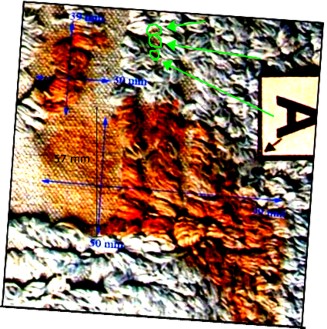
Observe the small red ‘dots’ in the picture above
Although we can’t draw any conclusion about their possible significance, we note the existence of these very small “˜spots’ of a faint red colour shade, separated from the big stain.
They are detected by the computer generated outline above, and that we also see as distinguishable with the naked eye thus we considered them in drawing manually the outline.
We don’t draw any conclusion about them; but because of their sensitive position (they may suggest a “˜small toe’ mark) we take note of them.
The green arrows in the picture point out their position (green circles).
12 . An image in electronically modified colours
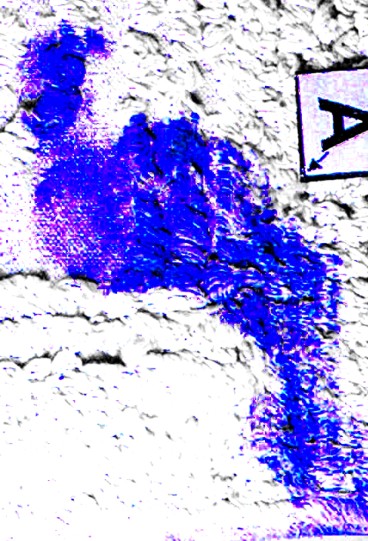
Distribution and intensity of the colouration
As a part of the preliminary study of the stain, we also produced this image above where the computer assigned an artificial colour to an array of shades of ‘red’, thus allowing to further isolate the stain from the background for further assessments about its shape.
This picture shows the distribution and intensity of the colouration. (note: the existence of some above mentioned tiny marks is recorded by this technique too)
13 . The bathmat has a spiral-shaped relief decoration
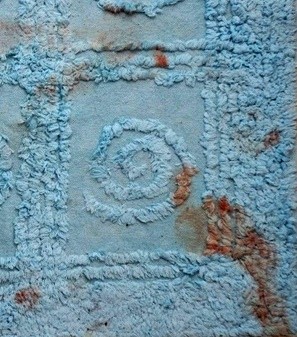
The footprint’s toe obviously balancing on top of the relief decoration.
We think the outline of the “˜toe’ mark of the bloody footprint is affected by the shape of the decoration, in particular the missing part of the toe on the right side, which is remarkably coincident with the margin of the decoration.
So that on that side there is a striking correspondence between the outline of the “˜negative area’ ““ the fabric surface around the spiral, which is lower ““ and the big toe’s outline
This indicates that the outline of that mark on that side was affected by the decoration margin, thus the print there has a “˜missing part’. So the “˜crooked’ bloody area in fact follows the margin of a larger toe.
Because of such coincidence, we can logically assume that the actual shape of the big toe mark appears to be part of a big toe, with larger surface which left its print only partly because part of its surface did not have contact with the fabric, in correspondence of the “˜negative area’.
14. The “negative area”
15. Mat decoration in relief and the toe mark
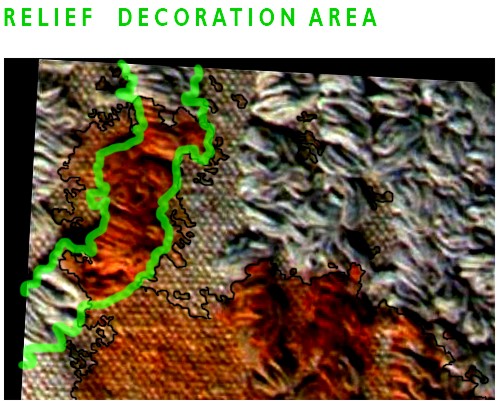
Observe above one single, unitary stain
The remarkable coincidence between the outlines of the decoration in relief and of the toe mark is shown in the picture above.
The rough contour of the print obtained through a smooth curve highlights the shape of the big toe.
Part of the relief decoration outline coincides with the toe mark outline, which shows, highlights and explains how all parts of the red toe mark, that you can see left of the relief decoration, they all belong to one single, unitary stain.
Thus we can deduce that the “missing” area on the right of the toe is determined by the decoration, and coincides with the negative area.
16. Picture (by Kermit) showing a rough shape of the stain
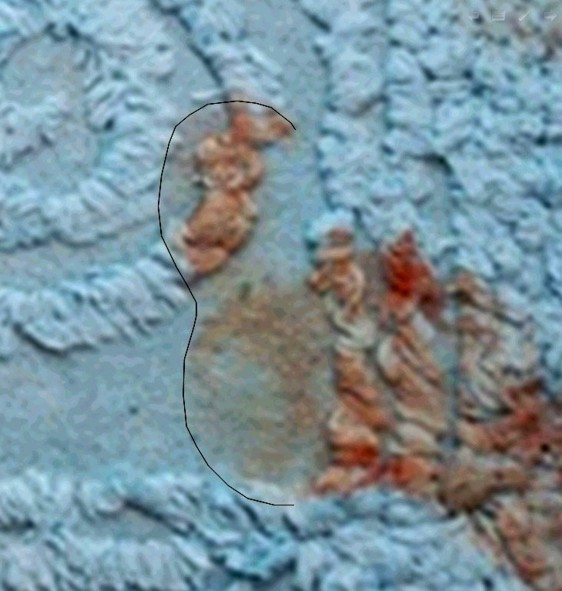
Observe shape, curvature and size
This drawing by Kermit above highlights the rough shape, curvature of left margin and overall size of the big toe.
17. Rudy Guede’s sample print
A copy of this picture together with one of Sollecito’s print at the same scale will be used for comparisons.
18 . Raffaele Sollecito’s sample print
A copy of this picture together with one of Guede’s print at the same scale will be used for comparisons.
19. Part of Rudy Guede’s sample print with Rinaldi’s reference measurements
20. Part of Sollecito’s sample print, with Rinaldi’s reference measurements:
21. Bringing all photographs down to the same scale
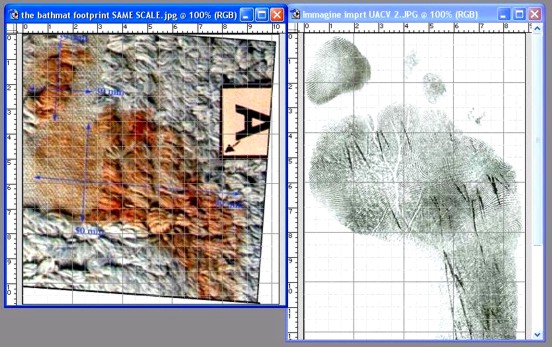
An accurate exercise of scaling was done
This was based on Rinaldi’s referenced pictures. Each one of the Rinaldi’s sample pictures has multiple measurements on several points of reference which allow a high precision determination of their scale and sizes, and thus comparison at the same scale.
In order to further increase scaling precision, the scale was calculated previously and separately for each comparative measurement in the three photos; this was done multiple times for each measurement and the average was picked in order to reduce error as for statistical measurement method.
The resulting final error in the scale is extremely small, far below a threshold of significance that could affect comparison (which was set arbitrarily at 1%, but it’s probably significantly higher, while the actual error is much lower).
In other words, the scale error that may affect your screen pictures will be definitely smaller than any possible perceivable (either significant or tolerated) difference that would be noticed or that may affect the attribution of the stain, when this is compared to the sample.
22. The hand drawn outline is shown again here
23 . The outline (matched scale) overlapped on Sollecito’s sample footprint
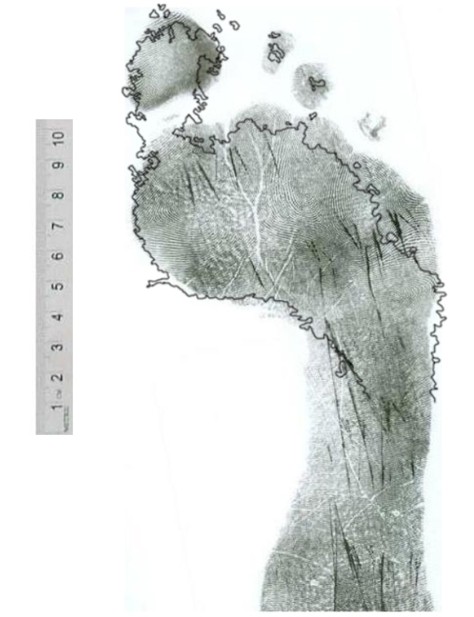
The array of compatibilities with Sollecito
The bathmat stain does not seem to have major incompatibilities with Sollecito’s print; it shows rather an array of compatibilities that can be perceived visually.
One interesting feature is the shape, size and position of a ‘big toe’, that appears as a remarkable coincidence; the toe also has a kind of cleft (see 28 below) on the curvature of its left margin. Another outstanding coincidence is the curvature of the plantar arch on the left.
24 . The same outline overlapped on Guede’s footprint
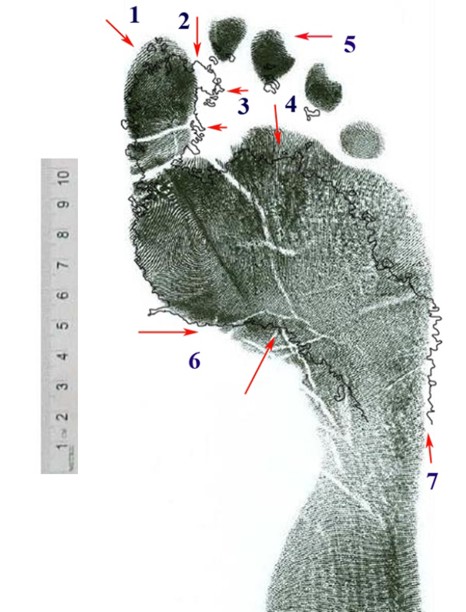
Compare with Guede’s - matched scale.
If you look at the overlapping of the stain outline (see pic 22.) with the sample of Guede’s print (see pics 17. 19.), you may notice 7 major differences, showing a failure of compatibility. Those differences are indicated by numbers (1-7) in the picture .
Each one indicates an area of major difference between the outline of the bathmat stain and the outline of Guede’s sample print. Those measurement differences are remarkably larger than those that can be detected on the overlapping with Sollecito’s sample print.
On the other hand, the compatibility between Sollecito’s print and some very peculiar aspects of the bathmat print (such as a 30mm wide and short toe) were absolutely remarkable.
The differences between the bathmat stain and Guede’s print are :
1) Toe mark of stain is significantly SHORTER than the big toe in Guede’s sample print (a difference of about 7 millimetres). Some people may want to attempt an objection, by suggesting that such a difference may be just a consequence of the position chosen for the overlapping, that maybe the bathmat print was just positioned too low in the picture, the problem may be solved by shifting it up about 7 millimeters so as to make the tip of the bathmat toe ‘coincide’ with the tip of Guede’s print toe.
However, such objection wouldn’t work; it’s a wrong argument. In fact the only possibly correct position for overlapping the bathmat stain outline is determined by the left curvature of the ball of feet and plantar arch (the area of the picture near number 6), which is by the way the most clearly outlined part of the bathmat stain. If you shift the bathmat stain upwards, the outline will miss the match with the curvature of the left margin of the ball of the feet. You will notice that the plantar arch in this area is already very incompatible with Guede’s plantar arch. It tends to become even more incompatible the more you shift the bathmat stain outline towards the toe.
The problem has no solution, since the more you shift the stain outline upwards (in the direction of the toe) in an attempt to make it look more ‘compatible’ with the length of Guede’s toe (or with an upper margin) the more it will become incompatible with the plantar arch. In order to limit the incompatibility of the plantar arch, and in order to keep an overlapping of at least the left margin of the ball of the feet, you need to place it as shown in the picture, this is the position of ‘maximum’ compatibility between the bathmat stain and Guede’s print. Conclusion: the bathmat toe is too short.
2) Toe mark of stain is TOO WIDE (30 mm). It is much wider (30 mm) than Guede’s toe. The number 2. indicates the protruding mark at the upper right, the mark which Giulia Bongiorno desperately insisted on calling a “second toe” mark. In fact, not only would the mark miss completely any hypothetical Guede’s ‘second toe’ in any possible position of the print; also you may notice (highlighted by pics 8. and 9.) how it is not a “mark” itself, but actually it just part of the same area which is entirely continuous in shape and coloration with the rest of the toe mark, and - the most remarkable feature - its right outline is coincident with the outline of the spiral-shaped relief decoration, so that you can reasonably conclude that it is determined by that (the missing area at the lower right of the ‘big toe’ is determined by the existence of the “negative area” of the bathmat decoration).
Conclusion: the bathmat stain has a wider toe mark, however one likes to call it (“big toe”, or “big toe + second toe”) that fails to match any possible part of Guede’s print. The bathmat print is clearly different and incompatible with Guede’s print. It simply cannot be overlapped to any part of Guede’s sample print. Such area is a very significant difference that points outright to incompatibility between the stain and Guede’s print.
3) The toe mark is larger also in the area located at the lower portion of the toe. The toe of the bathmat print in fact has a ‘right margin’ which actually has some additional small marks, small drops protruding towards the right, like droplets maybe produced by the wet cotton fibres of the part in relief which protrude towards the right. This tends to suggest the toe area of the stain may in fact be considered wider: the object that produced it was definitely wider than 22mm, in this area of the toe as well. So also a look at this area confirms that the bathmat stain is wider than 22-23 mm (more towards 30 mm) not just when measured at the upper corner (number 2.) but also at its “lower” parts; here, the small marks caused by the liquid suggest that a larger surface has squeezed liquid from some fabric threads leaving some trace also on the lower area.
4) Bigger incompatibility of Guede on the metatarsus front outline. This area is the front outline of metatarsus: the stain is almost 1cm shorter than Guede’s metatarsus. This happens when you chose the overlapping so as to make the left outline and plantar arch (6.) of metatarsus coincide, as in the picture. Sollecito’s sample print also shows some difference from the stain in this area (pic. 23.) but the difference between the stain and Sollecito’s print is significantly smaller than what you can see in Guede’s print.
5) There are NO SMALL TOES in the bathmat stain. Small toes are completely absent from the bathmat stain (while the tiny blood marks around the stain don’t coincide with their expected position if it was Guede’s print). Such lack of small toes is a peculiarity of the bathmat print. This is a remarkable difference from Guede’s print, and at the same time, a considerable analogy with Sollecito’s print. In fact one outstanding feature of Guede’s print is the evidence that Guede places a big load of weight on his small toes while instead Sollecito has a posture with a weight distribution with the contrary tendency, and obviously he almost does not touch the ground with his small toes.
Thus, Guede’s small toes are all very well pressed on the ground and thus, we can reasonably infer they are somehow naturally likely to get wet if he steps on any wet surface, and anyway they should get wet for sure if the foot is immersed in water or washed (the foot that left the bathmat print must have been immersed in bloody water). The murderer supposedly washed his foot then stepped on the bathmat. In order to attribute the print to Guede we should assume that Guede “forgot” to touch the carpet with his small toes (while instead he puts a lot of weight on them) or that he managed to not rinse them.
6) The outline of the stain has a PLANTAR ARCH that COINCIDES, by curvature and angle, with the plantar arch in Sollecito’s print, while instead it is very different from the plantar arch of Guede’s print.
7) The stain is larger than Guede’s print metatarsus as visible in the right area of the stain. The difference is rather significant, almost half a centimetre, that is bigger than the difference with Sollecito’s print which instead coincides for a trait. This difference cannot be “solved” in any way since, even if one wanted to claim that the scale is wrong and that the stain should be sized down, this would make the toe, already too short (as in 1.) become even shorter.
If instead the toe length is adjusted the metatarsus becomes even less compatible with Guede. We recall that Massei found that Guede’s feet had a print overall more slender than Sollecito’s.
25 . Other features:
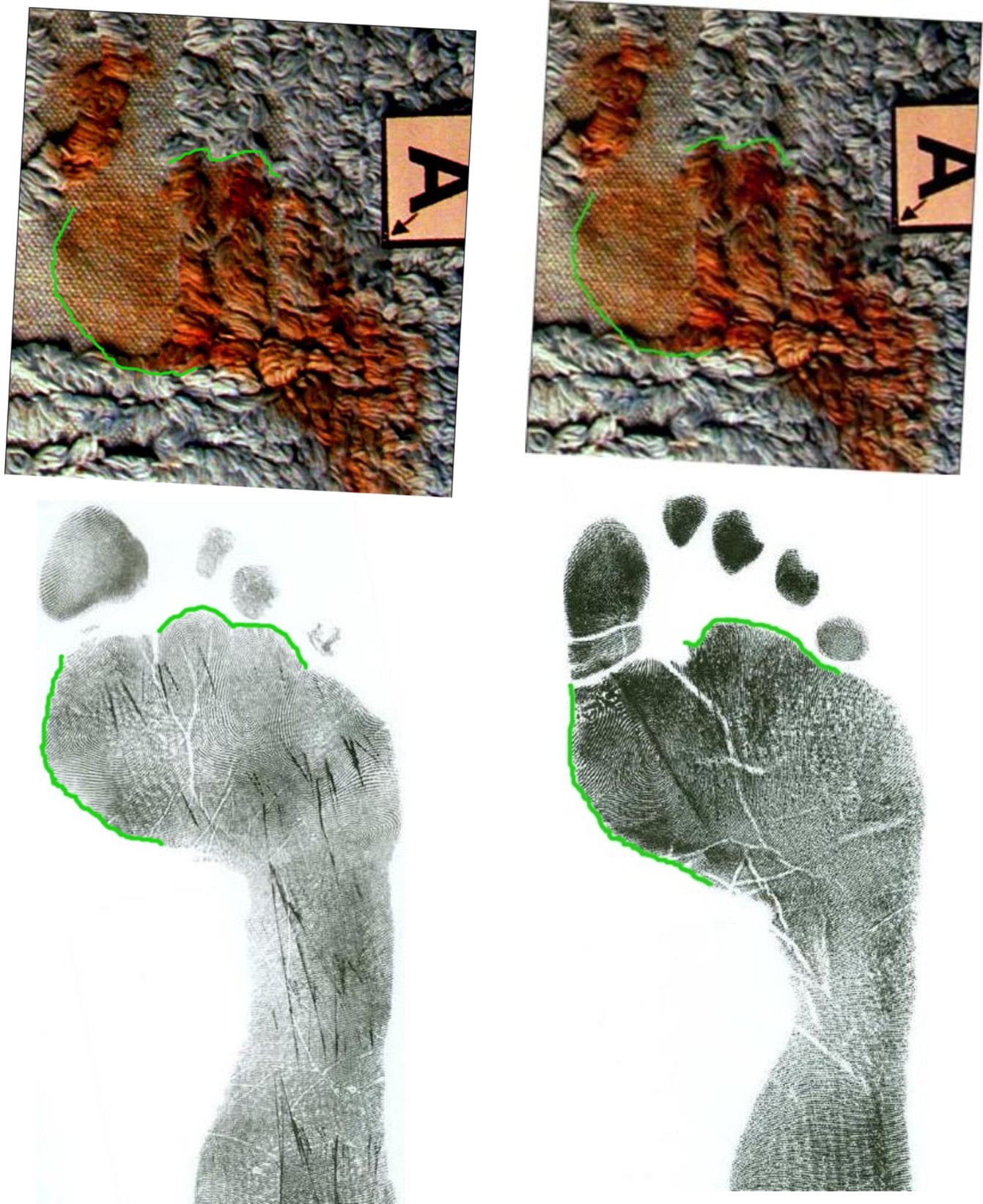
Curvatures of plantar arch are very different
The plantar arch curvature, highlighted in two different drawings (the second highlights also the upper outline “hunches”); the plantar arches in the two sample prints of Sollecito and Guede are shown below. The curvatures of plantar arch are very different.
26. The outline curvature generates different angles
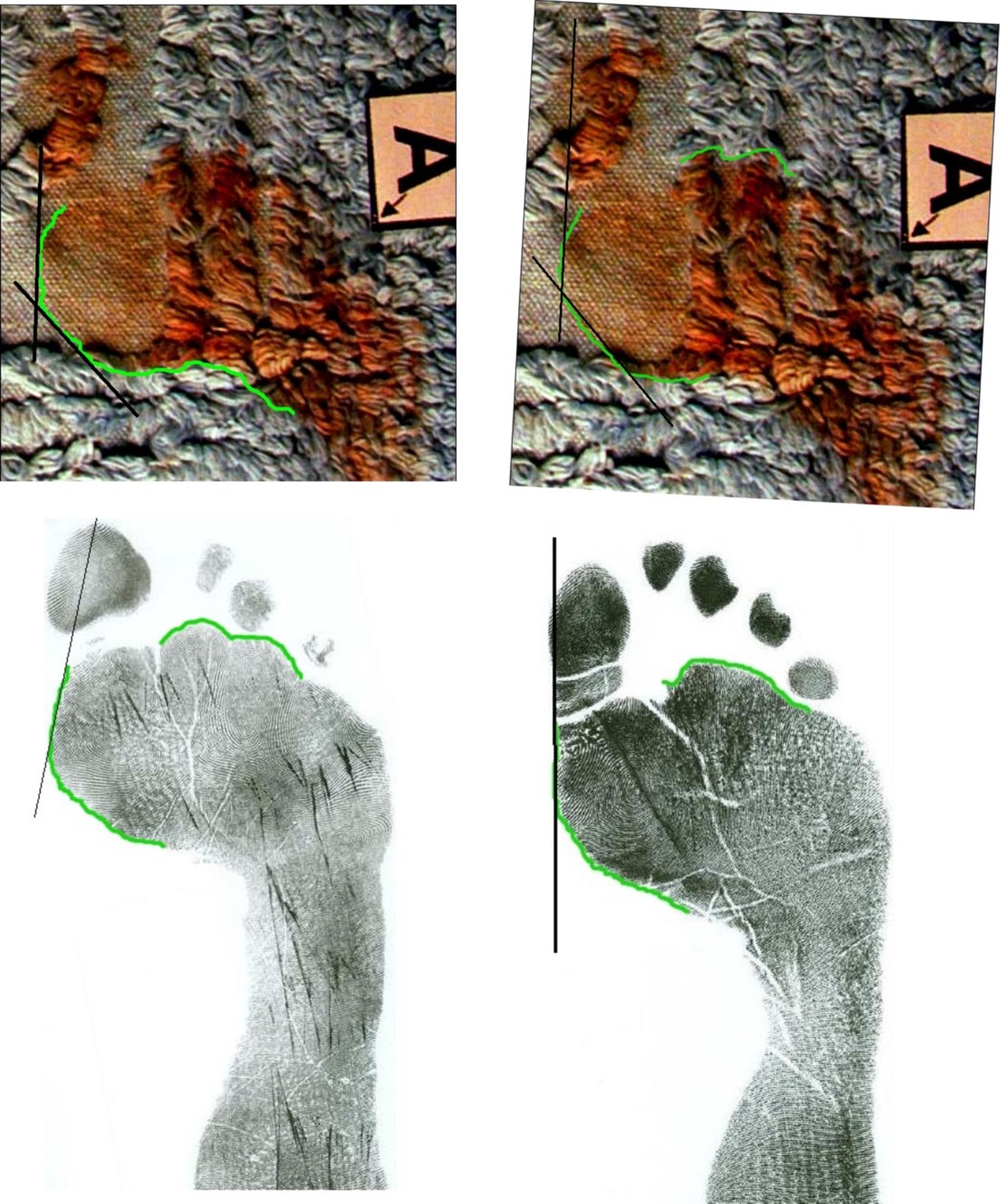
Sollecito’s and Guede’s plantar arch curvatures have very different angles. Also the left outline of metatarsus maintains a different curvature. Sollecito’s outline has an angle (see outline tangent) intersecting the toe (the metatarsus has a “bunion”); in Guede’s print there is basically no intersection, the outline and the toe form almost a straight line.
27 . Plantar arch curvature angle differs between Sollecito and Guede
If you consider the vertical axis of the sample footprint, and its orthogonal line, you may notice how the plantar arch curvatures of the two prints accomplish different angles: the two angles are VERY different, not just three or four degrees.
The (too) narrow angle of Sollecito’s plantar arch probably has a relation with the protruding outline and angle seen in pic 26., and seems related to a hallux valgus (which Guede does not have).
28 . The “cleft” on the left side of the stain
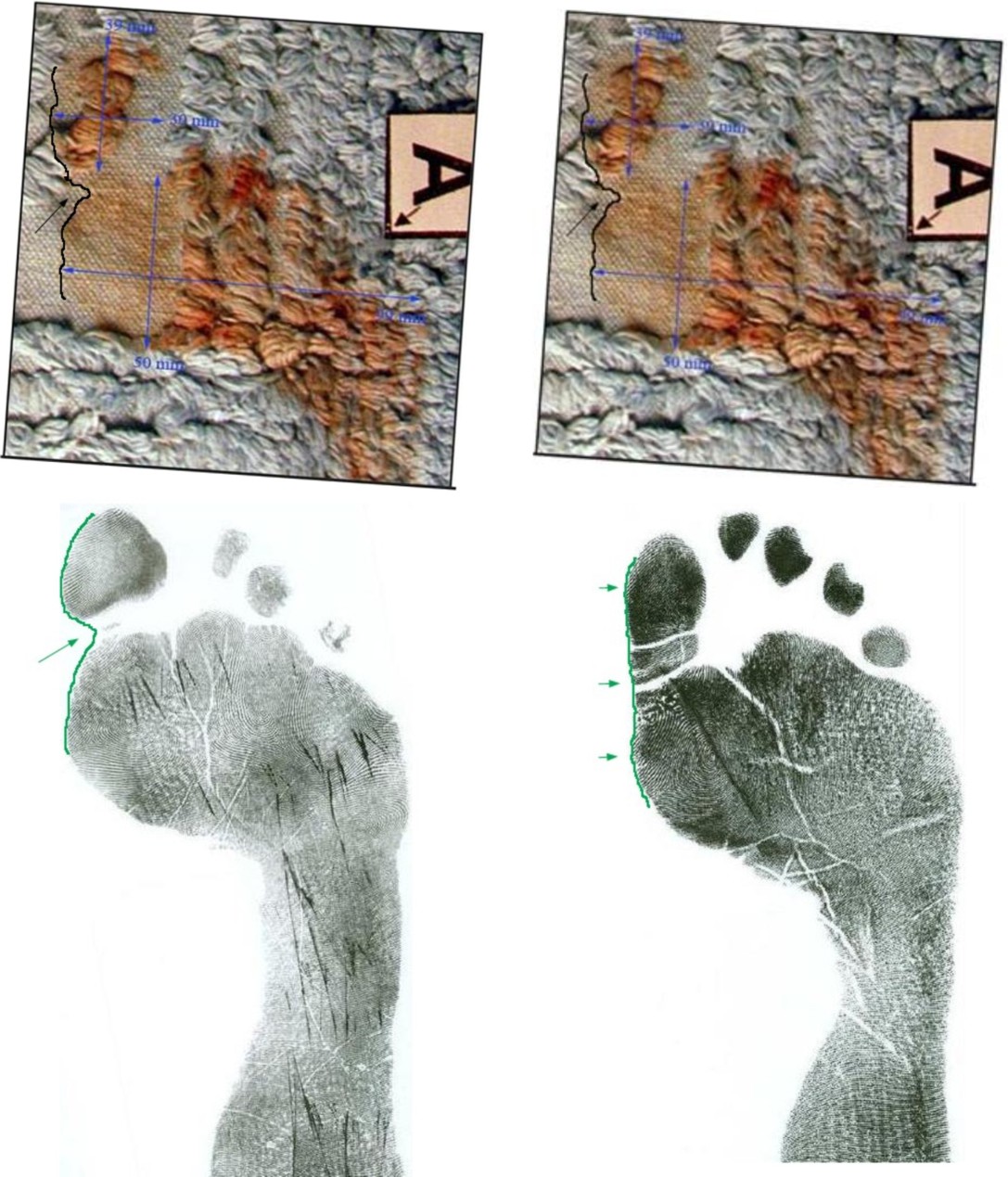
The “cleft” on the left side
This has a correspondence with one sample print, not so with the other.
29 . Table of metric comparison (by SomeAlibi)
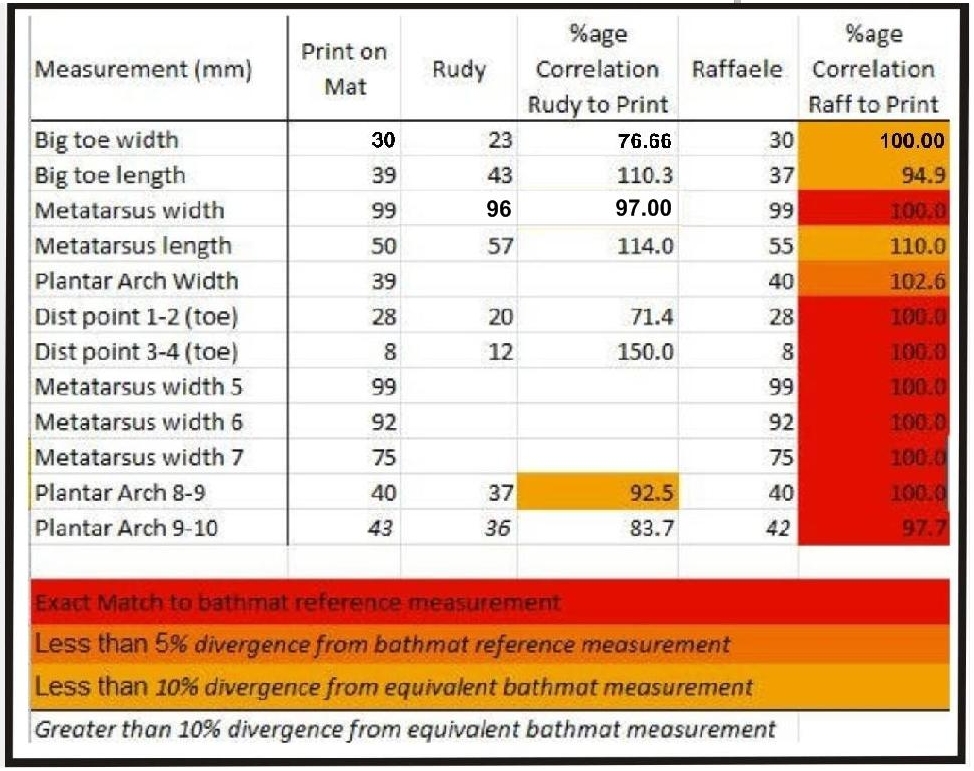
SomeAlibi’s post of a year ago
Comparison of measurements and analysis of correspondence degree of bathmat print, with both Guede’s and Sollecito’s sample prints.
Wednesday, February 19, 2014
Our Reviews Of The Painstaking BBC-3 Report First Aired In The UK On 17 February 2014
Posted by Our Main Posters
Review by SomeAlibi
Watching “Is Amanda Knox Guilty” was a funny thing. I suspect for people following the case closely, on either side, it was a sobering experience. Not because it changed perspectives, but simply to see how quickly one hour passed and the necessary trade offs that had to be made to fit within that schedule. The opportunity cost was a level of detail to which in-depth followers have become accustomed.
Just one example: Sollecito and Knox’s partial alibi that they were checking their emails on the night of November 1st was explained as being challenged by two broken computers. Perhaps, (although unlikely to be the material issue) but where was the much more salient fact that their ISP records showed that was conclusively untrue? Where was the challenge: if you say you’re checking emails to establish part of your alibi against a murder and it is shown to be absolutely untrue, what does that suggest…?
There were many other “clinchers” that had to be let go in the name of brevity. But it wasn’t that sort of documentary - it was neither a case for the prosecution or a case for the defence: it put the main suggestions at the level of detail that was possible and it allowed both sides to speak to the points at that level of detail.
I find it interesting that there has been such a howl of bias from those supporting Knox and Sollecito. Objectively there’s no good ground for it: the documentary allowed both sides forward in equal measure and no pro-justice watcher would celebrate it as a pro-conviction piece.
The arguments were balanced, the video, audio and picture quality eye-opening. For those on the other side, their markedly different reaction appears to be that the documentary has broken the taboo that The Evidence Shall Not be Told. The idea that there is an easy-to-consume piece that puts forth the case and defence equally is seen as a disaster.
The campaign for Knox continues to be obsessed, beyond all things, with trying but now failing to make sure the public doesn’t know the basis of the case. For a long time they hoped to drown out the multitude of terribly inconvenient truths within it by screaming “no evidence”. ‘Is Amanda Knox Guilty’ put the lie to that conclusively, but fairly, and now many hundreds of thousands, perhaps soon to be millions will ask themselves why those supporting Knox and Sollecito have had to adopt this tactic at all.
If they really are innocent, why has the case against them been so comprehensively white-washed in the US?
The conclusion, is rather simple and I saw it encapsulated on a large television screen last night with the repeated clips of Amanda Knox and Raffaele Sollecito outside the cottage kissing and “comforting” each other: there for a fraction of a second, shown several times, is Amanda Knox, unable to stop herself glancing at the camera filming her and stealing her gaze away again very quickly pretending she hasn’t.
It’s a look that says everything: furtive, pretending it didn’t happen, immediately covering up in a way that poses a stark proposition: why on earth would you do that if you had nothing to hide? And like so much of the multiple collapsing alibis and non-working answers and the desperately dishonest fingers-in-the-ear “no-evidence” pretence of those supporting her, is a proposition that can withstand no scrutiny.
Review by SeekingUnderstanding
What a relief to watch a very clear and unbiased narrative. The quality of the visual information was top rate - seeing so much original footage, and presented as it was in a logical time sequence.
Even though I was already familiar with the evidence, including the photographic material, I found it very helpful to see it all presented in this way. I appreciated, too, hearing and seeing the excerpts in original Italian (along with English translations). It added even more authenticity.
I hope that, at long last, this will have helped some - or hopefully many- people to see that the two ‘camps’ in this case do not divide into AK supporters and AK ‘haters’. There are the FoA and their followers ...and there are the others who seek the objective truth and justice.
If hate has been generated in some quarters, then the Knox (and Sollecito) camps need to look to themselves and their own behaviour. This programme was important in the tone it set.
I actually found it to be quite lenient towards the defence on a number of counts.
There were several instances where the defence point of view could have been strongly countered by known and established facts, but, bending over in fairness, these were left unanswered.
Here are just four instances :
1) In the discussion around the blood and DNA left in the bathroom - Dr. Gino’s assertion that ‘the blood/DNA ‘could have come from anywhere’ might have been countered with AK’s own declaration that the bathroom was previously clean. Dr. Gino also suggested a very improbable scenario of ‘it could be saliva’ (on the bidet?). Cassation emphatically said that it must be shown HOW any suggested contamination could have occurred.
2) There was a missed opportunity in discussing the knife presumed to be the murder weapon to mention Sollecito’s lame, unreal excuse of ‘Meredith pricked her hand’ etc.
3) Anne Bremner stated ‘Amanda could not have turned overnight…into a murderer’. Attention could have been drawn to many things, both physical events (her predilection for cruel pranks, including a staged burglary in the US, and wild parties, etc), and also many psychological indicators that would have clearly shown how her behaviour has, in fact, demonstrated consistency.
4) In the discussion re the bra clasp, the delay partially being caused by the defence themselves was not mentioned. Also, detailed discussion re the one bare footprint on the bathmat was omitted.
Since there is, in fact, so much evidence, it must have been difficult to chose and balance what did go into the hour long programme. All in all, I feel Andrea Vogt and her team worked hard, and did very well to let the facts speak for themselves.
I hope it will lay a few fictions and myths to rest.
Review by Earthling
What is the “Amanda Knox trial” (really the Meredith Kercher murder trial) really about? Is it about an innocent 20-year-old pretty white girl being railroaded by the medieval Italian justice system?
Or is this actually a murder trial, about the fact that a beautiful, intelligent, ambitious young woman, innocently trying to improve her life by study abroad, was brutally murdered?
I believe it’s the latter, and the BBC3 production gives us one of the first truly balanced reports on this trial.
The filmmaker starts from the beginning, and takes us through the murder, investigation, and various trials and appeals up to the present day. Instead of the breathless “Perils of Penelope” tone (toward Amanda Knox) that most such previous “documentaries” have taken, this one takes a sober look at the actual evidence.
Did you realize that there are luminol-revealed bare footprints in Knox’s size in the apartment? Luminol reveals blood and a few other substances; but those substances can be ruled out because the test was done six weeks after the murder, by which time those substances would have dissipated.
Blood doesn’t dissipate. This documentary shows you those bloody footprints in all their creepy glory, something never shown on American TV before.
“Is Amanda Knox Guilty” also speaks of the actual DNA evidence in the cottage linking Knox to the murder, including five mixed-DNA spots (Knox and Kercher) that tested positive for blood. Both prosecution- and defense-oriented experts are allowed to comment on this evidence, and the viewer is allowed to make up his or her own mind.
My one criticism is that a lot of the evidence against Knox (witness statements, cell phone data, fake break-in) is skimmed over or not even mentioned. Also, because the documentary quotes Rudy Guede’s position at length without any contradictory narrative, it is confusing as to whether the filmmaker might have believed him.
In the end, the filmmaker says, he was convicted of participating in the group murder. However, a stronger statement against his “I’m entirely innocent” defense would have been good.
Other than these quibbles, this is the best documentary on the Meredith Kercher murder case that I have ever seen.
Review by ZiaK
I watched the BBC programme on the Meredith Kercher case hoping for a more balanced view of the case than has been presented in the English-speaking media to date.
The documentary does present some of the evidence against Knox and Sollecito - including the bloody footprints, the mixed blood/DNA traces in the bathroom and corridor, the bra clasp, the knife DNA evidence, the strange timings of phone calls to police, the unlikelihood of the “break-in” being anything other than staged - but omits to point out that none of the other flatmates’ DNA was found in the blood traces, so saying that “it’s because Meredith and Amanda shared a flat” is misleading.
Nor does it point out that, although the murder knife was found in Sollecito’s flat, none of HIS DNA was found on it: it had only Amanda’s and Meredith’s DNA.
The programme didn’t cover the cell-phone evidence, showing that neither Knox nor Sollecito were where they said they were, at the times that they claimed. The programme also repeated the “Friends of Amanda” PR soundbites, such as “there was no evidence of Amanda in the murder room” - whereas the fact that her footsteps tracked blood OUT of the room are actually evidence of her having been present IN the room before it was locked (i.e. at the time of the murder).
Furthermore, in my opinion, the narrator’s voice seemed to evince sympathy towards Amanda, rather than describing events with a passive or objective tone of voice.
As one of the translators who has participated in translating case documents (such as the judges’ reports describing why they came to their decisions), I am only too aware of the extent of evidence against Knox and Sollecito, and I would like to see knowledge of this evidence become more widespread throughout the English-speaking world.
The BBC programme is a step towards this, but in my mind, only a very small step. I hope the pace will pick up soon, and more objective and extensive knowledge of the true facts of this case will be made available to everyone so they can form a rational opinion of the case based on true understanding.
Review by Cynthia
I’ve just watched this, and it’s very good - with a huge amount of footage hitherto unseen (directed by Andrea Vogt).
For what it’s worth, I note the following points:
1) There’s no mention of Meredith’s friends who heard Amanda say ‘she fucking bled to death’ before the fact was known to anyone else. Perhaps they didn’t testify, being too distressed? If so, it’s a great pity, because it seems a veritable clincher that hasn’t been used at all.
2) The bra DNA arguments are quite extraordinary. If we can determine that we all have Neanderthal DNA (tho’ I know a lot of American fundamentalists don’t believe that mankind goes back more than 6,000 years!) I can’t for the life of me see why DNA would be unusable after a poxy delay of 12 days ...
3) The argument that the Luminol traces may indicate not barefoot treading in blood but in bleach seems absolutely unbelievable to anyone who does housework (like me!) Bleach is horrible stuff, and you really, really don’t want to be getting it on your bare skin. Even Amanda, with her vestigial domestic skills, would have noticed if she’d trodden in it.
4) Bremner says Amanda was an honor student. She wasn’t; she had funded herself (not that that’s discreditable). (Also, are honor students unable to write cursive script? The shots of her handwriting show that she can’t do joined-up writing. [Or thinking.] I don’t know whether the phrase exists in American English, but not doing joined-up writing is a term of great intellectual contempt in English.)
5) We saw Amanda’s ‘mask’ speech. This is really interesting - who would even think that masks were being put on them if they weren’t using them themselves?
6) The programme mentions the little-reported fact that another, smaller knife found at Sollecito’s also had Meredith’s DNA on it.
7) The film omits to mention Hellman’s lack of any experience in criminal trials.
8) Every shot of Amanda in the film has her talking about ‘me’ and ‘I’. She never, ever mentions Meredith - it’s all about HER suffering. She never even says ‘the murderer is out there - I wish you’d stop persecuting me and get them’.
Presumably this is because Guede is supposed to be the sole murderer - and nobody seems in the slightest bit worried that there’s no murder weapon with HIS DNA on it! (Yes, there are his turds - but that wasn’t what killed Meredith.)
9) FOA has used the fact that the recent jury took 12 hours to deliberate over the verdict as an indication that they couldn’t agree. But why not just that they were being extremely careful and re-examining everything?
10) Finally, just an observation: Maresca speaks the most beautiful Italian - you can hear every word calmly flowing past.
Review by Miriam
Much appreciated. Outside of the Porta a Porta transmissions on the case, the best I’ve seen.
I understand they had to give both sides, but I felt that the defense came out on the losing side. I thought it funny that it was implied that since they only tested for blood it could of been saliva.
I don’t believe even her supporters would argue that Knox was so quirky as to brush her teeth in the bidet! Or maybe she spit in the bidet, in which case Meredith would have had every reason to complain about her bathroom habits!
Now if only this or something like this would air in the U.S.
Review by Sara
This is actually one of the most objective and well-researched reports I have seen on the case and I am very happy that BBC has managed to be so unbiased.
It presents both sides of the story equally well and does an excellent job of countering the extremely silly “no evidence” argument that the FOAkers like to repeat at equal intervals.
Regardless of what one believes, I think the documentary will at least succeed in convincing most people that there is indeed sufficient evidence against the two of them, and Italy’s judicial system is not crazy to convict people without any evidence.
My favourite part was when the defense DNA expert (can’t recall her name) tried to explain away the mixed blood evidence by saying that one of them could have had a nose bleed, and the other could have cut her hand in the same place leading to mixed blood.
Come on already, what are we? Kindergartens making excuses for not handing in homework? What is the possibility that both of them would bleed in exactly the same places not once or twice but multiple times? I think anyone with a bit of sense can see that they are clutching at straws.
However, I was a bit disappointed that few things were missed out. For instance, the fact that Guede’s footprints led straight out of the house, the fact that Amanda’s lamp was found without any obvious reason in Meredith’s room, Amanda’s extremely odd midnight call to her mom that she conveniently “forgot”, her million showers despite her concern towards “water conservation” etc.
Sollecito’s multiple changing stories were not really elaborated upon (the story in which he went to a party, the one in which he checked emails, the one in which he pricked Meredith etc etc).
Also, inconsistencies between their accounts of various events could have been pointed out (Was Filomena’s door open or close? Did AK call Filomena from the cottage or from Sollecito’s house? etc).
Witness accounts were not given any screen space either. I think touching upon these would have made the documentary even more impressive.
That said, I understand that the team has done the best they would within the limited time they had, and everything just cannot be accommodated within one hour.
So, all in all, kudos to the team and BBC for a job well done.
Review by Odysseus
I though it was a very competent overview of the case. After so much pro-defendant spin in the MSM (no doubt engineered by the American defendant’s PR outfit), it was refreshing to have a sane, measured and rational presentation. The victim deserves no less.
Congratulations to BBC3 and to the programme makers. It’s good to know that the BBC of blessed memory hasn’t been entirely dumbed-down nor intimidated by “partial outside interests”, the latter being director Andrea Vogt’s own description of the forces intent on muddying the waters in this case.
Tuesday, February 18, 2014
Congratulations To The BBC For A Report Emphasizing The Sheer Extensiveness Of The Evidence
Posted by Our Main Posters
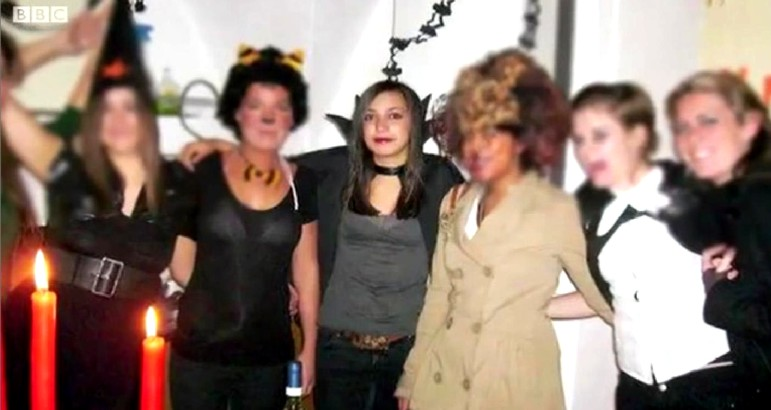
[From the BBC report: Meredith the night before the cruel, deadly attack with her Halloween friends]
This is the painstaking and obviously expensive report by Andrea Vogt and Paul Russell with interviews in London, Seattle and Perugia.
It was aired by the BBC on 17 February. Considerable time is allocated to defense lawyers and experts and the Knox family and Ann Bremner of the FOA taking their best shots at explaining how Knox could maybe have not been involved.
Still, the sheer mass of the evidence remains as the 80,000 pound elephant in the room, lacking any hint of a realistic alternative explanation. Three people committed the horrific attack, including Rudy Guede and two others.
Only Knox and Sollecito remain pointed to by dozens of evidence points as those two others. Not one single evidence point indicates anyone else was involved. The Masssei trial court got it right as the Nencini appeal court just confirmed.
We will enquire if we can embed the hour-long video. But as it may be picked up by US and other foreign media outlets, we will start by simply summarizing it soon. Assessents by those who have already seen it are welcomed.
Monday, February 03, 2014
Authors Of “Math On Trial” Bring The Explanations Of The Hard DNA Evidence Up To Date
Posted by Peter Quennell
The important new book in question Math On Trial is by mathematicians Leila Schneps and Coralie Colmez who is Leila’s daughter.
This article by Leila Schneps appeared in yesterday’s edition of The Independent and explains why the Nencini court has not ruled out any of the DNA evidence.
It’s not right to say there is “˜no evidence’ in the case against Amanda Knox. There’s plenty
The DNA alone is enough to raise questions
The verdict handed down yesterday at the new appeal trial for Amanda Knox and her former Italian boyfriend, Raffaele Sollecito, accused of the murder of British citizen Meredith Kercher in Italy in November 2007, may come as a surprise to those whose view of the case has been affected by an international media blitz based on the oft-repeated claim “There is no evidence”. Many believe that Rudy Guede, convicted in October 2008 for participating in the murder, acted alone.
There is, however, copious evidence to consider: the DNA alone is enough to raise questions. Leaving aside much of it, let’s focus for a moment on three key pieces of DNA evidence and present them from both sides, just as the jury may have heard them spoken of in court.First ““ the bra clasp.
The part of the victim’s bra containing the hooks had been ripped or slashed from the rest of her bra. Not immediately collected on that first day after the murder, it remained in the room in a sealed house for six weeks before being sent to the lab in December. There, it was tested and found to contain a large sample of Meredith’s DNA, together with a smaller but clearly visible contribution from Sollecito. The defence objections: firstly, between the two searches, objects in the crime room had been moved around, and indeed the bra clasp was found about a metre away from its original position.
Secondly, apart from “˜alleles’ - genetic traces - of Meredith and Sollecito on the clasp, there were a few unidentifiable extra ones. Putting these two facts together, the defence pointed out that Sollecito’s DNA on the bra clasp could have been a consequence of a careless police technician stepping on Sollecito’s DNA elsewhere in the flat and then entering the room and stepping on the bra clasp, even though no DNA of Sollecito was found anywhere else in the house except on a single cigarette butt in the ashtray.
Second ““ the mixed stain.
Although not visible to the naked eye, the chemical Luminol which flashes blue on contact with blood revealed a spot in the room of the flatmate whose window had been smashed and room rifled. Swabbing the spot produced a mixture of Amanda and Meredith’s DNA. This is a clear proof that the murderer entered that bedroom after the murder, as someone must have brought Meredith’s blood into the room, contradicting the defence theory that Rudy Guede broke into the house and then committed the murder.
The usual defence explanation for mixed DNA stains in the bathroom and corridor, namely that the house would have been coated in Amanda’s DNA given that she lived there, does not necessarily apply to a flatmate’s bedroom. It is much harder to leave traces of DNA than is commonly conceived, and hardly any of Amanda’s DNA was found in her own room - where she surely spent a lot more time than in her flatmate’s.
Lastly ““ the knife.
Days after the murder, a large kitchen knife was seized in Raffaele’s flat, where Meredith had never set foot. Police geneticist, Patrizia Stefanoni, swabbed spots on the blade of the knife and on the handle in the knife’s first DNA Test. One spot in particular attracted her attention: a visible scratch on the flat of the blade. The swab taken from this scratch yielded a positive ID for Meredith Kercher.
By the third trial, when a new attempt was made to collect DNA from the knife (which had been swabbed again during the appeal trial, though no tests were then conducted) there was no match to Meredith ““ a result welcomed by Knox’s defence team, though it did not in fact impact on the findings of the first trial.
Stefanoni’s test ““ she only conducted the first - came under strong fire in the courtroom. Two independent expert witnesses called in for the appeal against Knox and Sollecito’s original 2009 conviction stated that she had not worked in conformity with standard international protocol. Indeed, standard protocol for DNA testing involves three steps: first determining how much DNA is in a sample, secondly amplification, which reproduces the sample millions of times, and thirdly electrophoresis which produces the familiar DNA graphs showing peaks in the location of an individual’s alleles. Under cross-examination, Stefanoni explained that quantification had given a result of “too low” as the machine she used that day was not the most sensitive one in the lab.
Knowing that samples undetectable by the machine can still be sufficient to yield positive results, she chose to continue with testing. At the second stage of testing, amplification, a sample will normally be split into two or more pieces in order to run independent tests. But knowing that the sample was small, Stefanoni feared that cutting it in two would yield no result at all, and chose to amplify the entire sample in one unrepeatable test. The end result was a perfect match to Meredith Kercher.
Knox’s supporters have claimed since the beginning that the accusations levied against her are based on the Italian justice system’s hatred of a pretty, American girl who likes parties and having sex. And whilst both parties protest their innocence , Thursday’s decision shows that there is real evidence against her and Sollecito, that cannot be ignored.
Guide For Smart Media: Note Extensive Hard Evidence In Exceptionally Fair, Careful Legal Process
Posted by Media Watcher
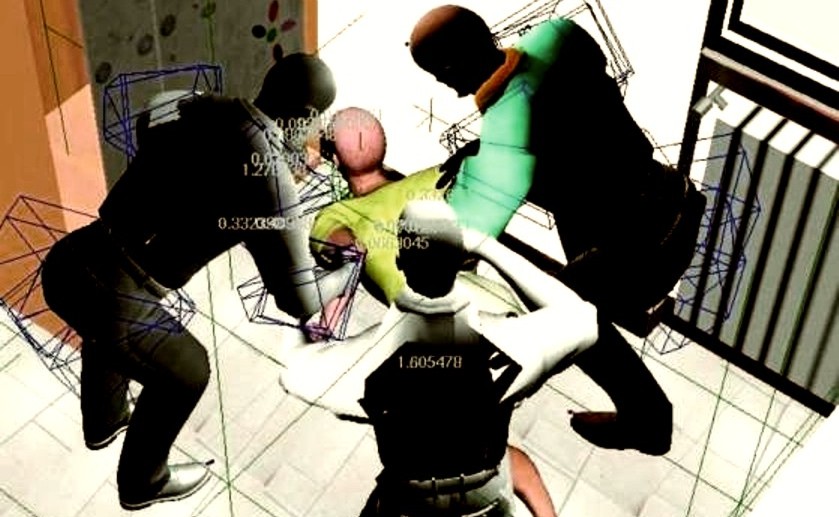
[Accurate Italian media recreation of attack based on masses of closed court evidence 2009]
Vital media history in 2009
In Italy and Europe generally the guilt of the two is almost universally perceived.
One reason is that although about 1/4 of the trial in 2009 was behind closed doors (quite the opposite of the “tabloid storm” and “show trial” Americans have been told about) Italians in particular got to find out about the long (15 minutes), remorseless, highly sadistic attack on Meredith.
Please click here for more
Wednesday, January 29, 2014
Continuing Enormous Strength Of The Evidence Which Defenses Seem To Have Abysmally Failed To Shake
Posted by Our Main Posters

[Above Judge Massei at Meredith’s house with panel-of-judges members early 2009]
What this Florence appeal is REALLY about
There is much confusion on this, sowed by various at-distance commentators who don’t read the Italian press or the excellent English-language reporters right there on the spot.
This is NOT a re-trial. This is a FIRST appeal by Sollecito and Knox against the guilty verdicts and sentences Judge Massei awarded them late in 2009. It is being repeated since their defense teams helped to bend the first (Hellmann court) iteration of the first appeal two years ago.
Since the end of 2009 they have been provisionally guilty of murder and other crimes, subject to final ratification by the Supreme Court, which has not yet occurred. Judge Hellmann decided to let them out and travel worldwide. Many think his decision on this was legally weak.
Was there prime-face justification for this appeal?
Under US and UK law many lawyers and judges think the judicial process could have stopped right there in the US and UK, because the grounds for appeal the defenses came up with in 2010 were essentially innuendo about DNA and little else.
But the pro-defendant Italian system unlike almost any other in the world allows appeals if any are filed to automatically go forward. So the bent, stretched-out and illegally wide-scope Hellmann appeal of 2011 was the first result.
Appointed apparently in illegal circumstances to replace the highly-qualified Judge Chiari (the lead-judge for criminal appeals, who then resigned) Judge Hellmann was ill-qualified at best - he was not a criminal judge and had handled only one other murder trial before, which he got wrong.
The annulment of the first first-appeal
The Supreme Court very rarely completely annuls any trial or appeal. But in this case in March 2013 it did just that, on a large number of grounds.
The 2013-2014 Nencini appeal court in Florence starts with the early-2010 Massei report plus new guidelines from the Supreme Court. Nothing else floated since early 2010 counts.
This case seems to break all records ever for (1) defamatory and dishonest PR; (2) dirty tricks, many illegal, by the defense; (3) dishonesty by those accused in two defamatory books and multiple statements to the press; and (4) greed and blood money while the process still goes on.
Contempt of court trials and investigations have commenced to push back, Amanda Knox is particularly at risk because her book contains false accusations of crimes (again) and she defies the Supreme Court in not paying Mr Lumumba his damages though she destroyed his business.
Suggested Reading: Part One
Sooner or later (no necessarily now) read all the must-read posts in this group here, all the open questions for Sollecito in this group here, and all the open questions for Amanda Knox in this group here.
1. Getting up to speed on the 2008 RS and AK charges
Our four-part summary of Judge Micheli’s report is the best thing to read (scroll down) especially Micheli’s argument that ONLY Knox had any reason to re-arrange the crime scene - she lived there and needed to point evidence away from herself.
Also read Amanda Knox’s and Raffaele Sollecito’s many mutually contradictory attempts to provide one alibi for both.
2. Getting up to speed on the 2009 RS and AK trial
The prosecution performed brilliantly and left the defenses despondent and out-classed (paving the way for more dirty tricks in 2010-13) and we were told that two defense lawyers nearly walked off.
To get a flavor of how badly the defenses did, read this post and this post on Knox’s absolutely disastrous stint on the stand. From there the defense portion of the trial really went downhill.
To get a flavor of how well the prosecution did read about the damning reconstruction (known about in all of Italy but not widely elsewhere) described here and here.
3. Getting up to speed on the Massei 2010 Report
The most vital read of all is the short-form version of the Massei Report by Skeptical Bystander and a team on PMF dot Org. If you have no time to read any posts, make sure to read that.
The other vital reads, not here but on the new “The Murder Of Meredith Kercher Wiki”, are the overview of the evidence and the chart of evidence synopsis.
We had a large number of posts starting in 2010 checking out whether in all details the Massei Report got it right. Read this first take.
4. Getting up to speed on the crime-scene scenario
Vital to understanding the Massei court’s crime-scene scenario which Prosecutor Crini espouses, wade through this excellent reconstruction of the crime in a long Powerpoint by our lawyer James Raper with the Powerpoint whizz Kermit.
About Part Two
The next part of our most-recommended reading from 2010 to 2014 will follow after the verdict to help correct the ill-informed debate over whether Knox goes back to jail.
It hardens the case and in our view leaves no holes for RS and AK to wiggle through. We will point the post to those arguments that anyone tries to raise.
Tuesday, January 28, 2014
Strong Proof That Raffaele Sollecito Also Stabbed Meredith Kercher Causing The Lesser Wound.
Posted by Ergon
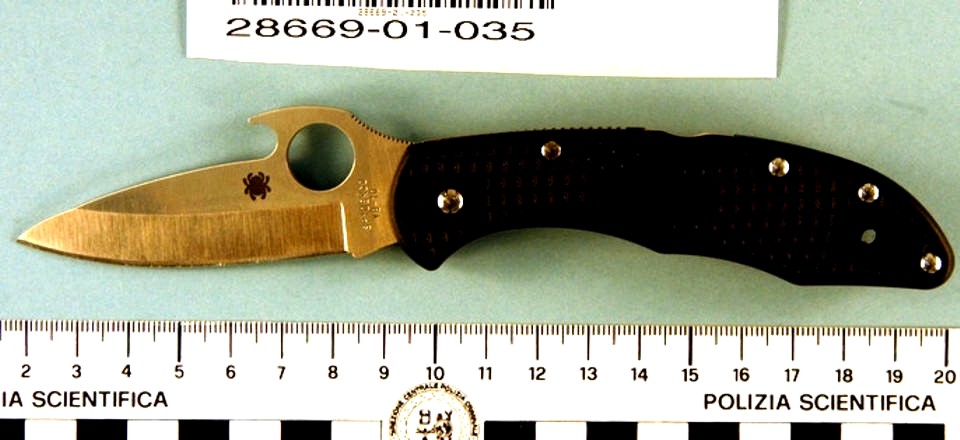
Sollecito’s “pocket knife” is a Spiderco Delica4 Emerson Opener made for killing people
Overview
This picks up from from my previous post just below on the large knife that overwhelming evidence shows was wielded by Amanda Knox.
Sometime around Thursday, January 30, 2014, Judge Nencini of the Florence Appeals Court will be delivering the verdict of the court in the case of Amanda Knox and Raffaele Sollecito, at which time all arguments regarding the knives, staged burglary, DNA and forensics, false accusation, wonky alibis, and reliability of witnesses will be rendered moot.
There will be nothing left but an argument about the legality of the process, and not the evidence, presented by the defenses if they choose to at some point in the fall of 2014 before Cassazione, the Supreme Court in Rome.
But, until then, we are left with the indelible image of Raffaele Sollecito’s defense attorney Giulia Bongiorno a few days ago flailing with two knives in court, arguing (1) the kitchen knife doesn’t fit the major wound, and (2) there’s a missing knife, which she suggested was a pocket knife wielded by Rudy Guede.
In part I, I proved that the imprint of the knife on the mattress sheet matched the kitchen knife, in shape and dimensions. We have already seen in other articles here on TJMK, that there is a definitive match with Knox and Meredith Kercher’s DNA on the murder weapon, and now we know it was transported to the cottage, to leave its mirror image on the bed.
Here, in part II, is a recap of Massei on the knives and wounds inflicted on Meredith Kercher, and how the defense continually tried to divert us away from the knife image by saying it did not fit the dimensions of the major wound.
Also we will have Frank Sfarzo and Bruce Fischer’s amateurish attempts to prove that Rudy Guede caused the knife wounds. And it will try to address what happened to the missing knife that inflicted the lesser wound on Meredith, and who might have wielded it.

Closeup of the stabbing end of the Spiderco knife shown at the top
Deliberate false claims
One of the many myths surrounding this case was that investigators had no reason to seize the kitchen knife from Sollecito’s flat, and when I showed the photos from Conti’s lab, with the deep scratches on it, that it may have been altered in some way, and denying that was where some of Meredith’s DNA might have been trapped. IIP even posted an out of focus picture some time back to prove that point.
Here is Frank Sforza on the late and unlamented Perugia Shock.‘ANY KNIFE COULD HAVE DONE THAT WOUND’
End of a Myth
Frank Sfarzo, Sept. 19, 2009
Quote: “It was introduced in the room, it was taken out of the box with all precautions, it was shown to them like a relic. They could have a look at it from a distance, and see, or believe to have seen, the groove into which the biological material of Meredith was found.” And:
“Amanda Knox’s lawyer Carlo Dalla Vedova brought him (independent expert Professor Cingolani) to say something very clear about the main one: any single-edge knife is compatible with Meredith’s larger wound.”
Here is Bruce Fischer on the error-ridden Injustice In Perugia.
Quote: “The knife was a common kitchen knife retrieved from the kitchen of Raffaele Sollecito. The knife was chosen from the drawer because it looked clean. (Editorial note: it was also, deeply scratched and nicked)
No blood was on the blade.
No DNA was on the blade.
The knife doesn’t match most of the wounds on Meredith.
The knife doesn’t match the bloody imprint left on the bed.
The photographic evidence shows that Raffaele’s kitchen knife is to (sic) large to match the bloody imprint on the bed.
At 4 cm from the tip the knife blade is 2.2 cm wide, while the injury (i.e. the small wound) is 1.5 cm wide. Raffaele’s kitchen knife could not have caused the wounds. The knife blade is also too long to have inflicted the large wound.” (Ed. note: Here they are conflating the dimensions of the lesser wound with the knife that inflicted the major wound, to cause confusion)
This is typical of the dishonesty of Bruce Fischer, who was only parroting what the defense experts had been saying in Massei’s court.
Fischer’s source was these posts from the now discredited Frank Sfarzo: Knife doesn’t match wounds and Knife doesn’t match imprint on bed.
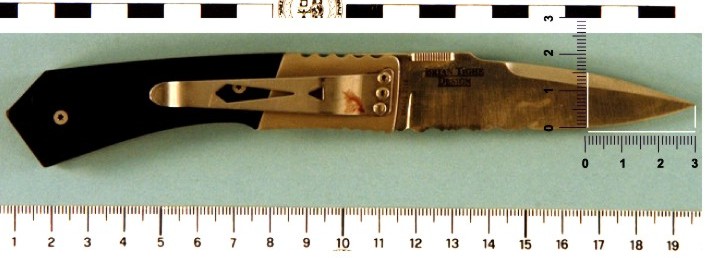
An image of Sollecito’s 2004 model Brian Tighe knife specifically made for killing people
From the Massei Report
This is from the excellent PMF translation.
P. 99: The witness (investigator) recognized it when shown Exhibit 36 as that same knife (pages 176 and 177, hearing on February 28, 2009). He remembered that in the drawer there were other knives, but he collected what was later indicated as Exhibit 36. It had the following dimensions: blade 17 cm. and handle of dark colour 14 cm. He recalled that in Sollecito’s bedroom they found another knife whose total length was 18cm, with an 8cm. blade.” (This would be his Brian Tighe pocket knife, the Spyderco flick knife was seized from his person when he was arrested)
P.135: The stab wound corresponding to the injuries on the right side of the neck was indicated as being a little wound of very small dimensions with a very small path. The path of the wound is 4cm long and only 1.5cm wide. The blade used to make this wound must have had a width of 1.5cm at 4cm from the point. This blade only entered 4cm into the neck “because it encountered the angle of the jaw” (page 33 of the transcripts).
P.147: Professor Vinci testified at the hearing of August 18, 2009. He considered the subject of the “bloody stains” found on the undersheet in Meredith Kercher’s room. In relation to these stains, on the basis of graphics given in the report dated June 30, 2009, he asserted that the knifeprint found on the undersheet in Meredith’s bedroom could have been made either by an 11.3cm knife blade, or by a 9.6cm knife blade together with a mark 1.7cm long left by the handle of the same knife. In either case, the blade could not be wider than 1.3/1.4 cm. (Ahem)
P. 154: Prof Cingolani: He clarified that irregularities present on the blade, on the edge of the blade, could have created the rippling in the wounds.
P. 157: the examination of the wound on the right part of the neck, which had absolutely incompatible dimensions: 1.5cm long and 0.4cm wide with a depth of 4cm.
p.164: she was therefore struck on the right latero-cervical region with a single-edged blade which produced a wound with dimensions of 1.5cm by 0.4cm, with a penetrating depth of 4cm: an action not relevant in determining the cause of death but intended, as before, to subdue Meredith Kercher’s resistance.
p.166: the width of the (kitchen knife) proximal third [blade one third of the distance from the handle] is 3cm.
p166: Along the edge, there was evidence of irregularities in the form of thin ridges at 2.2cm and at 11.4cm from the tip.
p. 167: The experts and consultants who were examined during the course of the trial, taking into examination the various wounds present on the neck, excluded the compatibility of the knife Exhibit 36 and the wound inflicted on the right latero-cervical and having the following dimensions: 1.5cm by 0.4cm, with a depth of 4cm in an oblique upwards direction. They in fact showed that the confiscated knife, at a distance of 4cm from the tip, has a width of approximately 3cm and thus almost double the 1.5cm width of the wound, a width thus incompatible with the dimensions of the blade of this knife.
p.172-3: In relation to the above, the thesis of the incompatibility of the most serious wound and the knife Exhibit 36 is held to be unacceptable, though this knife is incompatible with the 4cm-deep wound, as we have seen. Nor does this conclusion contrast with the circumstances illustrated by Sollecito Defence consultant Professor Vinci in his report relating to the “šanalyses of the haematic stained shapes discovered on the mattress cover in Meredith Kercher’s room”›.
p.175: The reconstruction offered by Professor Vinci certainly appears suggestive. Some doubt remains in the reconstruction of the dimensions of the knife derived in relation from the marks found on the bed sheet. If these marks indeed derived from the knife placed on the bed sheet, then they should in fact have been more abundant, and should have outlined the shape of the knife with greater precision, for the following reason: the knife, if it was placed on the bed sheet, was placed there immediately after it had been used to strike Meredith; therefore, the fresh and abundant bloodstains present on the blade should have been imprinted onto the bed sheet in a more evident and copious way than is actually appreciable. It cannot in any case remain unobserved that, if one of the knives used had a blade length of 11.3cm, or else 9.6 cm ““ according to what was indicated by Professor Vinci in the conclusions to his report ““ the argumentation set forth to sustain the incompatibility of the knife Exhibit 36 would not, on this alone, have any foundation.”
For the record, here are the paragraphs from the English translation of the Massei Report where Patricia Stefanoni describes the streaks and scratches on the double DNA knife and locations where samples were taken.
Judge Massei (on pg. 196) wrote about forensic expert Patrizia Stefanoni:
“She specified that trace B had been taken from a point on the face of the blade; she added that no biological trace was visible to the naked eye. However [she added that] “under considerable lighting, a series of streaks were visible to the naked eye. These streaks ran parallel to the upper part of the blade, therefore, more or less, they were parallel to this side [of the blade] and towards the point they went downward and, therefore, they followed the shape of the point. These streaks, anomalies in the metal, were visible to the naked eye under intense lighting” (page 95 of the transcript). Still in regard to the visibility of these streaks, she specified that they were “visible under good lighting by changing the angle at which the light hit the blade, since obviously the blade reflects light and thus creates shadows, making imperfections visible”.
The samples taken from the handle, in the points indicated with the letters A, D, F were taken in order to verify the possible presence of DNA by the person who grasped that knife. In particular, for sample “A”, a particular point had been chosen, “in which there’s the hand-guard” (page 95) and therefore, in all likelihood, the point where there was the most friction between the hand that grasped the knife and the handle. This sample yielded the result of Amanda Knox’s genetic profile.
The other samples yielded negative results, except the one taken from the blade, from the “scratches and streaks visible under good lighting, by changing the angle of the lighting with regards to the blade” that yielded the genetic profile of the victim (page 96 hearing May 22, 2009).”
And now we know: Dottora Patrizia Stefanoni got it right.
And some disagreement amongst the experts: p.291-2: Professor Cingolani had in fact noted and declared the following: “in the second lesion, the one that is 2 centimetres deep and 1.5 centimetres wide from corner to corner, the only thing that we are tempted to do, [albeit] in an absolutely amateurish/unprofessional way, because we only have photographs available, is to measure, assuming that only the tip entered, how wide the blade is [at a point] 2 centimetres from its tip: it is precisely 1.5 centimetres wide!”

A closeup with measurements of Sollecito’s Brian Tighe knife made for killing people
My own investigation
Here is my initial close examination first posted on PMF dot Net last summer.
Ergon Post subject: INVESTIGATION OF THE KNIVES USED IN THE MURDER Posted: Sun Jun 09, 2013 12:42 am
Investigation into the death of Meredith Kercher-THE CAUSE OF DEATH AND THE MEANS BY WHICH IT WAS OCCASIONED
The murder of Meredith Kercher was particularly bloody and brutal. Reading through Massei, pages 109- SURVEY AND EVALUATION OF THE FORENSIC RESULTS through to 158-173, THE CAUSE OF DEATH AND THE MEANS BY WHICH IT WAS OCCASIONED we are reminded of the brutality with which the attack took place, the sexual assault by more than one person, the restraining, the defensive wounds on Meredith’s hands, the torture by more than one knife, restraining by a hand over the mouth when she screamed, (even while she bled to death) and two major knife wounds, one to the left of the throat, the other, to the right. Massei rightly concludes, as did the Supreme Court, that more than one attacker was involved, and, per Massei, there was more than one knife used in the attack. The defense experts tried to draw attention away from the kitchen knife, but, reading through Massei again, I saw how they dropped clues to what the dimensions of the second knife might have been.
We know that Raffaele Sollecito had a fetish for violent porn, that he had an expensive collection of knives, and his many alibis for the night in question have been thrown out by the court. From my studies of criminal psychology, from reading both Amanda and Raffaele’s books and watching videos of their court appearances and television interviews, their psychopathology seem apparent not only to my eyes, but even to the general public that must have looked at them and decided their story somehow did not ring true, and refused to buy their books. There are indeed certain neurological deficits apparent in their demeanor that renowned German neurologist Dr. Gerhard Roth postulates shows up as a ‘dark patch’ in brain scans of all those who display criminal behaviour, and even, “The second type is the mentally disturbed criminal who looks at his world as threatening. A wrong look, one false move, he can explode and become a killer,” he said.
I was shown videos of the crime scene, and able to observe the wounds in Meredith’s neck. The scenes of the room in which the murder took place and, the neck wound, were truly horrifying to me, and showed the extent of the attack. Those images still sit in the mind, but also, cause me to want to get to the bottom of this mystery, hence, my work on the case.
I believe, observing the photos I already posted in the Evidence Files that the kitchen knife was the murder weapon that struck the fatal blow that night. I also believe, reading the pathologist’s report, that the blade that was stuck in Meredith’s neck, in the right latero-cervical area to a depth of 4 cms, was Raffaele Sollecito’s Brian Tighe pocket knife, photo also in the evidence files. Yes, no DNA or blood was sampled from it, but that only indicates it was successfully cleaned that night. My reading of Sollecito’s pathology is that he would not want to dispose of the knife he used, it being very expensive and also as an extension of his fetishistic ego. One other thing I asked to look at: The high resolution photos I posted of the bed show the outline and dimensions of two knives. I believe that both images are of the kitchen knife that struck Meredith in the left latero-cervical to cause a cut of 8-9 cms in depth, and a length of 8 cms (p. 167)
There are two exhibits of the mattress cover, one marked “J” and the other, “O”, both displaying the approximate size and dimensions of the kitchen knife, which I will explain when I post the photos. The first, “J”, has more blood because I believe the knife was placed there first and wicked on to the sheet, causing the distorted splotch at the end. By the time it was moved to its final position by the purse, “O”, it retained just enough blood to leave a clearer, indelible impression.
It was a butchery.”
One last point: Rep. 33A/B/C/D were four samples taken from a black-handled folding knife. It tested negative for blood, but, in one sample, the DNA profile matched a mix of Knox and Sollecito. The other samples were negative. Stefanoni: pp. 103-104
Looking at the images produced by my illustrator, and taking the average of the two estimates of the wound depth, 2 and 4 cms, one arrives at a blade width of 1.5 cms at 3 cms length from the tip of Raphaele Sollecito’s Brian Tighe collectors knife, on which, coincidentally, both Amanda Knox and Sollecito’s DNA was found.
Conclusion:
Raffaele Sollecito stabbed Meredith Kercher, causing the lesser wound. And my personal opinion? It was with the Brian Tighe knife, and somehow both he and Amanda Knox got their DNA on it around the same time that night.
Monday, January 27, 2014
An Investigation Into The Large Knife Provides Further Proof That This Was THE Knife
Posted by Ergon
Overview
This is the first report of an investigation (the second part follows soon) of the kitchen knife used in the murder of Meredith Kercher, RIP.
Specifically its compatibility with the imprint of a bloody knife found by police investigators on her bed under-sheet which as you will see here seems possible to prove.
Two other recent posts also concentrated on aspects of the knife as strong proof: (1) proof of both Knox and Kercher DNA and (2) proof from the throat wounds.
- Reference files are from very high definition crime scene photos not in general circulation.
- Grateful thanks to the volunteers of the Meredith Kercher community who assisted in this production
Florence Court of Appeals
This is our poster Machiavelli, tweeting from the Florence courtroom on November 26, 2013:
“(Prosecutor Alessandro) Crini stated that this kitchen knife was compatible with the knife print on Meredith’s bed sheet”.
And this is from the defense summing up on January 09, 2014:
Bongiorno: “It’s too big, not the murder weapon.”
“Bongiorno shows a picture with an envisioned “knife” (pocket knife belonging to Guede?) together with the print on the bed sheet.”
“Nobody brings a “small blow with a big knife” “You don’t use half of a big knife” (she says)
Genesis of an investigation:
To recap: evidence was been presented at the Massei court of the first instance, which accepted that the kitchen knife, containing both Meredith Kercher’s DNA on the blade (trace B) and Amanda Knox’s DNA on the handle (trace A) was the weapon that struck the fatal blow to Meredith Kercher’s throat.
At some point after the attack, the perpetrator, Amanda Knox, puts it down on the bed, leaving “hematic stains” (bloody imprints) on the mattress.
The court concludes the shape of the imprints are compatible with the kitchen knife. It also concludes, based on the size of a lesser wound that a second, smaller knife caused the wound on the other side of the neck, and, the impossibility of accepting that a single weapon inflicted both wounds.
This is what it boils down to now, as we come to the final arguments of this case on January 30, with a decision to be handed down by the court later in the day:
- Was the kitchen knife found in Raffaele Sollecito’s kitchen the murder weapon that killed Meredith Kercher on November 01, 2007?
- Did the killer leave behind proof in the form of bloody imprints on the under sheet covering Meredith’s bed?
- And is the defense trying to divert attention away from it, even though the image on the bed fits the dimensions of the kitchen knife?
- And pointing to a second knife, not ever found?
This article (to be followed by part II) was prepared to offer answers to these questions.
Methods used
As someone with a keen interest in photography, I know we see things in photographs that are not always apparent to the naked eye.
Where before we had all been misled by low definition photographs released by the defense to obscure incriminating details, I was able to obtain and view the high definition photographs shown here that proved that indeed, the bed imprints matched the seized kitchen knife, exhibit 36.
These photographs, first posted at Perugia Murder File Evidence Files have been circulating for some time, with members trying to match the knife to the bed imprints, but not, in my opinion, being able to match it exactly.
First, note that the killer placed a knife on two separate locations on the bed, marked by reference cards “J”, and “O”. (Reference photos below.)
I discarded “J”, because there was too much blood there to form an accurate measurement. The killer lifted the knife and then placed it at “O”, which gave a better image, but even then, did not match exactly. Still, it was clear the images looked like a kitchen, and not, a pocket knife as alleged by the defense.
Looking at the reference photo, I saw a double image of a knife blade at “O”. (see where there’s a curved edge of the blade? That’s what convinced me there might be a double image there)
Conclusion reached
My opinion is the knife shifted slightly when it was placed there, hence the double image, which now made a perfect match with the kitchen knife, in both instances (see reference photos).
So I got a professional illustrator and other skilled people people to do the scale drawings and produce the video you see above which seems to provide conclusive proof the murder knife was placed on the bed.
Reference photos:
Image 1 above (click for larger image): Bed II (Image J and O on under sheet, shot November 02, 2007)
Image 2 above (click for larger image): Knife II (Image O on under sheet, shot November 02, 2007)
Image 3 above (click for larger image): FOTO5BIS (Conti-Vecchiotti lab, Mar. 22, 2011)
Image 4 above (click for larger image): Knife-Bed-Vector-AllScales (To prove the scales used to match the images)
Image 5 above (click for larger image): Knife-pos-lower-hi (The knife’s first resting position at “O”)
Image 6 above (click for larger image): Knife-pos-upper-hi (The knife’s final resting position at “O”)
Next steps
There are only four more days left till the Florence Appeals Court under Judge Nencini issues its verdict. It must of course consider ALL the evidence, of which there is a preponderance that indeed suggests the verdict will, as would be proper, be guilty as charged.
Part II will be ready ASAP. It will be a recap of Massei on the knife, and how the defense continually tried to divert us away from the knife image by saying it did not fit the dimensions of the major wound. Also will have Frank Sfarzo’s misdirection and Bruce Fischer’s amateurish attempts to prove that Rudy Guede caused the knife wounds.
Happy as always to do my share for justice for Meredith Kercher.
Monday, January 20, 2014
Appeal Session #9: Sollecito Team Concludes, Prosecutor Crini Rebutts Defenses’ Claims
Posted by Our Main Posters
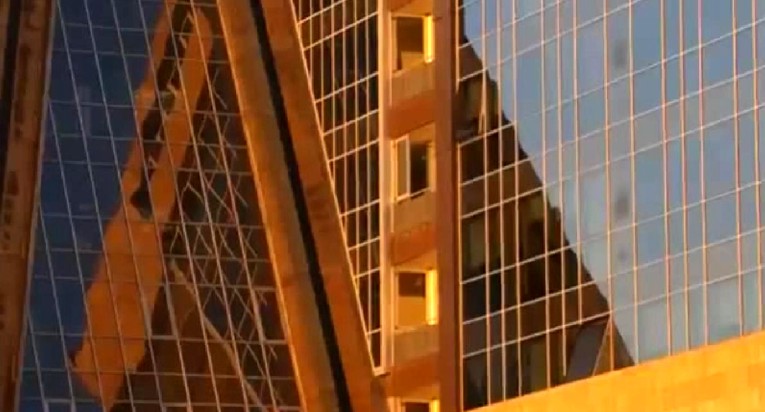
[Above: Sun hits the facade of of one of the most modern courtrooms in Europe]
5. Andre Vogt’s Excellent Post-Court Reporting In The Week
From Amanda Knox’s fugitive fears: she’s right to be worried
Sources close to defence lawyers confide that they, too, fear it may not go their way.
It didn’t help that Knox ignored her lawyers’ pleas to travel from Seattle and attend court in Florence - she sent an email instead - nor that she repeatedly requested to meet the Kerchers, only to be sternly rebutted by their lawyer, who suggested she act more like a defendant.
Then she started a new blog and began blithely responding to comments ““ most recently posting an admission that she had once faked a break-in as an April Fool’s prank before she left for Italy (a staged burglary is a key part of the case against her).
Have the wheels come off Knox’s public relations machine now that she’s safe in Seattle? She may need them again soon, because this appeal differs radically from the first one in 2011 which resulted in her acquittal, but which was harshly criticised and eventually annulled by Italy’s Supreme Court earlier this year.
There are three good reasons why this trial is different ““ and why Knox has reason to be nervous:
First, her co-defendant Raffaele Sollecito’s lawyers have distanced his defence from Knox’s. “He may have brushed her hair and cleaned her ears, but he would not have killed for the love of Amanda,” his lawyer Giulia Bongiorno told jurors in closing arguments earlier this month. “Turn off Amanda,” she said. “Raffaele is not Amanda’s other half.”
Second, the uncompromising Perugia prosecutor Giuliano Mignini has stayed away from Florence. Without him in court as a convenient villain, the “innocent American abroad being railroaded by a rogue prosecutor” narrative no longer holds water. The Florentine prosecutor, Alessandro Crini, has distanced the state’s case from the always controversial kitchen knife that may or may not have been the murder weapon. He’s also given less credence to the “˜sex game gone wrong’ theory that was central to the prosecution case in the first trial. Instead he’s considered all the evidence as a whole. There might have been a fight about missing money and hygiene, he said, but motive doesn’t matter: murders happen all the time for banal reasons. And convictions happen on much less evidence.
Third, the strict Florence judge, Alessandro Nencini, has curbed all antics by lawyers, public and media. There are no perp walks with popping flashbulbs this time. However the appeal ends, no one can argue that this trial wasn’t professionally managed.
4. Tweets by freelance reporter Andrea Vogt
14. Sollecito defense on bra clasp: For us, the condition of the room and conduct of the forensic police tells us there was contamination.
13. Judge interrupted Sollecito lawyer with a booming “No!” saying wiretapped conversations of Sollecito family not to be discussed this trial.
12. Maresca: Whatever you decide, we believe justice will be done & all elements considered in depth. We will serenely accept your decision.
11. Kercher attorney Maresca: Perugians reacted angrily to amanda knox acquittal because it was scandalous: acquittal was decided in advance.
10. Fabbiani, attorney for Meredith’s brother, urges court to look beyond motive. Perna for her sister: one person alone did not kill Meredith.
9. Lumumba attorney Pacelli concludes with this phrase to the jury: “Convict liar Amanda, the diabolical slanderer.”
8. Presiding Judge Nencini has cut Pacelli’s amanda knox monologue short. Says going off track. Pacelli promises to finish in 5 min.
7. Lumumba’s attorney Pacelli is delivering a vitriolic rebuttal on amandaknox - mixing his unbridled contempt w/her own statements.
6. Prosecutor asks (in case of conviction) cautionary measures so defendants can’t flee. Options are: passport, house arrest or arrest.
5. Prosecutor Crini: a lack of motive does not equal proof of innocence.
4. Trial back in session after “pausa caffe” during which Sollecito and his accusers were in tiny court coffee bar at same time. Only in Italy!
3. Sollecito attorney: The only things certain are the death of Meredith Kercher and the presence of Rudy Guede in the house that night.
2. Sollecito attorney: This case is an anomaly. Various judges interpreted facts differently over the years. There’s reasonable doubt.
1. In court, Sollecito attorney Maori contesting prosecutor’s arguments point by point. Knife, bathmat, alibi, witnesses. Afternoon rebuttals.
3. Tweets by our main poster Machiavelli
[At this point Machiavelli signed off]
62. Crini: Nencini asks the clerk’s officer to write down formally the exact terms of prosecution request to issue cautionary measures [if verdict guilty]
61. Crini says his conclusions are unchanged. Prosecution suggests arrest decrees are issued immediately if defendant(s) is(are) guilty
60. Crini points out the crime and motive originate from group dynamic.
59. Crini: Bongiorno had pointed out that anyway Sollecito should be accounted only for what he had done (implicit: not what Knox did)
58. Crini: The excessive and too quick reaction to a situation of rising argument is typical of group reaction.
57. Crini: Argument about cleaning was also reported by Meredith to her father John Kercher
56. Crini: Massive rejection of English [girls] testimonies is “weak” on the part of defence; tensions and dislikes in the house are recorded on paper
55. Crini: Movite cannot be assessed preliminarily as if it was a piece of evidence to be discussed
54. Crini: if you need to prove a crime, it is opportune to detect a motive, but a motive is only a plausible conjecture not basis for deduction
53. Crini: Bongiorno called all English girls ‘unreliable’ (because English, maybe coached by lawyers etc.)
52. Crini calls ‘amusing’ Bongiorno comparing her client with captain Schettino
51. Crini: Some thoughts about the motive.
50. Crini: It makes no sense to say the large kitchen knife is ‘incompatible’ with the big wound.
49. Crini: To the court: can you imagine a ‘surgical operation’ with a small knife producing a wound with clear margins on a live struggling victim?
48. Crini: it is difficult to produce an 8x8 cm large wound with a small 8cm long knife, it would produce at best a wound with irregular margin
47. Crini: The blade hypothesized by defence from the bed sheet stain is anyway larger; these are anyway conjectures. Datum is compatibility
46. Crini: thinking you can preemptively deduce the size of the blade from bed sheet stain is ‘unrealistic’
45. Crini: The “double knife theory” is based on the small size of the right wound, experts point to a likely much smaller knife with thin blade.
44. Crini: no defence wounds, no fight bruises, nothing under nails, bruises indicate forced restraint of victim; how she was immobilized
43. Crini: Massei court did not decide about attribution of pillowcase shoeprints, Crini objects Vinci’s finding, thinks prints are too small
42. Crini: Knox defence: says when Guede leaves palm print on pillowcase leaves a signature
41. Crini: Bongiorno called the murder scene “flooded” with Guede’s DNA. Crini points out his traces in room indicating he had free hands (no weapon)
40. Crini: The defences also dealt thoroughly with the use of the knife, wounds, blade size
39. Crini: The dynamic of the crime. Maori attributed all traces to Rudy Gede alone
38. Crini: All alleles of the victim were found in a scratch on the knife blade. Human DNA is normally not on knife blades
37. Crini: Vecchiotti admitted there was a scratch on the blade
36. Crini: The same defence experts did not object to the attribution Y haplotype of Guede found in the victim’s vagina
35. Crini: Calls Vecchiotti’s reasoning on bra clasp “a priori”, dismissed for reasons totally general and vague. Doesn’t read Y haplot. and X together
34. Crini: Points out a passage where Vecchiotti’s report misquotes police findings inserting the word “only”, built a strawman
33. Crini says let’s look at the Conti-Vecchiotti report, to see what it says, if you can subscribe with the report.
32. Crini: Tagliabracci in 2008 objected to quotes of prof. Gill calling them “too recent”
31. Crini: Objections referred to Low Copy Number are obsolete, and also partly undermined by the RIS report
30. Crini: Calls “embarassing” Bongiorno when alleges the police was wrong in attributing stains to cat’s blood
29. Crini: Disproves Bongiorno’s allegation that the clasp was stepped over.
28. Crini: Novelli rules out there was contamination in laboratory, as well as tertiary transfer in situ.
27. Crini is “pleased” the defence did not attempt to allege laboratory DNA contamination. Points out findings by Novelli
26. Crini: report says had there been internet surfing or writing activity, this would have resulted as obvious.
25. Crini cites arguments about computer expert reports, hearings of 14 Mar 2009 and Dec 2010 say further investigation is unnecessary
24. Crini: Maori omits to quote pieces of Curatolo’s testimony.
23. Crini will deal with Maori’s “theory of alibi” only very briefly
22. Crini says defence arguments on bathmat print are conjectures. Rinaldi is actually same person who correctly attributed shoeprint
21. Crini: Bathmat print: compatibility assessment can be done on what is measurable
20. Crini: Guede knew the hous and apartments, would have chosen logical entries and logical behaviour, Crini calls burglary theory ‘not credible’
19. Crini: alleged small wounds on Guede’s hand, inconsistent with absence of his blood on scene
18. Crini: Talks about Bongiorno’s criticism to staged burglary scenario - the scenario of Guede already inside apartment
17. Crini says police report timings, records of CCTV video camera and phone calls are ‘consistent’
16. Crini does not see corroboration of alleged 7-minute late clock error of CCTV. The 13.29 call was from Carabinieri HQ and don’t change anthg
15. Crini tris to “strain” the timing of police arival to favor the defence, to see if scenario fits. Considers possible CCTV time error
14. Crini: Sollecito calls Carabinieri too late, also because last phone call to Romaneli was at 12.38
13. Crini: Call to Sollecito’s sister, and then Sollecito’s call to Carabinieri at 12.51-45. Crini: this timing is late independently from Battistelli
12. Crini: Battistelli arrives on foot about 10 minutes eariler than postal police car
11. Crini wants to look better at some arguments about Sollecito’s declarations to postal police. Battistelli recalls 12.35 consistent with CCTV
10. Crini talks about Sollecito ‘sidetracking’, talking about statements to postal police
9. Crini: Knox’s Calunnia also contains details that have external corroboration and she could not have deduced from simple burglary scenario
8. Crini: A Calunnia is itself incriminating (require strong defence explanation), but Knox’s Calunnia also contains furth incrimiating details
7. Crini: Knox maintained her calunnia against Patrick over a period of several days. Crini points out the logicality of Cassazione argument.
6. Crini: Knox statements: ‘Patrick had sex with Meredith’ and ‘there was a loud scream’ were new elements, unrelated to known facts and not retracted
5. Crini: On calunnia, Crini points out that there was an argumentation about Knox defence about usability of Knox’s statement. argument is wrong
4. Crini: Theoretically all defense points could be replied to, Knox’s Calunnia, Sollecito statements to police, the staged theft, the mat print; DNA evidence
3. Crini says he will talk briefly only about a few selected points, without repeating himself, and without discussing old arguments again
2. [After the break] Prosecutor General Crini begins to reply.
1. [After the break] Sollecito entering the court, asked what he expect, says “no comment”
2. Tweets by reporter Barbie Latza Nadeau
44. Judge especially hard on Sollecito sub lawyer, reprimanding her for introducing new arguments when she is only supposed to be refuting.
43. Sollecito sub lawyer argues no DNA from Meredith Kercher on bra clasp w/Sollecito’s DNA, failing to mention she was wearing the bra..
42. Six years of Kercher trials and some lawyers still pronounce the K in Knox.. “ka-nox” as Sollecito’s sub lawyer just did.
41. Kercher lawyers finished, now Sollecito lawyers up for rebuttal, but both his principal lawyers had to leave early.
40. Kercher atty Maresca: Perugians reacted angrily to Amanda Knox acquittal because it was scandalous: acquittal was decided in advance.
39. Kercher lawyers ask court to consider all the previous testimony they say proves more than one person killed Meredith Kercher.
38. Lumumba lawyer says his client has not received any of the €22k he is owed by Amanda Knox even though the slander conviction is final.
37. Judge reprimands Lumumba lawyer for veering off course, he is only to discuss slander aspect of case, not murder itself.
36. Lumumba’s atty Pacelli is delivering a vitriolic rebuttal on Amanda Knox - mixing his unbridled contempt w/her own statements.
35. Lumumba keeps referring to Amanda Knox as “the American”, says she had a penchant for drugs, alcohol, sex.
34. Lumumba lawyer calls Amanda Knox a “diabolical slanderer” “¦
33. Lumumba lawyer says Amanda Knox substituted Patrick for Rudy Guede.
32. Court back in session with Lumumba lawyer up. Sollecito back in court after break.
31. Prosecutor Crini: a lack of motive does not equal proof of innocence. Amanda Knox
30. Prosecutor focused on knife, says traces of Meredith Kercher and Amanda Knox are valid.
29. Sollecito staring at prosecutor as he delivers rebuttal, jury taking notes, judge listening intently, journalists trying to stay awake.
28. Prosecutor in new Amanda Knox appeal says motive in murder is never simple and clear, like murder itself is complex.
27. MeredithKercher lawyer says her brother and sister plan to come for verdict Jan 30.
26. Prosecutor just referred to Amanda Knox as “la nostra Knox” as he tries to refute defense arguments.
25. Trial back in session after “pausa caffe” during which Sollecito and his accusers were in tiny court coffee bar at same time.
24. Prosecutor making brief rebuttal, pushing Sollecito and Amanda Knox back together after Sollecito lawyer clearly tried to separate them
23. Sollecito just told group of reporters he was not sure if he would come for verdict.
22. Sollecito lawyer finished. Judge asks lawyers how much time they need for rebuttals. 15 minute
21. Sollecito lawyer says his client is not guilty. Does not mention Amanda Knox in final moments of closing arguments.
20. Sollecito atty: This case is an anomaly. Various judges interpreted facts differently over the years. There’s reasonable doubt.
19. Sollecito lawyer tells the court they can only accept that Meredith Kercher was murdered and that Rudy Guede is the lone killer.
18. Sollecito lawyer G Bongiorno has just arrived in court with three male assistants.
17. Sollecito lawyer says Sollecito was never with Guede, Meredith Kercher and Amanda Knox. Says testimony that they were was false.
16. Sollecito lawyer working to discredit witnesses. Says store owner who says he saw
15. Judge in response to Sollecito lawyer asking if jury is tired: if we are tired now we will have to kill ourselves by the end of the day.
14. Sollecito in court today. Will he come for verdict on 30th?
13. Sollecito lawyer lays out why homeless man in park who testified he saw Amanda Knox and Sollecito arguing night of murder is unreliable.
12. Patrick Lumumba also absent from court today.
11. Judge in Amanda Knox new appeal rarely looks at Sollecito lawyer, writing notes, scrolling tablet, but minimal eye contact.
10. Sollecito lawyer on mass media tangent, says the “super witnesses” for prosecution in earlier trials were all for show.
9. Judge in Amanda Knox 2nd appeal asks for clarification on hard to follow techie evidence.
8. Sollecito lawyer showing computer records for Raf’s computer access, says access was human, not automated. Jury squinting at slides.
7. Sollecito lawyer moves on to Raf’s computer, how computers belonging to Amanda Knox, Meredith Kercher were all “accidentally” destroyed.
6. Sollecito lawyer back on break in. Frequent reference to Guede “the real assassin”. No mention of Amanda Knox at all yet.
5. Sollecito lawyer focusing on staged break in.
4. Sollecito lawyer G Bongiorno not in court this morning.
3. Sollecito lawyer Maori says luminal also picks up fruit juice, not just blood. Judge taking notes.
2. Sollecito lawyer showing slides of famous footprint on bathroom rug in Meredith Kercher blood.
1. Sollecito lawyer now summing up in Florence, then rebuttals. Verdict expected Jan 30.
1. Tweets by reporter for La Nazione
46. Lawyer Colotti (Sollecito) : “In a process based on circumstantial evidence motive is the glue of the whole thing.”
45. Lawyer Colotti (Sollecito defense) begins.
44. Sollecito defense : “The Meredith’s bra clasp was contaminated as evidence “
43. Sollecito defense : “It was Rudy Guede who entered through the window after breaking the glass “
42. Sollecito defense : “There was no misdirection in statements of Sollecito “
41. Now it’s up to the defense again, Sollecito team begin their final responses
40. Lawyer Maresca (Kerchers) : “On the blade there are traces of the victim “”
39. Lawyer Maresca (Kerchers) : “Hellmann appeal, the acquittal was a pre-cooked judgment”
38. Lawyer Francesco Maresca (Kercher family) begins
37. Lawyer Perna (Kerchers) “Wounds on the body victim compatible with the knife found at Sollecito’s house “
36. Lawyer Perna (Kercher family) begins
35. Lawyer Vieri Fabiani , one of the lawyers for the plaintiffs, the Kercher family
34. Lawyer Pacelli (Lumumba) : “Judges, sentence the liar Amanda , the devilish slanderer “
33. Lawyer Pacelli (Lumumba) : “Meredith could not stand Amanda”
32. Lawyer Pacelli (Lumumba) : “Amanda is on Lumumba’s mind constantly “
31. Lawyer Pacelli (Lumumba) : “Amanda hoped Lumumba slander would not be discovered “
30. Lawyer Pacelli (Lumumba) : “the defense of Amanda was rancorous and non-existent “
29. Lawyer Carlo Pacelli (for the plaintiff Lumumba) begins.
28. Crini: “If Sollecito and Knox are condemned then precautionary measures should be decided to ensure execution of the sentence”
27. Crini: “There were tensions in the house for reasons of hygiene ”
26. Crini: “The absence of sure motive is not a defensive threshold “
25. Crini : “At the scene there was no contamination “
24. Crini : the prosecutor carries on his indictment reaffirming the validity of the clues
23. Crini : the prosecutor continues rebuttal, the Tuscany Attorney General Dr Tindari Baglione enters the court
22. Crini : “Slander of Lumumba in itself is an important element “
21. Crini : the Prosecutor General starts his rebuttal
20. Sollecito’s father::”That’s understandable , too much stress”
19. Sollecito :”I do not know if I’ll be in the courtroom on the day of judgment
18. This ends the argument of Maori (defense of Sollecito )
17. Maori: “The only possible verdict is an acquittal”# meredithnazione
16. Maori: “In the various processes motive , time, and the murder weapon changed ontinuously”
15. Maori: “The witnesses who say that Raffaele and Rudy knew each other, said things false”
14. Maori:”The witness Quintavalle for many days after the murder of Amanda did not speak”
13. Maori: “The witness Quintavalle speaks thirteen months after the fact”
12. Maori: “The witness Curatolo is unreliable , wrong date and report things that are false”
11. Maori: “Some witnesses have had access to financial sinecures”
10. Maori: “The witnesses are characters created by the mass media”
9. Maori: “At 21.26 Sollecito opened from his PC the cartooon Naruto”
8. Maori: “At 21.10 there was interaction Sollecito with his pc”
7. Maori: “Analysis of the computer shows that Sollecito ‘s alibi is true”
6. Maori: “No simulation , glass window broken by a stone from the outside. No glass outside”
5. Maori:”No simulation of theft. Blinds on window with broken glass were not closed”
4. Maori: “The bloody footprint on the bath mat is not Sollecito’s foot”
3. Maori: “Meredith was killed at 21”
2. Maori: “The kitchen knife is the murder weapon . Wounds are not compatible”
1. The hearing begins : now it’s up to the lawyer Maori
[Below: previous image of Attorney General Dr Tindari Baglione who is in court to hear Dr Crini]
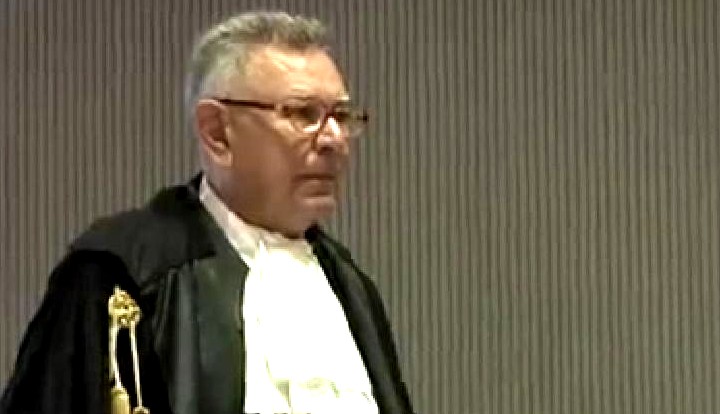
Saturday, January 18, 2014
False Claims In Bongiorno’s Summation: That The Wound “Proved” Sollecito’s Big Knife Was Not The One
Posted by Our Main Posters
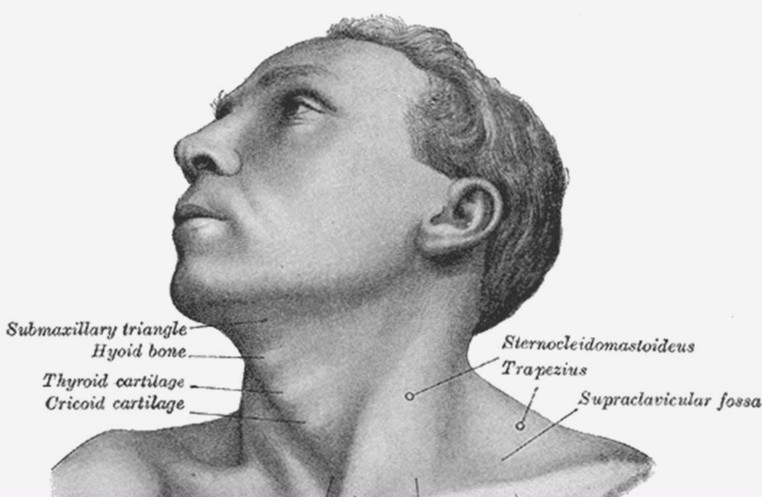
In defense summation on 9 January, nobody who really knows the case (such as Judge Nencini) would have bought many of Giulia Bongiorno’s outlandish arguments.
The post below this one illustrates how Bongiorno in about half her arguments tried to demonize and mischaracterize all of Perugia, as if somehow Perugia itself had become the real villain in forcing a rush to judgment and wrong conclusion. In fact Perugia took a huge hit from Meredith’s murder but has acted gracefully and competently ever since.
This post by several of us after discussion in Comments is the first of two on Bongiorno’s claims about the large knife. The second one will follow next week by Ergon.
There is no question in our minds but that this IS the murder weapon. It was proved convincingly by way of the DNA tests done by the Scientific Police and Carabinieri. Here we prove it by way of human physiology and the autopsy.
Waving two knives with a manic expression, Bongiorno claimed that the the large knife in evidence was far too large for the wound in question - and anyway, anyone intent on murder would have easily pushed the large knife right through so there was no intent of murder anyway. Bongiorno dismissed the possibility that hyoid bone could have somehow stopped the blade, prevented it from penetrating, as the bone is not resistant enough.
The surface location of the hyoid Bone is shown in the Illustration above; its front is only a few millimeters below the skin: The hyoid bone is loop-shaped like a C, open at the back; this Hyoid loop encloses part of the airway:
The hyoid bone curves around the upper airway at the base of the tongue, and is also called the tongue-bone or the lingual-bone. It is located between the mouth and the larynx; therefore during inhalation air passes through the hyoid loop before it passes through the larynx, and during exhalation air passes through the larynx before it passes through the hyoid loop.
The hyoid is an integral factor in the swallowing, breathing, and phonation mechanisms. If transected in such a way as to connect its part of the airway directly to the atmosphere, as it was in this case, swallowing, breathing, and phonation will be seriously impaired, as they were in this case.
The coexistent bleeding from the also-transected Right Superior Thyroid Artery accelerated Meredith’s death, more by the drowning-effect of inhalation of the blood into her lungs, than by the loss of circulating-blood alone.
Both the hyoid bone and the jawbone are mobile, which is why we can chew, swallow, talk, smile laugh, and sing, the way that we do, each of us in our own unique way.
The Massei Prosecution Reconstruction depicted the killers making cuts obliquely from behind.
The fatal cut started on the Left, but crossed the midline to the Right.
Both the Right Superior Thyroid Artery, and the nearby Hyoid Bone, were severed but from Massei, it is not precisely clear where the hyoid loop was severed, and it seems that the cut did not include the midline skin; The Florence Appellate Court will have access to the relevant records.
Here is why the hyoid could not have damaged any knife:
It is an old rule of materials-physics that a softer substance cannot even scratch a harder substance.
[To some people this may be counter to their intuition, so I have passed it by an eminent MIT physicist, and he agrees with me that the knife blade would not show signs of damage caused by the stabbing in this case.]
As pointed-out recently on TJMK, some confusion has arisen, caused by a quotation in the Massei Report, where on p371is written: “”¦a single blow was apparently halted by the jawbone”¦”
The statement that a blow could be “apparently halted” by Meredith’s jawbone is at best a figure of speech, and the quotes of Prof Cingolani on page 152 of the Massei Translation clearly indicate that any cause and effect inference from the phrase “apparently halted by” did not mean it was stopped-by the jawbone:
Prof Cingolani “did not, however, have elements of certainty to establish that the blade which had caused the wound 4 centimetres deep had stopped at the said depth because [it was] stopped by the jawbone.”
Maybe there is a Judicial, translational, or typographical glitch and “by” the jawbone should have been “at” the jawbone.
Skin is soft and bone is harder but there is no way that the knife striking the jawbone would halt the knife in this case, the jaw would just roll with the strike, depending on the angle of attack. [The force was not even enough to mark the jawbone itself!]
Furthermore, contact between the knife and jawbone or hyoid bone would not mark the knife because living-bone is softer than the knife.
When your pet gnaws on a non-living cow-bone, neither the bone nor your pet’s teeth can bend; both your pet’s teeth and the bone can be broken or dislocated, and the bone gets scratches on it because it is still softer than the teeth, but your pet’s teeth do not get scratches on them, because they are harder even than the non-living bone.
If someone is stabbed in the back with a kitchen carving knife, penetrating ribs on its way to the heart, the knife may have no scratches at all, nor show any signs of damage caused by that action.
[Look at your own kitchen carving knife. It probably has no marks caused by striking chicken thigh bones. It will have fine parallel scratches created in the manufacturing process.]
Any implication-in, or inference-from the statement quoted above that stabbing Meredith’s neck with enough force to penetrate the layers of her neck and then strike bone would have the effect of signs of damage to the knife-blade is a figment of an uninformed imagination.
The kitchen-knife, found in Sollecito’s apartment, with Meredith’s DNA on the blade and Knox’s DNA on the handle, is the weapon that killed Meredith.
Thursday, January 09, 2014
Appeal Session #8: Sollecito Attorneys Today Try To Show Where Police And Prosecution Went Wrong
Posted by Our Main Posters
[Giulia Bongiorno today; previously she collapsed in court after a guilty verdict in PM Andreotti’s case]
4. Tweets by Main Poster Machiavelli
148. Bongiorno relies on her “personal belief” as last argument. Bye bye!
147. Bongiorno offers the known arguments to maintain an early time of death. But (now) it’s late for me.
146. She had opened her arguments by quoting Sardinian judge and author Salvatore Satta, to me the choice suggest setting a desperate defence
145. Bongiorno built and waded through a complex building of argument employing extreme rhetoric devices, seemed to be in difficulty to me.
144. I had the impression Nencini was skeptical because not interested in the photos and videos, did not look at them attentively.
143. Details the “plausibility” of an intrusion through the window. Glass shards etc. arguments already seen.
142. “Cogne” is a famous Supreme Court ruling saying guilt can be found “by logical exclusion” on sheer “a contrario” arguments.
141. After brandishing two knifes before the court, talking about footprint, makes an emphatic comment “We are not in Cogne”
140. Bongiorno has ended the ninja-knife-rotating phase.
139. Now Bongiorno speaks about the bathmat bloody print. Says Sollecito’s big toes do not balance on the dystal phalanx. (old argument)
138. Bongiorno shows a picture with an envisioned “knife” (pocket knife belonging to Guede?) together with the print on the bed sheet
137. Nobody brings a “small blow with a big knife”.
136. Says: to paint a large wall you need a “great” (big) brush (paraphrase of a pun from old advertisement) but you don’t use half of a big knife
135. Bongiorno handles a big knife!
134. My opinion: just behind the hyoid bone base there is the cervical vertebra, very resistant, it was the vertebra that offered resistence.
133. When there is a will to kill, the blade penetrates entirely.
132. Bongiorno dismisses the possibility that hyoid bone could have somehow stopped the blade, prevent from penetrating, it’s not resistant enough
131. cites the report by Dr. Umani Ronchi, saying the knife is compatible, but the blade was not used entirely.
130. Last point about the knife is the kind of blade: 17 cm long, while the wound is 8 cm deep. It’s too big, not the murder weapon.
129. Says there isn’t a note indicating a quantifying was done.
128. B: alleges “many mysteries” about Stefanoni’s report. Says there is no DNA amount.
127. In Stefanoni’s report it looks like as if for all knife DNA traces RealTime had been used; and it’s not true. SAL say Fluorimeter used
126. Another point: Fluorimeter. Stefanoni said the PCR method would have been better.
125. Question how he could deduce the knife was compatible. Bongiorno’s points seem extremely weak.
124. Bongiorno attacks on Finzi’s word: quotes testimony when says “It’s the first knife I noticed” and “seemed compatible with wounds”.
123. Question is: possible that Sollecito kills and then puts the knife back in the drawer again? and that he uses a knife from his own kitchen?
122. How is it possible to touch the clasp, but not the rest of the bra? Then Bongiorno says, now let’s deal with the knife.
121. B: There are two questions: 1. why no traces of Knox and Sollecito (except the clasp); 2. why Sollecito’s DNA on clasp but not on bra?
120. No trace of Knox, how could they clean only their own traces…. etc
119. Attributes to Guede the “rest of the whole bra” plus the purse and sweater traces.
118. Emphasizes that other objects in the room instead are “stuffed with” traces of Guede
117. Also, there is the Y chromosome sequence but says it is not reliable for the same reasons.
116. Mentions further reasons for criticism: 1 low template DNA 2 no second amplification (maybe confuses with knife) 3 unknown biological origin
115. Talks about the expert claiming the DNA profile could be compatible with herself (actually wrong, the expert was a female had no Y profile)
114. Says they “found Sollecito’s profile among a 4- individuals mixed trace”.
113. Says Stefanoni applied a suspect-cantered interpretation method on a mixed trace with multiple possibilities. Old argument, weak.
112. The profiles mixed in the trace are more than two, thus DNA not usable. This point of arguments perceived as weak in room.
111. Says the bra clasp trace is a mixed trace.
110. Says mixed DNA profiles are like overlapping of spider webs. High probability of mistake which thread belongs to which one
109. Bongiorno bashes “inconsistence” of Stefanoni and maintains she mistook stutters for alleles.
108. Says if we apply Stefanoni’s criteria to her own findings, the clasp X trace is not attributable to Sollecito
107. Points out the C&V report where they object how Stefanoni considered the peaks departing from guidelines. Say C&V analyzed each peak.
106. Asks, rhetorically, about the way how Stefanoni read the DNA profiles.
105. Mentions the presence of other DNA contributors on the bra clasp.
104. The usual magnified photo showing the dirt on police glove.
103. Calls these “touchings within a contaminated environment”.
102. Says clasp fabric was touched 14 times with one glove, then touched by other gloves.
101. Says the clasp was moved, found under the carpet, originally was under the pillow.
100. B. shows pictures about the object moved around in the room, carpet under table, cloths on bed etc.
99. Complains about the searches made by Napoleoni’s team on Nov 6 & 7 and objects Prosecutor Crini is wrong when says there was only one collection.
98. Says the bra clasp has a “materialization” on the night of Nov. 3 but was not collected because they forgot to place a tag letter.
97. Emphasizes that the forgotten bra clasp has become the pivotal piece of evidence against Sollecito.
96. Says about 20 people have manipulated objects on the crime scene.
95. Emphatically lists the names of all officers who entered the house.
94. Calls the DNA collection “mother of all mistakes” in this case.
93. Items should be touched only once. Stefanoni told the police to not move the items.
92. Disposable gloves must be used, new ones for each item. Quotes Intini saying impossible avoid contamination of crime scene.
91. Says the collection of DNA is fundamental. The collection must be early.
90. Says Cassazione didn’t read the C&V report carefully. Says not all DNA is usable. Stutter peaks should not be considered.
89. Now Bongiorno is talking about DNA.
88. Basically Bongiorno defined evidence against Sollecito as only three points: (1) late call to police (2) knife with Meredith DNA (3) shoe/foot print
87. When B was describing Donnino as a psychic there were people laughing in the room. Her arguments became more effective after the first hour
86. Bongiorno’s series of “half pieces of evidence” seemed like empty rhetoric. The use of video seemed somehow better.
85. The late clock theory is to maintain that Sollecito did not call the 112 after police arrival.
84. The defence theory is the clock was slow, not fast.
83. Bongiorno showed video of alleged Police arrival recorded by parking CCTV, explains defence theory.
82. One thing the SC and PG doesn’t know is about what she calls the “real” timing of Sollecito phone call to 112, as “proven” by defence.
81. One mistake at the Guede trial was about the shoe print attribution.
80. Explains that the subsequent trials of Guede got many facts wrong because they ignored subsequent development.
79. Said Cassazione did not assess the DNA judge appointed report and that testimonies and defence reports were missing.
78. Bongiorno explained the “reverse funnel effect” by which superior court is unaware about additional findings.
77. Sollecito - said B.- would not intervene to help a guy he didn’t know, and not even to protect Knox whom he had been knowing 9 days
76. If cleaning issues were a casus belli among the girls, why would Sollecito enter a raw to defend Rudy?
75. But B. objected this is still only half a motive, because Sollecito had nothing to do with it.
74. Apparently B. acknowledged Laura Masotho testified about problems with Knox cleaning habits. PG thinks means problems living together
73. Talked about the “second motive” calling it “improper use of toilet”
72. Said Guede was a drop-out, the opposite pro-black prejudice is also unacceptable.
71. Urged the court to not assume as individual is a weak and discriminated subject just because a black man
70. The sex theme party is “surreal” Bongiorno said.
69. Said Knox-Sollecito was a tender relation, they enjoyed romantic kisses, were not bored 50y old seeking hot emotions
68. The motive (sex) for the “festino” (little party) was smartly dropped by the PG
67. The motive “accepted” (by courts) was a sex party, but the PG does not believe it.
66. Said motive was considered almost as an optional; said prosecutor general changed the motive because had no choice.
65. Said that Kokomani was offered 10k euros for his testimony.
64. Bongiorno criticized media trials and said witnesses must be “virgins”, otherwise the Aladdin lamp taints the trial
63. Said the Aladdin lamp effect is generated by media trial, in which a “monster” is chased by public opinion
62. Bongiorno talked about “Aladdin lamp effect”: detectives wishes which materialize.
61. Said Mr. Kokomani “materialized” when investigators had desperate need to prove Sollecito and Guede knew each other
60. Bongiorno talked at length to substantiate a scenario of Rudy as a burglar who was used to knives.
59. Rudi would physically approach girls and try to kiss them when he was drunk, B. Said
58. Said Guede harassed girls and Sollecito did not know him.
57. Said when the investigators found Rudi, they could not abandon the first suspects, because it’s difficult like leaving your first love mate
56. Said there is no evidence the three people hung out together.
55. Spoke about Guede’s alleged lifestyle.
54. Said that was the nightmare of Perugia, the intruder nightmare.
53. Said the room is flooded with evidence of Guede all over the place.
52. Bongiorno criticized factual points addressed by Cassazione, mentions wrong early experts reports.
51. She described Knox as almost unconscious, buckled because she trusted Sollecito, thinks the police and Raff say so, must be true.
50. When Knox learns about bring accused by Sollecito she had a collapse while the “psychic” was saying “remember!”
49. Amanda, B. says, did not understand why Raffaele accused her.
48. Bongiorno urged judges to get out from codes and get into the hearts of the two young accused.
47. Said if you believe to the Memoriale, where does it mention Raffaele?
46. The recording of Knox’s conversation with her mother “proves she was still in delusional state”
45. Bongiorno said even if you believe her confession, she doesn’t mention Sollecito.
44. Said Amanda was “induced into raving” by “psychic” Donnino.
43. Explained the three types of false confessions.
42. Said Knox did not commit a crime but convinced herself she did. B. mentions the internalized false confession type.
41. Talked about police mistake on the “see you later” message
40. Said trial was determined by the fact Donnino fid not understand English well, thus sidetracked Knox
39. But, said, if we look at Knox, it’s not her sidetracking investigation, but rather investigators sidetracking her.
38. Said the Cassazione suggests Raffaele lied about timings of call to carabinieri, accused him of sidetracking because he lied.
37. One of the elements against Sollecito is the accusation of having sidetracked investigation. Said it was false.
36. Called Donnino a “medium” ( means .“psychic”)
35. Said Donnino acted as mediator not interpreter
34. Said Donnino altered Knox’s statements.
33. Bongiorno criticized interpreter Anna Donnino.
32. Sollecito’s aunts wiretapped as if they were the most dangerous murderers.
31. Talking about insults [to Sollecito’s family members], Bongiorno cries.
30. Says they also insulted Knox
29. Amanda was caught by anxious urge to answer. She became uncomfortable because police asked too much, altering her serenity
28. Bongiorno says if the court doesn’t want to read the whole interrogation (of Dec 17) they should at least read the memoriale
27. Nencini interrupts Bongiorno: how could I read all interrogations entirely, when Supreme Court prevents me from doing so?
26. Calunnia doesn’t mean there is evidence of murder.
25. Only half of the house of murder investigated. An interrogation considered evidence of Knox’s calunnia.
24. Says Raffaele was “halfed”, against him only half pieces of circum evidence: half shoeprint’ knife compatible only if you consider half of blade
23. [My] Impression that Bongiorno’s start of defence speech was rather weak. Too much over the top, reveals weakness.
22. shoeprint attributed in advance because boyfriend of Amanda. Speaks about “admission” by Rinaldi-Boemis
21. She is tired of Raffaele reduced by “half”, a half character seen as a reflection of Amanda
20. Says Knox was the main character, she was so before the trial.
19. Speaks about “creativity” before the trial. Speaks at length about the bloody shoeprint.
18. Bongiorno: Raf thinks he was put in jail because of wrong print. But not true: it’s because he was Amanda’s boyfriend.
17. Shows pictures of Vinci’s analysis of pillowcase prints.
16. Bongiorno also said other reason for suspicion was that Knox had the keys. The motive chosen was “ideal” not real.
15. Most active and free women are seen as more suspicious.
14. Bongiorno: women are suspected because of today women’s empowerment movements.
13. Started from a sex party gone awry theory. They asked themselves: who could take part to such party? A 20y American sexy girl.
12. Investigators followed Lombrosian criteria (inspired by Cesar Lombroso theories)
11. Says: it was Perugia population who chose the less disquieting scenario, and the investigation was based on “less alarming motive” choice
10. Bongiorno: authority had to chose between a “tranquillizing” student motive and a dangerous serial killer “worrying” scenario.
9. Why did they accuse and put them in jail so early? They didn’t even have the knife.
8. Complains Sollecito doesn’t find a job because has a murderer’s face
7. Bongiorno focuses on the “early bias” against accused, since four days after finding of body.
6. Bongiorno speech hinges around the persecution of defendants. Describes her fear, fleeing from Perugia. Says people didn’t know trial papers
5. Bongiorno was shocked by the angry mob before Perugia courtroom [after Hellmann verdict]
4. Bongiorno: a bloodthirsty mob chasing defendants
3. Reads book snippet about French revolution, describe a horde of sanculots and armed citizens
2. Bongiorno quotes Italian author Satta. Talks about “chase” of the two accused
1. Sollecito is in courtroom
3. Tweets By Freelance Andrea Vogt
15. Leaving court, raffaele sollecito and father expressed satisfaction w/closing args. Perugia attorny Maori to close at next hearing, Jan.20.
14. Bongiorno closing finish: Turn amanda off. Acquit them both, but judge Raffaele Sollecito for who he is, not for half-truths against him.
13. A loud emergency evacuation request was just broadcast in Florence court, but the presiding judge says hearing will continue.
12. Once you’ve seen Bongiorno wave two knives in front of an Italian jury, most other court reporting one has done seems rather dull.
11. Bongiorno holds up butcher knife like the one in evidence to jury: “This knife is too big. It is not the murder weapon.”
10. New amanda knox court schedule: [prosecution] rebuttals Jan 20, with verdict on Jan 30.
9. Florence amanda knox appeal: court breaks until 14:15. Unclear if sollecito defense will finish today or spill over.
8. Bongiorno: Sollecito is not a puppy dog. He may have brushed her hair, cleaned her ears, but he would not kill for love of amanda knox.
7. Bongiorno and judge exchange laughs over “unca nunca” the eskimo kiss. “I’m over 50,” he said “I need an explainer.”
6. Bongiorno on witnesses found by local journos: “This trial had an Aladdin’s Lamp. Every time cops needed a witness, one materialized.”
5. Bongiorno defending Amanda Knox, while at the same time clearly separating Sollecito’s position from that of Knox.
4. Bongiorno reading amanda’s statement: “If you believe this is a confession, where’s Raffaele? He is never, never, never mentioned.”
3. Bongiorno just read wiretapped comms of Perugia cops Napoleoni and Zugarini insulting Sollecito’s family.
2. Bongiorno: “Amanda amanda amanda amanda amanda . . . And raffaele? Basta with sollecito always being considered Knox’s other half.”
1. Bongiorno: Perugia declared “case closed” 4 days after Kercher murder, w/no murder weapon and a motive intended to calm public fear.
2. Tweets by La Nazione Court Reporter
66. Bongiorno: “In conclusion Amanda and Raffaele are innocent “
65. Bongiorno: “I am convinced that the murderess is Rudy who has already been convicted “
64. Bongiorno “The attack on Meredith takes place at 21.10 when Raffaele ‘s at home “
63. Bongiorno: “Guede had already entered into three more apartments in the holiday periods “
62. Warning to evacuate the court. But it is only a test
61. Bongiorno: “Is it possible that the glass has been broken from the outside “
60. Bongiorno: “The absence of traces of mud on the wall is because in those days it was not raining”
59. Bongiorno: “Plausible hypothesis that someone has entered the window “
58. Bongiorno: “You can not get to a liability via just exclusion . We are not in Cogne “
57. Bongiorno: “Against Sollecito, no real clue “
56. Bongiorno: “The footprint on the rug is not Sollecito, his foot does not match “
55. Bongiorno: “The murder weapon is a boxcutter knife with 8 inches “
54. Bongiorno: “The knife found at Sollecito’s house is not the murder weapon “
53. Bongiorno: “Depth wounds on the victim is not compatible with the size knife “
52. Bongiorno addresses the issue of the knife
51. Bongiorno: “Absurd to think that Amanda and Raffaele have deleted only their tracks
50. Bongiorno: “How can you think that there is only a trace of Sollecito on the clasp ? “
49. Bongiorno: “On the scene of the crime no trace of Amanda, but only Rudy Guede “
48. Bongiorno: “On the hook there are traces of four profiles of DNA “
47. Bongiorno: “That hook looks like it was taken from a landfill “
46. Bongiorno: “The hook was crushed during the inspections “
45. Bongiorno: “The bra clasp was moved “
44. Bongiorno: “The hook of the bra is not at the first inspection reperted “
43. Bongiorno: “About 20 people came to the house between the two surveys
42. Bongiorno: “The finding attributed to Sollecito jumps out only in the second survey “
41. Bongiorno: “It is not true that no one came on the scene between the two surveys “
40. Bongiorno addresses the issue of DNA on the bra clasp of the victim
39. After the break the summation of lawyer Giulia Bongiorno starts again.
38. The hearing is adjourned for an hour
37. Bongiorno ( Sollecito defense ) : ” Rudy Guede did not want to respond to our defense [at Hellmann appeal] “
36. Bongiorno ( Sollecito defense ) : “No survey has ever spoken of the presence of more subjects [than one]”
35. Bongiorno ( Sollecito’s defense ) : “It was Raffaele who raised the alarm”
34. Bongiorno ( Sollecito’s defense ) : “And we demonstrated that Sollicito called 112 before the police arrived “33. Bongiorno ( Sollecito’s defense ) : ” If the motive are disputes on the hygiene of the house, where was Raffaele ? “
32. Bongiorno ( Sollecito’s defense ) : ” The indictment identifies the changes to driving and excessive use of water”
31. Bongiorno ( Sollecito’s defense ) : “the relationship of Amanda with Raffaele was tender, kissed like Eskimos “
30. Bongiorno ( Sollecito’s defense ) : ” Guede unwelcome, if there had been a party he would not have asked “
29. Bongiorno ( Sollecito’s defense ) : ” In this process, the motive is considered an option, but it is not “
28. Bongiorno ( Sollecito’s defense ) : ” Absurd to think that Sollecito and Guede became known that night “
27. Bongiorno ( Sollecito’s defense ) : ” The witness who spoke of the friendship between Raffaele and Rudy Guede was denied “
26. Bongiorno ( Sollecito’s defense ) : ” Amanda Raffaele prosecuted even when they told [the truth?] “
25. Bongiorno ( Sollecito ) : ” Absurd Amanda putting herself at the scene of the crime”
24. Bongiorno ( Sollecito’s defense ) : ” Amanda never pulled into the dance Raffaele “
23. Bongiorno ( Sollecito’s defense ) : ” Amanda wassidetracked , it is she who is derailed “
22. According to the lawyer Bongiorno interpreter on night of interrogation of Amanda did not just translate
21. Bongiorno ( Sollecito’s defense ) : ” The interpreter admiited to having helped in the court”
20. Bongiorno ( Sollecito ) : ” The interpreter confirms that she has done so in trial court as mediums in the interrogation “
19. Bongiorno ( Sollecito ) : ” Amanda says that the interpreter invited her to remember”
18. Bongiorno ( Sollecito ) : “There are black pages in this investigation “
17. Bongiorno ( Sollecito ) : ” According to the documents offenses of aunts of Sollecito by those who listened to the wiretaps “
16. Bongiorno ( Sollecito ) : ” Amanda and nighttime interrogations without a lawyer “
15. Bongiorno ( Sollecito ) : ” The identikit identfication of the killer as Amanda proceded and generates slander “
14. Bongiorno ( Sollecito ) : “On the footprints attributed to Sollecito there was a big mistake “
13, Bongiorno ( Sollecito ) shows some slides in the court on the footprints at the crime scene
12. Bongiorno ( Sollecito ) : ” Raffaele is not the only other half of Amanda . Just a quick passion “
11. Bongiorno ( Sollecito ) : ” Amanda was the stronger of the pair with Sollecito “
10. Bongiorno ( Sollecito ) : ” Amanda was leading [the two] before becoming involved in the legal process”
9. Bongiorno : ” Starting from the motive of the game , Amanda seemed like the perfect one guilty “
8. Bongiorno ( Sollecito ) : ” They have chosen an ideal motive and then followed the criteria Lombroso “
7. Bongiorno ( Sollecito ) : ” A creation was the motive to reduce fear in Perugia , a party gone wrong “
6. Bongiorno ( Sollecito’s defense ) : ” In record time, the case was declared closed almost immediately , after four days ‘
5. Bongiorno ( Sollecito ) : “Against Amanda and Raffaele horde of red herrings”
4. Bongiorno ( Sollecito ) : “Sollecito was branded a murderess when there was no evidence “
3. Bongiorno ( Sollecito ) : ” Raffaele and Amanda have become the symbol of depravity ‘
2. Start of the argument of the lawyer Giulia Bongiorno , Sollecito’s defense
1. Start of the hearing. Today it’s up to the lawyers Raffaele Sollecito
1. Overview post Wednesday by Andrea Vogt
Website of Andrea Vogt
Defense lawyers Giulia Bongiorno and Luca Maori will give closing arguments on behalf of Raffaele Sollecito Thursday in Florence, starting at 10 a.m.While Amanda Knox has been the main focus of attention for most of the U.S. media covering this case, Sollecito has increasingly become the object of gossip in the Italian press, with tabloid magazines like Oggi regularly publishing snaps of him on vacation this winter in Santo Domingo.
More recently several local newspapers in Veneto published speculation about a new woman friend and fellow University of Verona student with whom he had been hanging out with over the holidays in a small town near Treviso. Amore or amica? He’s not about to tell.
At his last spontaneous declaration before the court Sollecito complained about his lack of privacy and pleaded with the jury to give him his life back. Tomorrow his lawyers will make the case for his innocence formally to the judge and jury. Expect fireworks from Bongiorno, famous for her captivating oratory and no stranger to high-profile cases “” having cut her teeth as defense lawyer for former Italian prime minister Giulio Andreotti.
ol
Tuesday, December 17, 2013
Appeal Session #7: The Day For Knox And Sollecito Attorneys To Show Where Prosecution Went Wrong
Posted by Our Main Posters
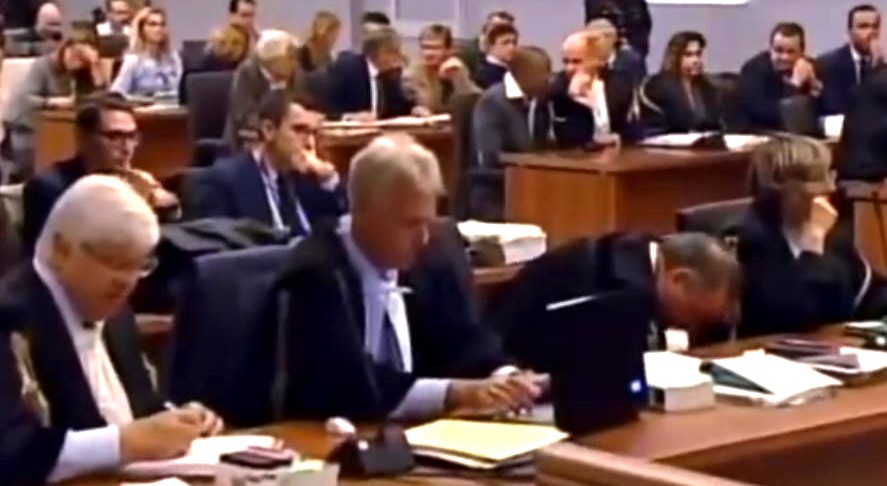
[Above and below: images from previous sessions, here till today’s crop appears]
Long Form Reports
The court hearing reserved for Knox’s appeal defense began with the reading of an email from Amanda, reported here in the Messaggero and then widely picked up in the English-language press, claiming her innocence and explaining why she was afraid to return to Italy. The email was the only “new” aspect introduced Tuesday so made all the headlines, but at the end of the day it occupied just a small fraction of the day’s arguments.
Several Italian court observers considered the email a considerable “own goal,” having witnessed the presiding judge raise his eyebrows in obvious annoyance at having to himself read aloud an email from Knox, who requested an appeal in his courtroom, but is refusing to attend it, for reasons she detailed. “Those who want to speak at the trial should come to the trial,” he said. He also declined to consider the letter a spontaneous declaration because, he said, he could not ascertain if she was the true author of the letter. “I’ve never seen her. I do not know her,” he said.
After the email, Knox’s Perugian lawyer Luciano Ghirga made his closing arguments, followed by Carlo Dalla Vedova of Rome. Most of the discussion focused on two aspects of the case they felt are fundamentally lacking: motive and murder weapon. Below are short quotes/snippets translated quickly during court. To read the Kercher family lawyer’s arguments, scroll down to yesterday’s notes.
[Report continues on The Freelance Desk with good summaries of arguments made by Ghirga and Della Vedova]
3. Tweets from La Nazione
66. Meredith process , the hearing ends. The next hearing will be on January 9 [Sollecito team]
65. Lawyer Dalla Vedova (Knox) : ” Amanda Knox is shown to have worshipped [Meredith]”
64. Lawyer Dalla Vedova (Knox) : “There is a shortage of proof”
63. Lawyer Dalla Vedova (Knox) : “There is no evidence, with doubts you have to acquit Amanda Knox”
62. Lawyer Dalla Vedova (Knox) : “On the motive the prosecutor did the same as the Costa Concordia at Giglio”
61. Lawyer Dalla Vedova (Knox) : “Room too small for the participation of more people in the crime”
60. Lawyer Dalla Vedova (Knox) : “The victim was attacked from the front, not from behind”
59. Lawyer Dalla Vedova (Knox) : “For Amanda and Raffaele, Rudy Guede was a stranger”
58. Lawyer Dalla Vedova (Knox) : “The bra clasp of Meredith is not a genuine artifact”
57. Lawyer Dalla Vedova (Knox) : “The bra clasp November 2nd was white, but 40 days after gray”
56. Lawyer Dalla Vedova (Knox) : “Amanda knew the cut was throat because she was told by a policeman “
55. Lawyer Dalla Vedova (Knox) : “Absurd that there are missing only traces of Amanda and Raffaele “
54.Lawyer Dalla Vedova (Knox) : “The alleged footprint of female shoe on the pillow: pillowcase was folded over.”
53. Lawyer Dalla Vedova (Knox) : “The broken glass from the window shows the easiest way to enter the house “
52. Lawyer Dalla Vedova (Knox) : “War between consultants is like “The War of the Roses” where everyone will hate “
51. Lawyer Dalla Vedova (Knox) : “Unable for Amanda and Raffaele to commit the crime in 50 minutes “
50. Lawyer Dalla Vedova (Knox) : “The mother of Meredith says she and Amanda were friends “
49. Lawyer Dalla Vedova (Knox) : “Guede never says that Amanda was in the house, even outside the interrogations”
48. Lawyer Dalla Vedova (Knox) : “Guede never talks about Amanda “
47.Lawyer Dalla Vedova (Knox) : ” Guede in his chats after the murder told a friend that Amanda had nothing to do with it”
46. Lawyer Dalla Vedova (Knox) : “There are traces only of Rudy Guede at the crime scene “
45. Lawyer Dalla Vedova (Knox) : “The witness Curatolo either is unreliable or is our alibi. Decide for yourself “
44. Lawyer Dalla Vedova (Knox) : “Do not trust the testimony of the witness Quintavalle “
43. Lawyer Dalla Vedova (Knox): “Amanda did not call into question Lumumba to sidetrack the investigation “
42. Lawyer Dalla Vedova (Knox): “The alibi of Amanda is of the same type as her roommates ”
41. Lawyer Dalla Vedova (Knox): “The alibi of Amanda is accurate and unchanged in her deposition ”
40. Meredith appeal: the argument of Carlo Dalla Vedova, defender of Amanda Knox, resumes.
39. Meredith appeal: Judge orders one-hour lunch break
38. President Nencini asks if there are certificates for the AIDS tests done on Amanda, but there are none
37. Lawyer Dalla Vedova (Knox): “It was said of Amanda in prison that she had AIDS, but it turned out an error ”
36. Lawyer Dalla Vedova (Knox): “From the conversations in prison Amanda does not show anything, the sum of zeros ”
35. Lawyer Dalla Vedova (Knox): “In 30 hours of interviews with parents in prison Amanda never was heard [incriminating herself]”
34. Lawyer Dalla Vedova (Knox): “It was immediately admited, the mistake by the investigators”
33. Lawyer Dalla Vedova (Knox): “The footprint of Guede on the pillow right now is the signature of the crime”
32. Lawyer Dalla Vedova (Knox): “Lumumba was not to be charged, he confirmed his alibi”.
31. Lawyer Dalla Vedova (Knox): “There has been judicial harassment against [my client]”
30. Lawyer Dalla Vedova (Knox): “Prosecution and plaintiff leverage statements of Amanda unusable ”
29. Lawyer Dalla Vedova (Knox): “The declarations of Amanda between 5 and 6 November are unusable ”
28. Lawyer Dalla Vedova (Knox): “Absurd that Amanda is joining the attack on a friend ”
27. Lawyer Dalla Vedova (Knox): “Changing motive is constantly an element of weakness of the prosecution ”
26. Lawyer Dalla Vedova: “Add up all the clues , the sum of zero is always zero ”
25. Lawyer Dalla Vedova: “Without connections between clues and evidences the value is zero ”
24. Lawyer Dalla Vedova: “In this process there is no evidence ”
23. Lawyer Dalla Vedova: “A murder without a motive is fallacious ”
22. Lawyer Dalla Vedova: “Absurd that the knife used for the murder was brought home ”
21. Lawyer Dalla Vedova: “Imaginative reconstruction of the prosecution ”
20. Lawyer Dalla Vedova: “This story has been in the headlines for months ”
19. Lawyer Dalla Vedova (Knox): “Meredith killed in this manner is a defeat for all ”
18. The closing argument of Lawyer Carlo Dalla Vedova begins (Knox defense).
17. Meredith appeal: the closing argument of the Lawyer Ghirga (Knox ) ends.
16. Lawyer Ghirga (Knox ) : “Amanda Knox was not present at the crime scene ”
15. Lawyer Ghirga (Knox ): “The judgment of Justice is the acquittal of Amanda
14. Lawyer Ghirga (Knox ): “The witness Curatolo is unreliable ”
13. Lawyer Ghirga (Knox ): “We challenged from the outset the murder weapon ”
12. Lawyer Ghirga (Knox ): “On the blade of the knife there is no blood and no trace of Meredith.”
11. Lawyer Ghirga (Knox ): “The expertise that revealed traces of Meredith on the knife is not trusted “
10. Lawyer Ghirga (Knox ): “The knife found at Sollecito’s house is not the murder weapon “
9. The closing argument of Luciano Ghirga defender Amanda Knox begins.
8. Amanda to the court: ” I am innocent , put an end to this enormous injustice ”
7. Amanda : “I’m not the monster he has been portrayed in recent years ”
6. Amanda: ” I did not know Rudy Guede ”
5. Amanda: “I’m not a killer , the prosecution and the civil parties are wrong , they want a conviction without proof ”
4. Amanda: ” Meredith and I have always been friends , we never quarreled ”
3. Amanda: “I have been subjected to illegal interrogation , I made a false confession extorted”
2. Amanda: “I have not killed , raped , robbed , I was not at the scene of the crime”
1. The email of Amanda : “I’m innocent , but I am not in court because I’m afraid”
2. Tweets from Freelance Andrea Vogt
3. Carlo dalla Vedova to #amandaknox appeal jury: If there is no murder motive, you must acquit.
2. Carlo dalla Vedova: We know #amandaknox is innocent. As time passes we’re even more tranquil.There are many more doubts than certainties.
1. In Florence, amanda knox lawyer holds up large knife to jury: “Starch was on the knife. It was not cleaned. It was in domestic use.”
1. Email from Amanda Knox
Court of Appeals of Florence section II Assise Proc. Pen, 11113
Letter sent to attorneys Carlo Dalla Vedova and Luciano Ghirga via email Seattle, 15 December 2013
Attn: Honorable Court of Appeals of Florence
I have no doubt that my lawyers have explained and demonstrated the important facts of this case that prove my innocence and discredit the unjustified accusations of the prosecution and civil parties. I seek not to supplant their work; rather, because I am not present to take part in this current phase of the judicial process, I feel compelled to share my own perspective as a six—year-long defendant and victim of injustice.
The Court has access to my previous declarations and I trust will review them before coming to a verdict. I must repeat: I am innocent.
I am not a murderer. I am not a rapist. I am not a thief or a plotter or an instigator. I did not kill Meredith or take part in her murder or have any prior or special knowledge of what occurred that night. I was not there and had nothing to do with it.
I am not present in the courtroom because I am afraid. I am afraid that the prosecution’s vehemence will leave an impression on you, that their smoke and mirrors will blind you. I’m afraid of the universal problem of wrongful conviction. This is not for lack of faith in your powers of discernment, but because the prosecution has succeeded before in convincing a perfectly sound court of concerned and discerning adults to convict innocent people-Rafael and me.
My life being on the line and having with others already suffered too much, I’ve attentively followed this process and gleaned the following facts that have emerged from the development of this case that I beg you not to dismiss when making your judgment:
No physical evidence places me in Meredith ‘s bedroom, the scene of the crime, because I was not there and didn’t take part in the crime.
Meredith’s murderer left ample evidence of his presence in the brutal scenario: handprints, footprints, shoe prints in Meredith’s blood; DNA in her purse, on her clothing, in her body.
No evidence places me in the same brutal scenario. The prosecution has failed to explain how I could have participated in the aggression and murder—to have been the one to fatally wound Meredith—without leaving any genetic trace of myself. That is because it is impossible. It is impossible to identify and destroy all genetic traces of myself in a crime
scene and retain all genetic traces of another individual. Either I was there, or I wasn’t. The analysis of the crime scene answers this question: I wasn’t there.
My interrogation was illegal and produced a false “confession” that demonstrated my non-knowledge of the crime- The subsequent memoriali, for which I was wrongfully found guilty of slander, did not further accuse but rather recanted that false “confession.” Just as I testified to the prosecutor in prison and to my family members in prison when our conversations were being recorded without my knowledge.
My behavior after the discovery of the murder indicates my innocence. I did not flee Italy when I had the chance. I stayed in Perugia and was at the police’s beck and call for over 50hours in four days, convinced that I could help them find the murderer. I never thought or imagined that they would have used my openness and trust to fuel their suspicions. I did not hide myself or my feelings: when I needed comfort, Rafael embraced me; when I was sad and scared, I cried; when I was angry, I swore and made insensitive remarks; when I was shocked, I paced or sat in silence; when I was trying to help, I answered questions, consoled Meredith’s friends and tried to keep a positive attitude.
Upon entering the questura I had no understanding of my legal position. Twenty—years old and alone in a foreign country, I was innocent and never expected to be suspected and subjugated to torture. I was interrogated as a suspect, but told I was a witness. I was questioned for a prolonged period in the middle of the night and in Italian, a language I barely knew. I was denied legal counsel- The Court of Cassation deemed the interrogation and the statements produced from it illegal. I was lied to, yelled at, threatened, slapped twice on the back of the head. I was told I had witnessed the murder and was suffering from amnesia. I was told that if I didn’t succeed in remembering what happened to Meredith that night I would never see my family again. I was browbeaten into confusion and despair. When you berate, intimidate, lie to, threaten, confuse, and coerce someone in believing they are wrong, you are not going to find the truth.
The police coerced me into signing a false “confession” that was without sense and should never have been considered a legitimate investigative lead. In this fragmentary and confused statement the police identified Patrick Lumumba as the murderer because we had exchanged text messages, the meaning of which the police wrongfully interpreted (‘Civediamo piu tardi. Buona serata’). The statement lacked a clear sequence of events, corroboration with any physical evidence, and fundamental information like: how and why the murder took place, if anyone else was present or involved, what happened afterward—it supplied partial, contradictory information and as the investigators would discover a little later, when Patrick Lumumba’s defense lawyer produced proof of him incontestable alibi, it was obviously inaccurate and unreliable. I simply didn’t know what they were demanding me to know. After over 50 hours of questioning over four days, I was mentally exhausted and I was confused.
This coerced and illegitimate statement was used by the police to arrest and detain a clearly innocent man with an iron-clad alibi with whom I had a friendly professional relationship. This coerced and illegitimate statement was used to convict me of slander. The prosecution and civil parties would have you believe that this coerced and illegitimate statement is proof of my involvement in the murder. They are accusing and blaming me, a result of their own overreaching.
Experience, case studies, and the law recognize that one may be coerced into giving a false"confession” because of torture.
This is a universal problem. According to the National Registry of Exoneration, in the United States 78% of wrongful murder convictions that are eventually overturned because of exonerating forensic evidence involved false “confessions.” Almost 8 in 10 wrongfully convicted persons were coerced by police into implicating themselves and others in murder. I am not alone. And exonerating forensic evidence is often as simple as no trace of the wrongfully convicted person at the scene of the crime, but rather the genetic and forensic traces of a different guilty party—just like every piece of forensic evidence identifies not me, but Rudy Guide.
In the brief time Meredith and I were roommates and friends we never fought.
Meredith was my friend. She was kind to me, helpful, generous, fun. She never criticized me. She never gave me so much as a dirty look.
But the prosecution claims that a rift was created between Meredith and I because of cleanliness. This is a distortion of the facts. Please refer to the testimonies of my housemaster and Meredith’s British friends. None of them ever witnessed or heard about Meredith and I fighting, arguing, disliking each other. None of them ever claimed Meredith was a confrontational clean-freak, or I a confrontational slob. Laura Masotho testified that both Meredith and I only occasionally cleaned, whereas she and Filomena Romanelli were more concerned with cleanliness. Meredith’s British friends testified that Meredith had once told them that she felt a little uncomfortable about finding the right words to kindly talk tome, her new roommate, about cleanliness in the bathroom we shared. The prosecution would have you believe this is motivation for murder. But this is a terrifying distortion of the facts.
I did not carry around Rafael’s kitchen knife.This claim by the prosecution, crucial to their theory, is uncorroborated by any physical evidence or witness testimony. I didn’t fear the streets of Perugia and didn’t need to carry around with me a large, cumbersome weapon which would have ripped my cloth book bag to shreds. My book bag showed no signs of having carried a bloody weapon. The claim that he would have insisted I carry a large chef’s knife is not just senseless, but a disturbing indication of how willing the prosecution is to defy objectivity and reason in order to sustain a mistaken and disproven theory.
It is yet another piece of invented “evidence”, another circumstance of theory fabricated to order, because having discovered nothing else, the prosecution could only invent.
I had no Contact with Rudy Guide.
Like many youth in Perugia, I had once crossed paths with Rudy Guide. He played basketball with the young men who lived in the apartment below us. Meredith and I had been introduced to him together. Perhaps I had seen him amongst the swarms of students
who crowded the Perugian streets and pubs in the evenings, but that was it. We didn’t have each other’s phone number, we didn’t meet in private, we weren’t acquaintances. I never bought drugs from Rudy Guide or anyone else. The phone records show no connection. There are no witnesses who place us together. The prosecution claims I convinced Rudy Guide to commit rape and murder, completely ignoring the fact that we didn’t even speak the same language. Once again, the prosecution is relying upon a disturbing and unacceptable pattern of distortion of the objective evidence.
I am not a psychopath.
There is no short list to the malicious and unfounded slanders I have suffered over the course of this legal process. In trial I have been called no less than:
“Conniving; manipulating; man—eater; narcissist; enchantress; duplicitous; adulterer; drug addict; an explosive mix of drugs, sex, and alcohol; dirty; witch; murderer; slanderer; demon; depraved; imposter; promiscuous; succubus; evil; dead inside; pervert; dissolute; a wolf in sheep’s clothing; rapist; thief; reeking of sex; Judas; she-devil;
I have never demonstrated anti-social, aggressive, violent, or behavior. I am not addicted to sex or drugs. Upon my arrest I was tested for drugs and the results were negative. I am not a split-personality One does not adopt behavior spontaneously.
This is a fantasy. This is uncorroborated by any objective evidence or testimony. The prosecution and civil parties created and pursued this character assassination because they have nothing else to show you. They have neither proof, nor logic, nor the facts on their side. They only have their slanders against me, their personal opinions about me. They want you to think I’m a monster because it is easy to condemn a monster. It is easy to dismiss a monster’s defense as deception. But the prosecution and civil parties are both severely mistaken and wrong. They have condemned me without proof of guilt, and they seek to convince you to condemn me without proof of guilt.
If the prosecution truly had a case against me, there would be no need for these theatrics. There would be no need for smoke and mirrors to distract you from the lack of physical evidence against me. But because no evidence exists that proves my guilt, the prosecution would seek to deceive you with these impassioned, but completely inaccurate and unjustified pronouncements. Because I am not a murderer, they would seek to mislead you into convicting me by charging your emotions, by painting me not as an innocent until proven guilty, but as a monster.
The prosecution and civil parties are committing injustices against me because they cannot bring themselves to admit, even to themselves, that they’ve made a terrible mistake.
The Court has seen that the prosecution and civil parties will not hear criticism of their mistakes. Not by the experts of the defense, nor by the experts of the Court.
The Court has seen that the prosecution jumped to conclusions at the very start of their investigation: they interrogated and arrested innocent people and claimed “Case Closed"before any evidence could be analyzed, before bothering to check alibis.
The prosecutor and investigators were under tremendous pressure to solve the mystery of what happened to Meredith as soon as possible. The local and International media was breathing down the necks of these detectives. Their reputations and careers were to be made or broken. In their haste, they made mistakes. Under pressure, they admitted to as few mistakes as possible and committed themselves to a theory founded upon mistakes.
Had they not jumped to conclusions based on nothing but their personal and highly subjective feeling, they would have discovered definitive and undeniable evidence of not Patrick Lumumba, not Rafael Sollecito, not Amanda Knox, but of Rudy Guide. We would not be here over six years later debating inconclusive and unreliable “clues.” We would have been spared the cost, anguish and suffering, not only of Raffaele’s and my family, but especially of Meredith’s family as well.
The prosecution’s accusations are unworthy of judicial or public confidence. In over six years they have failed to provide a consistent, evidence-driven, corroborated theory of the crime, but would nevertheless argue that you should take my life away. I beg you to see the facts and reason of what I say. I am innocent. Rafael is innocent. Meredith and her family deserve the truth. Please put an end to this great and prolonged injustice.
in faith,
Amanda Marie Knox
Saturday, December 14, 2013
Why Is Appeal Prosecutor Crini So Very, Very Interested In The Precise Position Of Filomena’s Door?
Posted by Cardiol MD
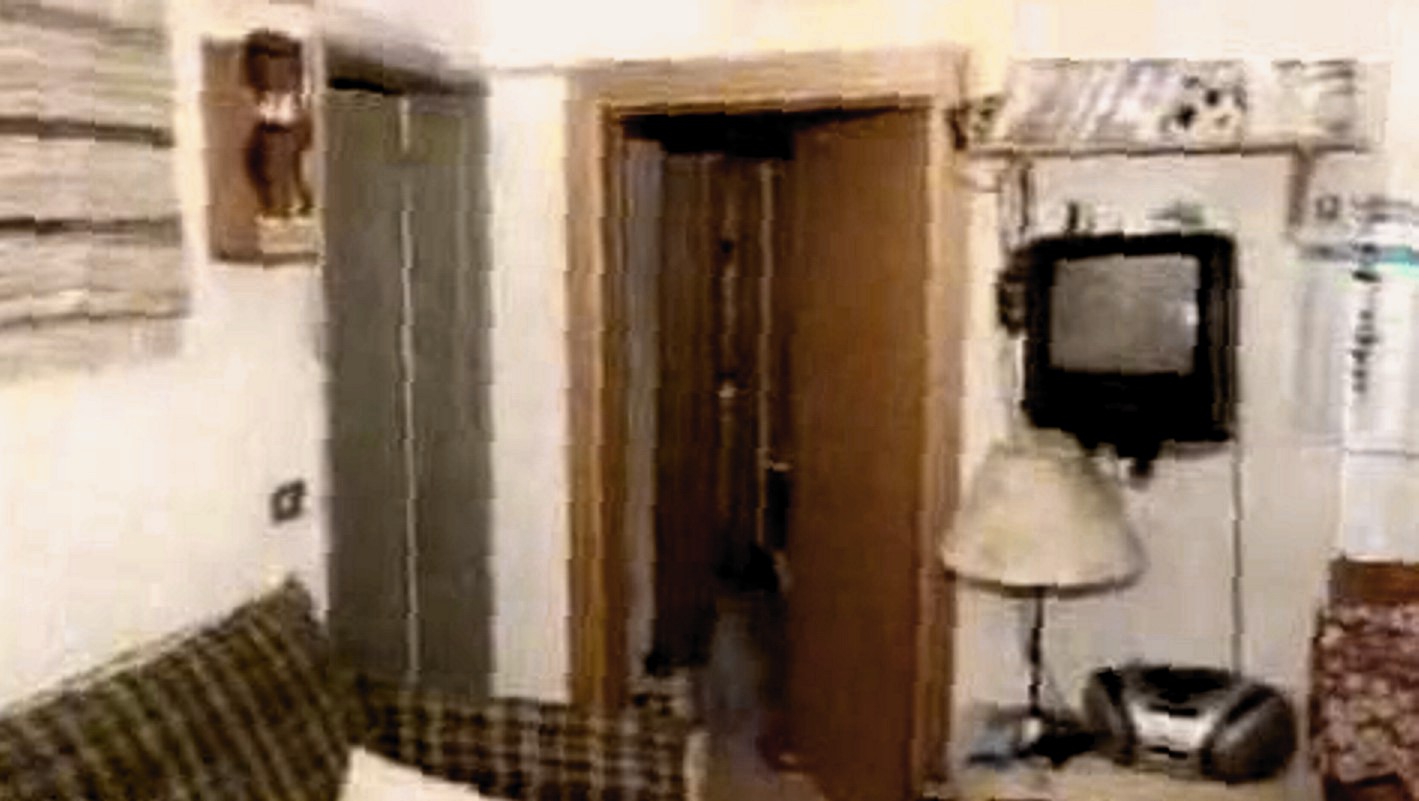
[Above, we can see Filomena’s grey door, at hard left; ahead are Meredith’s & Knox’s bedrooms]
Do please bear in mind that this appeal was initiated by Knox and Sollecito, and the verdict, sentence and sentencing report they dispute is Judge’s Massei’s from the 2009 trial.
The subject of one of Dr Crini’s focuses - whether or not Filomena’s door was open at the various times Knox and Sollecito stated they went to the women’s apartment on the morning-after ““ is a crucial one, relevant to proving Knox’s and Sollecito’s lies and obfuscations.
Wasn’t the staged break-in to Filomena Romanelli’s room glaringly obvious? In the early morning of November 2nd, 2007? In spite of the Knox/Sollecito obfuscations? There is much information in Massei on this question, pointing to many very obvious obfuscations.
Now, for the legal requirements of beyond-reasonable-doubt (BRD) actual, literal quotations are needed. Much relevant information can easily get “˜lost in translation’ not only at the superficial level of paraphrase, as in “They said that”¦..”, but also at the more subtle level of the formats used for quotations.
Some of the Massei Report as translated consists of the actual oral quotations of witness statements, some are quotations of the content of written documents, but some consist only of paraphrases of both oral statements and of written documents.
For some quotations, especially nested-quotations the translation uses various formats, beginning either with a comma or an apostrophe, ending with an apostrophe, and, in my copy, some back-slashes.
This mixture can be confusing to some readers, and Knox and Sollecito are seasoned veterans of exploiting such translational losses. That is a major factor in their continuing obstruction of justice: using chronic obfuscation.
He said, “She yelled, ‘I’m going to kill you.’ “
This quotation-format has been substituted in this post where it seems appropriate. It is hoped that when this format is used only to indicate editorial irony it will be self-evident.
John Follain and Will Savive also make a number of relevant references, and so do some Wiki articles whose authors are too modest to identify themselves though “˜Underhill’ has been mentioned as a co-ordinator.
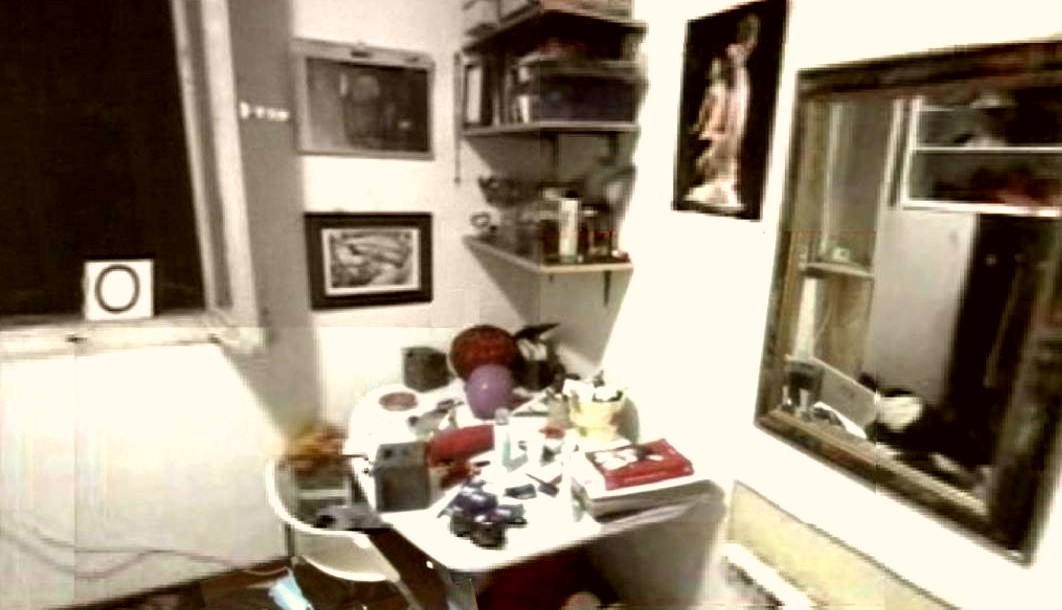
Of course, the members of the Florence Appellate Court have access-to, have probably already read, thousands of pages of evidence, including the actual verbatim witness-transcripts, and that Court will make up its own mind independent of what is written elsewhere.
Here are some of the Massei “˜door’ instances - this is a selection of a relevant 6 out of a grand total of 192 instances:
Massei Page 28: [Amanda Knox and Raffaele Sollecito ““ said that they were waiting for the carabinieri whom they had called since “coming back to the cottage in the morning because they had been away for the night” and finding “the entrance [15] door open and then the window broken” (see declarations by Battistelli, hearing of February 7, 2009, page 64).]
Access to the Court Records would help us better-understand this passage, but Follain (Page 67, Kindle location 939), indicates that Battistelli is actually quoting Sollecito, substituting “˜they’ for “˜we’, so it seems that Sollecito was already obfuscating the facts, encouraging the inference that their shocking observations began only when both he and Knox arrived together and discovered together both the open apartment entrance-door, and from inside Filomena’s room, the broken-window, so we are all being steered away, by Sollecito, from the true answer to our question.
Massei Pages 29-30: [Around midday(Nov, 2nd, 2007), at ten past twelve, when they had not yet arrived at the car park of the Fair, and she(Filomena) was in the car with her friend Paola Grande, she received a phone call: it was Amanda letting her know that there was something strange. She had arrived and had found the door open: she had had a shower and it had seemed to her that there was some blood; moreover she said that she was going [17] to Raffaele’s place (declarations of Romanelli page 31, hearing of February 7, 2009).
To her (Filomena’s) question about where Meredith was, she had answered that she did not know.]
Filomena had apparently not been told by Knox, in this 1st phone-call, about the broken pane, the stone, and the bedroom-disarray, as if Knox was not yet aware of these stunning facts. The obfuscation continues.
Massei Page 30: [Marco Zaroli, who was without a car because Ms. Romanelli had taken it, had called his friend Luca Altieri and they had gone together to the house in Via della Pergola, where they arrived around 1:00 pm, at almost the same time as Filomena Romanelli and Paola Grande. In the house there were the also the two present accused and ““ as we have seen ““ Inspector Battistelli and Assistant Marzi. The presence of the latter two was linked by Ms. Romanelli to what Amanda had told her about the open door, the broken pane, her own room in a mess.]
When Knox first told Ms. Romanelli about her visit, she had omitted reference to Laura’s and Filomena’s doors, whether they were open, whether they were openable, whether Knox opened them, and whether Knox looked inside and saw the broken pane, the stone, and the bedroom-disarray. It is implausible that Knox tried only Meredith’s door and not the others.
It is also implausible that Knox even took a shower at the women’s apartment, colder as it was than Sollecito’s. Amy Frost testified that hours after the body was discovered Amanda Knox told her that she never took the shower, because when she noticed the blood that had stopped her from showering.
The Postal Police commented that Knox also emanated an unpleasant, “˜post-shower’ odour, inconsistent with Amanda having recently had a shower anywhere, implying Knox was lying about taking the shower.
Knox is steering Ms. Romanelli away from these crucial facts which logically demanded that their “˜discoverer’ flee (again), and call the Police. Knox is obfuscating by selective piece-meal feeding-of-the-facts to Filomena.
Massei Page 38: [On the day of November 2, 2007 at police headquarters, Amanda was also there and she said that that night she had been with her boyfriend Raffaele and that the next morning at around 11:00 am she had gone back home to get changed. She had found the entrance door open and this seemed strange to her: she had gone into the house and into her room and she had taken a shower and had seen drops of blood.
She said that after the shower she got dressed and noticed that Meredith’s door was locked. She went into the other bathroom and said that there were faeces in the toilet. Then she went into another room and noticed that the window had been broken and that there was glass inside. She told these things to her and the other girls present. Then she related that she had gone back to Raffaele’s house and had rung Filomena. She remembered that on that occasion at police headquarters Raffaele was very calm, silent.]
When Knox first called Filomena, Knox had omitted any mention of the most significant information - the (staged) break-in, as if she had not ‘noticed’ it.
Now, later, paraphrasing, Massei states: “Then she went into another room and noticed that the window had been broken and that there was glass inside.”
Had Massei not paraphrased, but had written “Then I went into Filomena’s room and ‘noticed’ that her window had been broken and that there was glass inside.”, we could use it as BRD evidence.
The actual, verbatim quote should be among the many thousands of Court Records relied upon by Massei; Nencini’s Court should use such Record in reaching its decision.
Massei Page 65: [Upon returning home, she [Amanda] noticed that the door was wide open. She thought someone had gone to take the trash out or gone to the floor below, closing the door behind them but not locking it. She asked loudly whether anyone was at home, but no one answered. The door to Meredith’s room was closed, and this meant she was sleeping. She undressed in her own room and took a shower in the bathroom, (the one) nearest to (both) her room and to Meredith’s.
When she got out of the shower, she realised that on the little bath mat where she had placed her feet, there was blood and also, there were drops of blood on the sink and the faucet. She left the bathroom and went to get dressed in her own room. Then, she went in the other bathroom to dry her hair, where there was a blow dryer. It was at this time that she noticed feces in the toilet, which surprised her. She then took the mop and returned to Raffaele’s home, locking the door (on the way out.)
She told Raffaele what she had seen and he suggested that she call one of her friends. She then called Filomena Romanelli, who said that she had been out with her boyfriend and that Laura Mezzetti was also away, in Rome with her family. She then realised that the only one to have spent the night in Via della Pergola was Meredith, about whom, however, nothing was known. Filomena seemed worried, so Amanda (Page 66) told her that she would call Meredith, who would then call her back.
She then called the two cellphones that Meredith had, but without getting any response (from her). She then returned home, this time with [55] Raffaele. Upon returning home, she opened the door to Filomena Romanelli’s room and saw that the window was open and completely broken: there was chaos, “šbut her computer was in its place on the desk.”› Convinced that there had been a burglary, she went into the other rooms: Laura’s room was in order, and nothing was missing from her own room.
However, Meredith’s door was closed. She began to knock and to call out, without receiving any answer. She was then seized with panic and went on the balcony to see if she was able to see anything, but she couldn’t see anything. She went down to the apartment below to ask someone, but no one was there. She therefore went back inside and Raffaele said that he wanted to try to break down the door of Meredith’s room, but he wasn’t able to. It was then that they decided to call the police, which is what Raffaele did. She let Filomena know about this, asking her to come home.]
Now, only after returning “home, this time with [55] Raffaele.” does Knox allege that she had then “opened the door to Filomena Romanelli’s room and saw that the window was open and completely broken: there was chaos, “šbut her computer was in its place on the desk.”
Knox continues to obfuscate by selective piece-meal feeding-of-the-facts.
Massei Page 66: [While they were waiting, two police officers arrived (at the scene) and she showed them all that she had seen. Then Filomena arrived with her boyfriend and two other friends, and they broke down the door of Meredith’s room.]
True. There are a number of other Massei references to Filomena’s door and room, but they are basically repetitive of information already in the above references.
This seems to be enough for Nencini’s Court to reach its verdicts re Knox and Sollecito.
[Below: the area from which Knox would have been looking at Filomena’s door]
